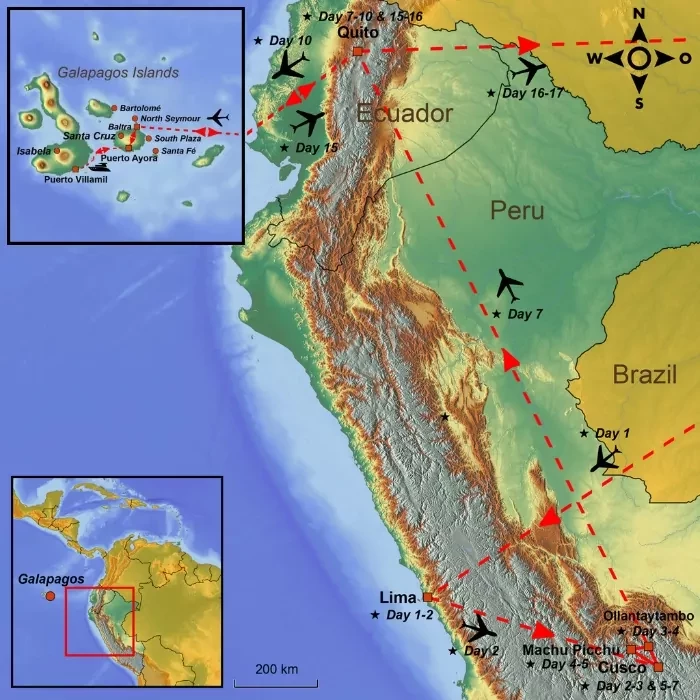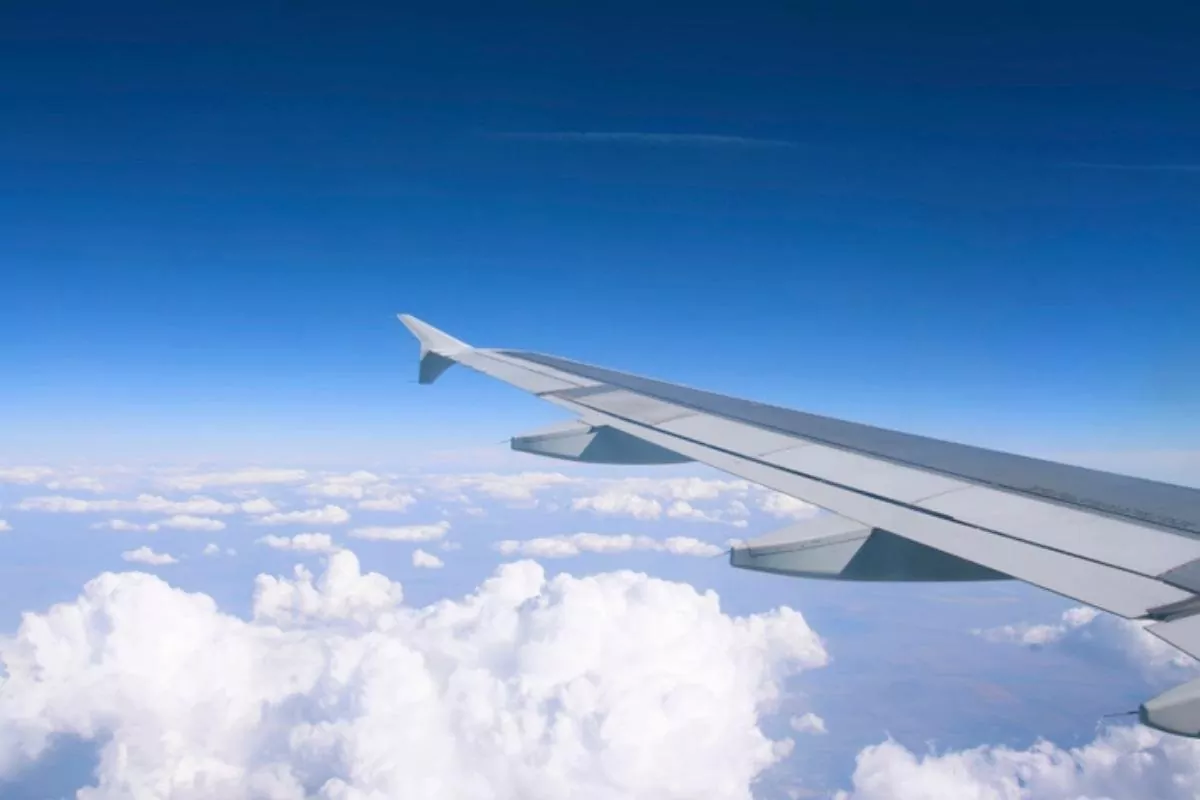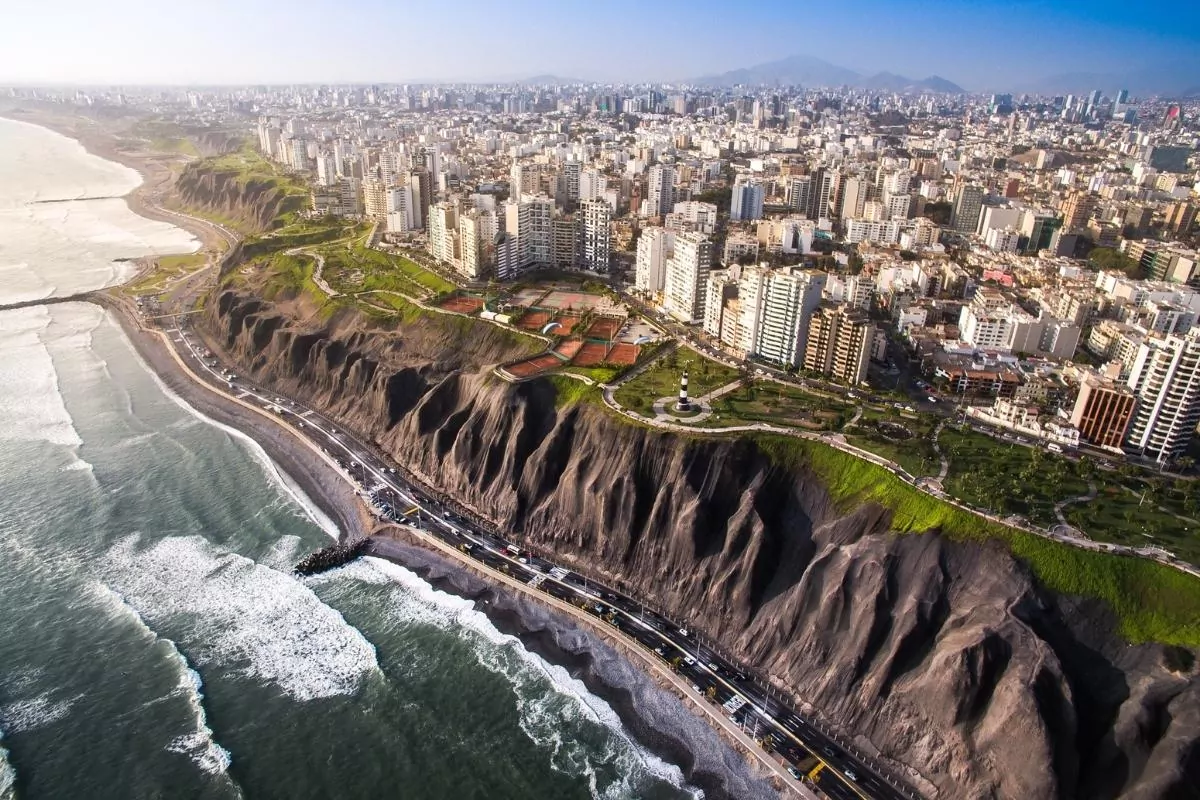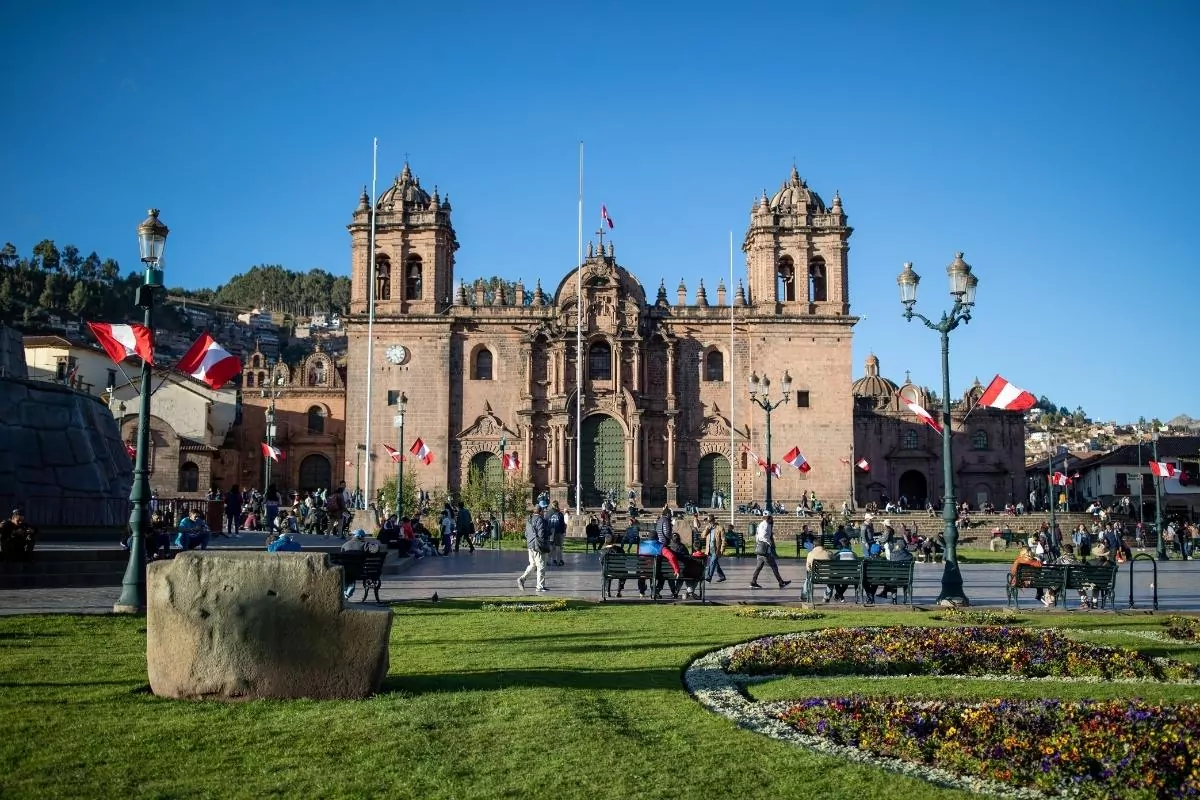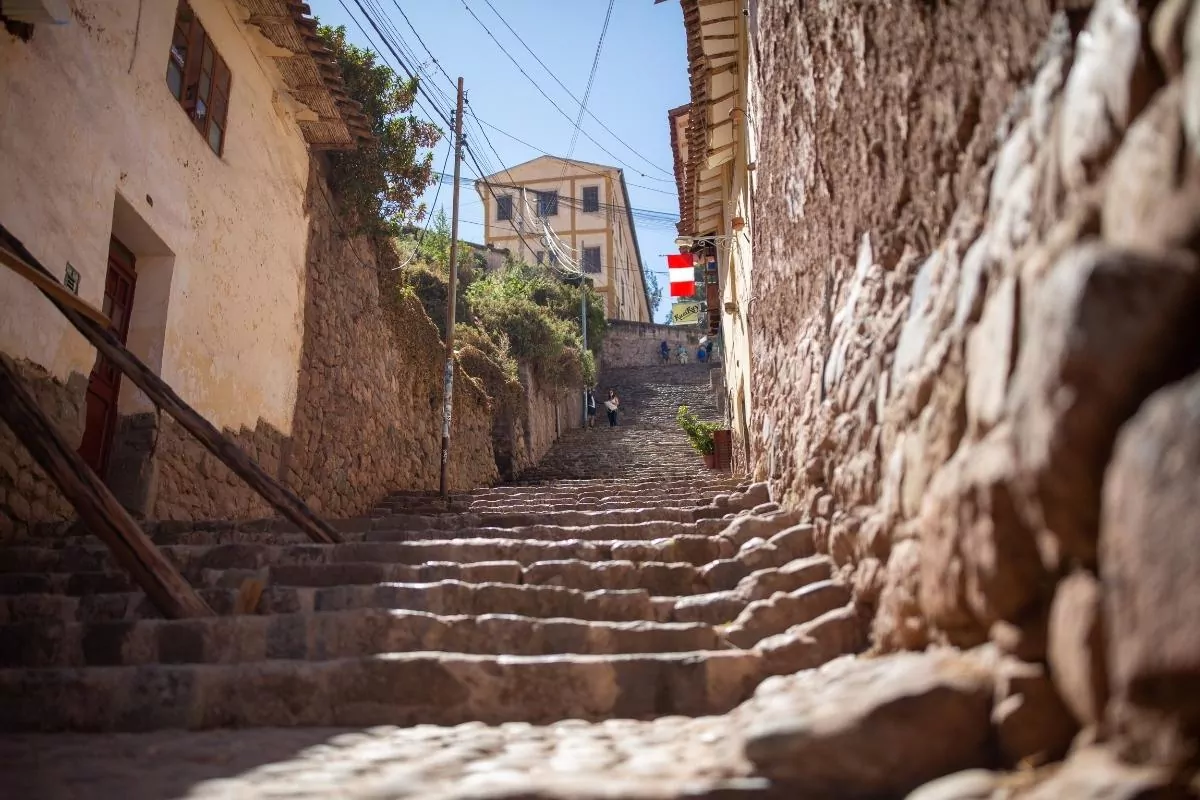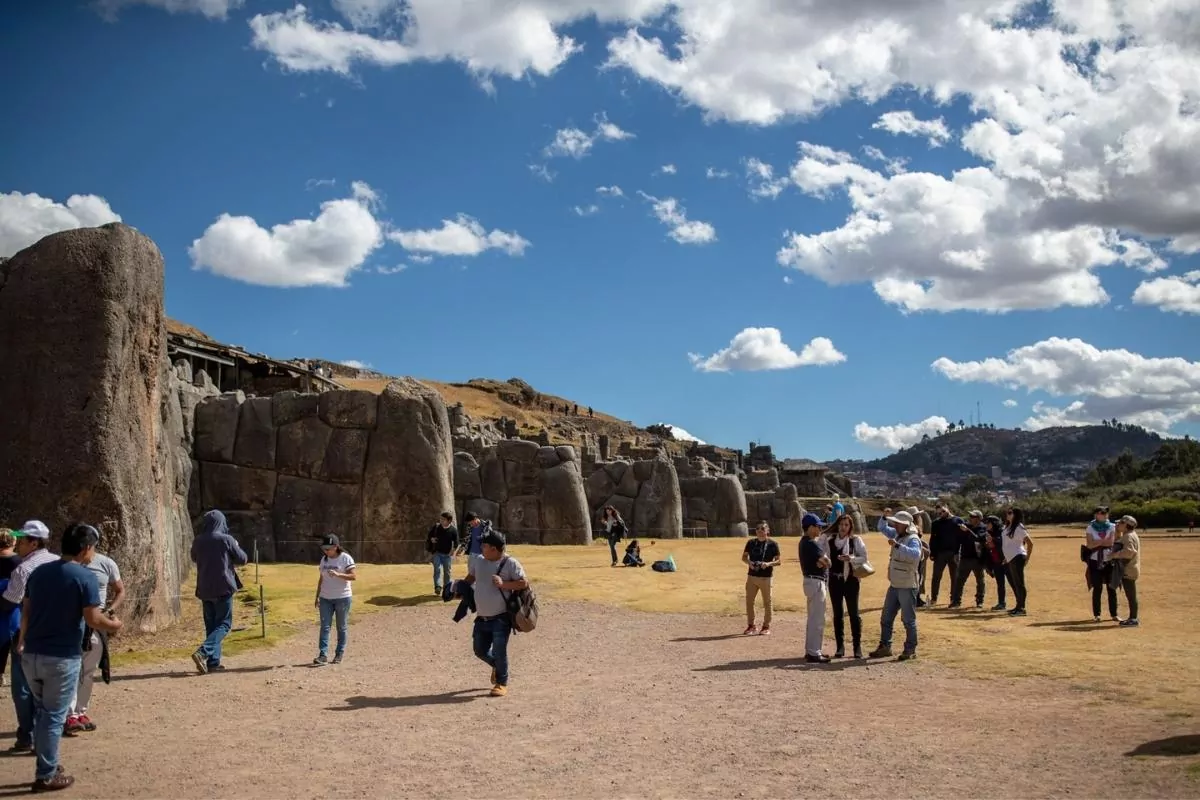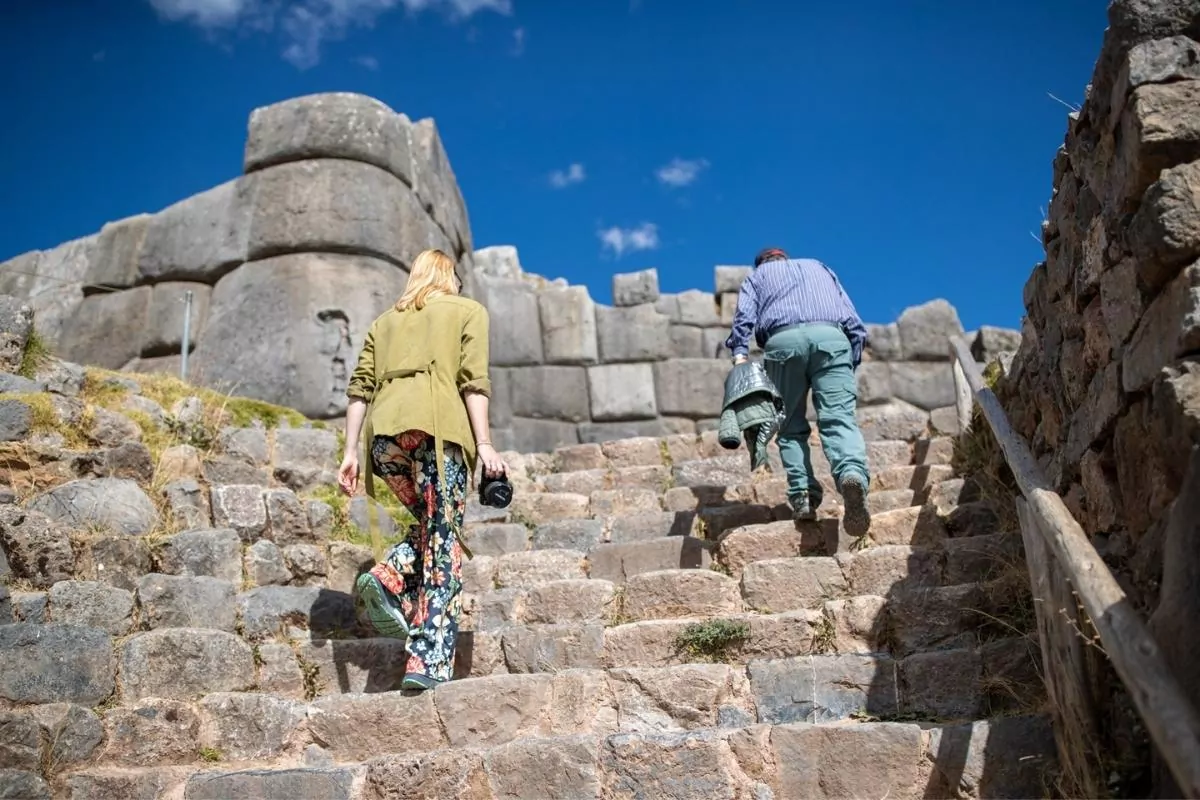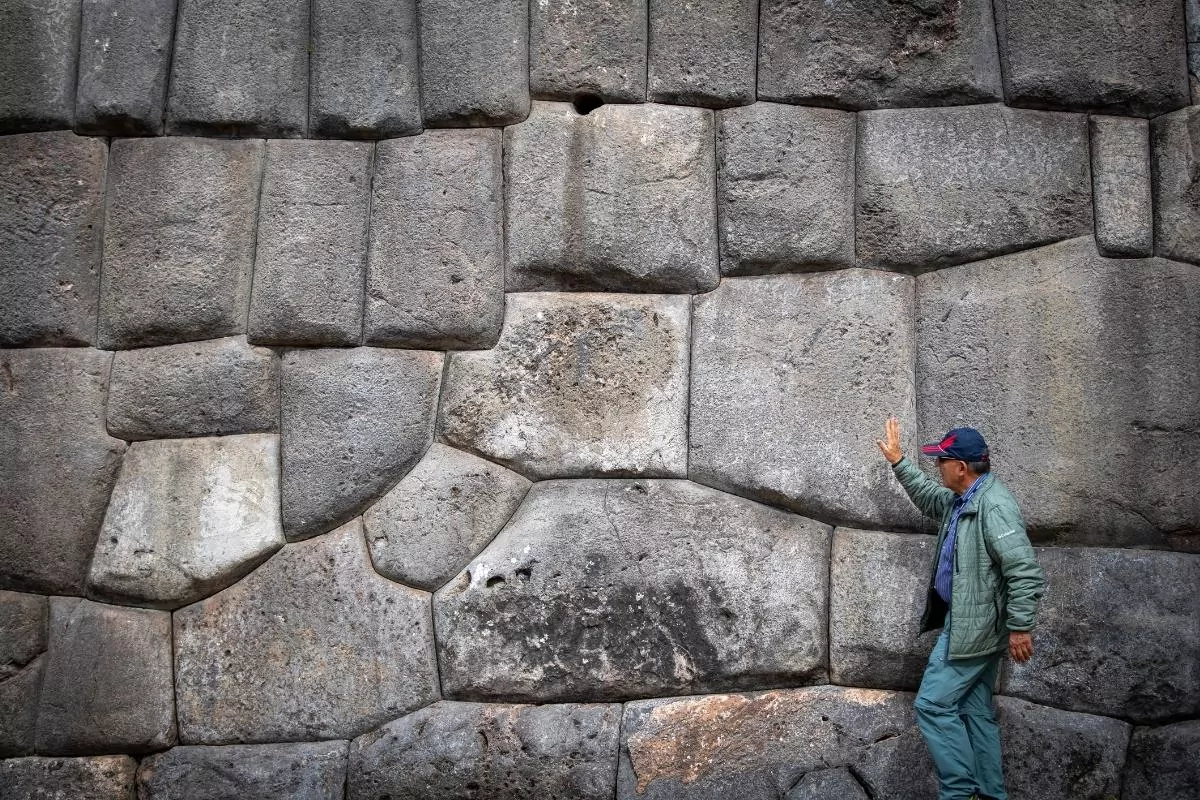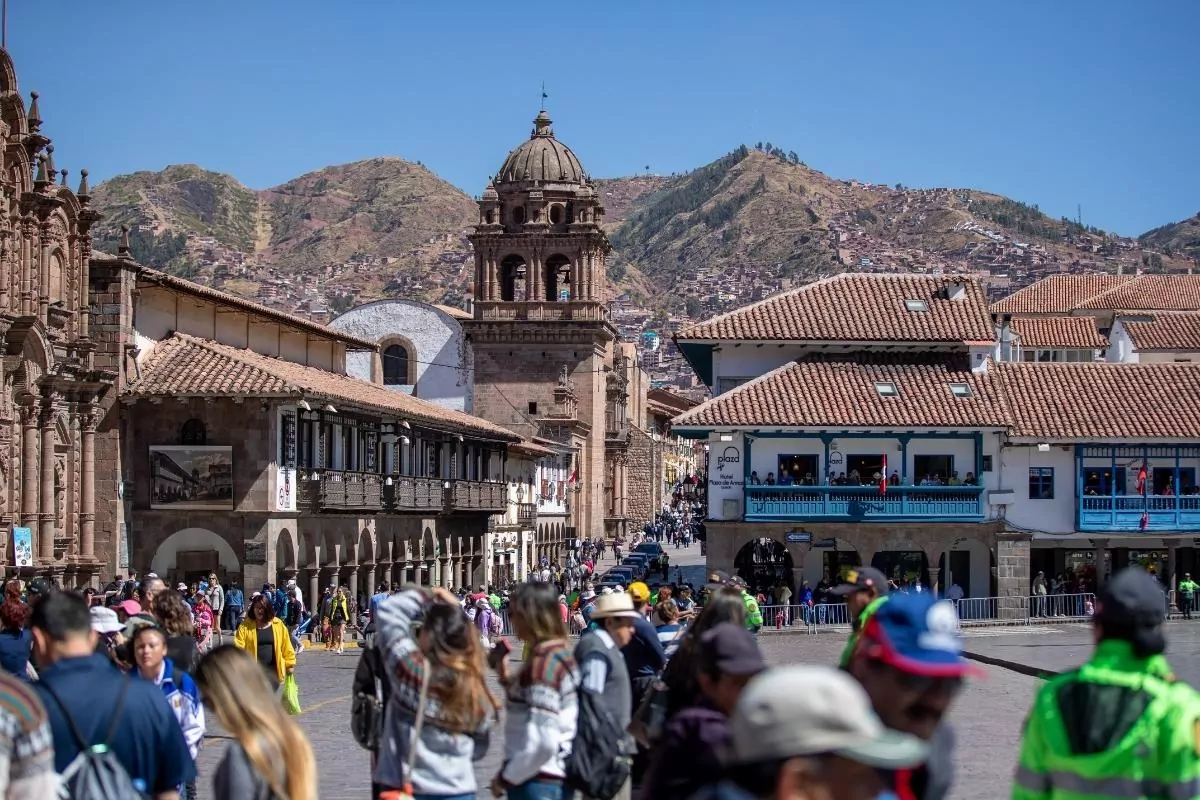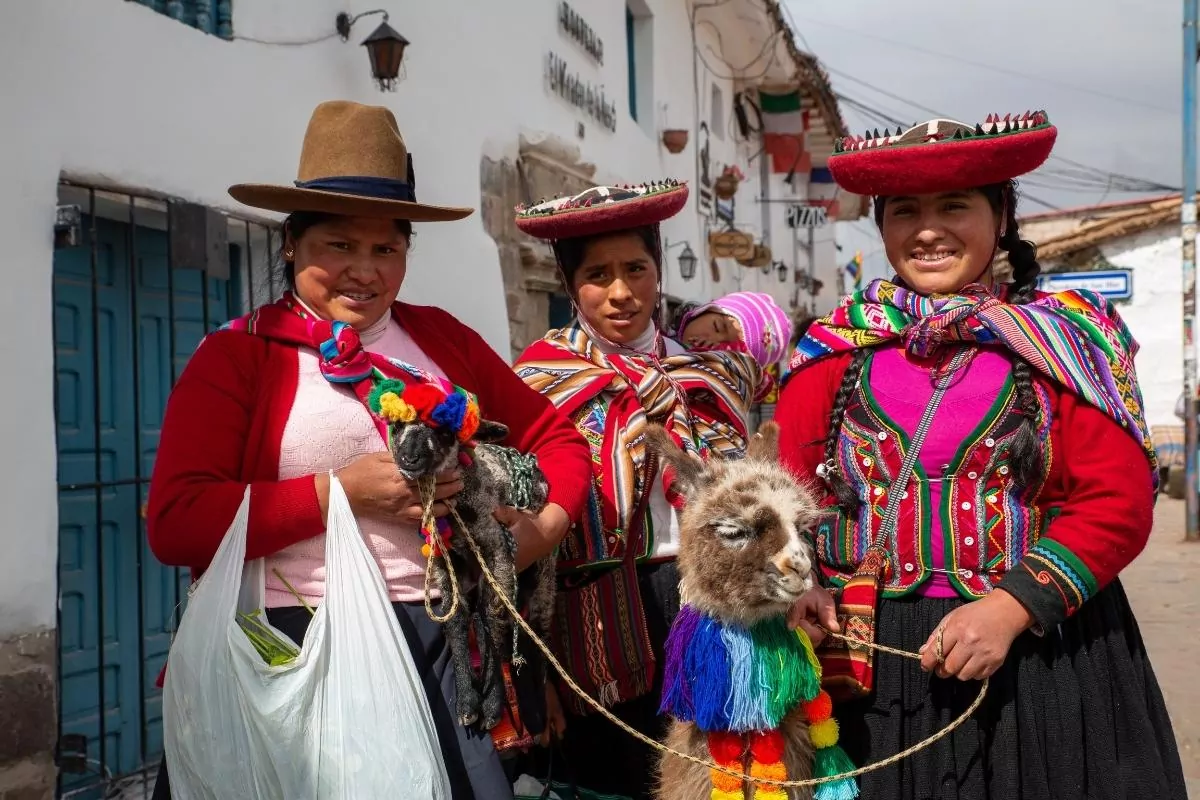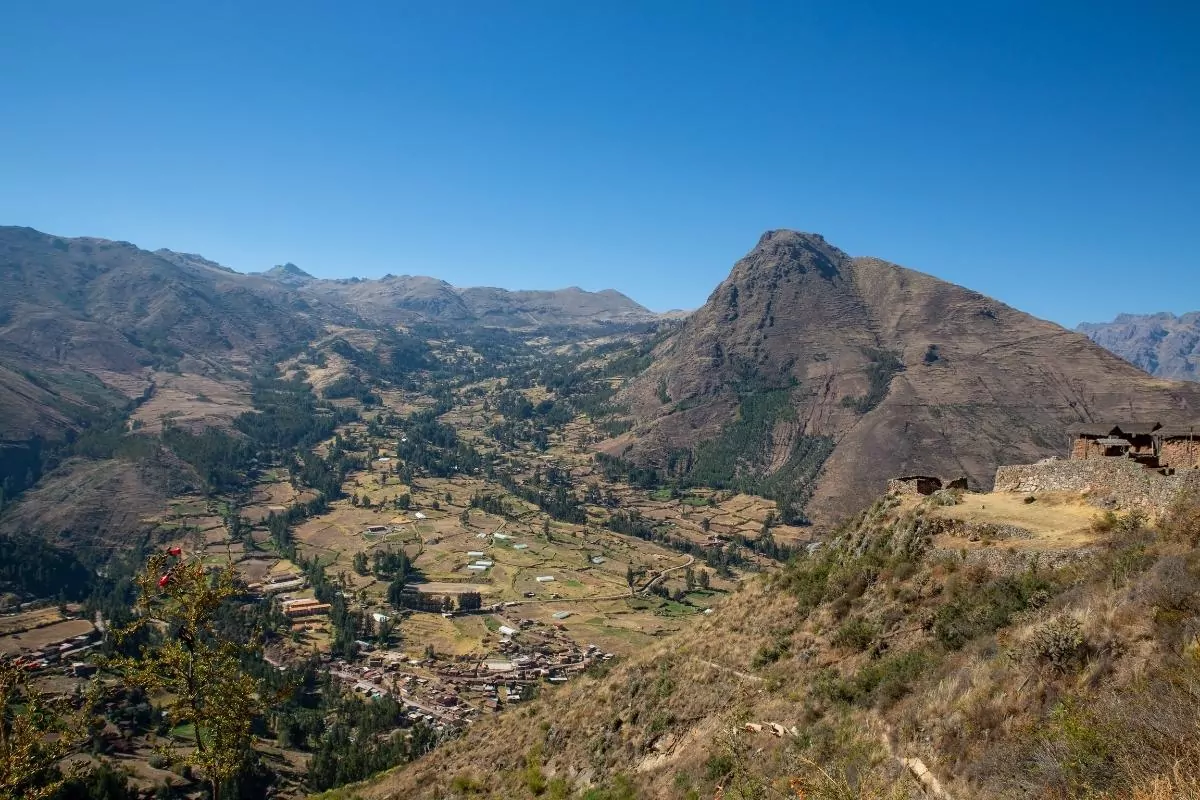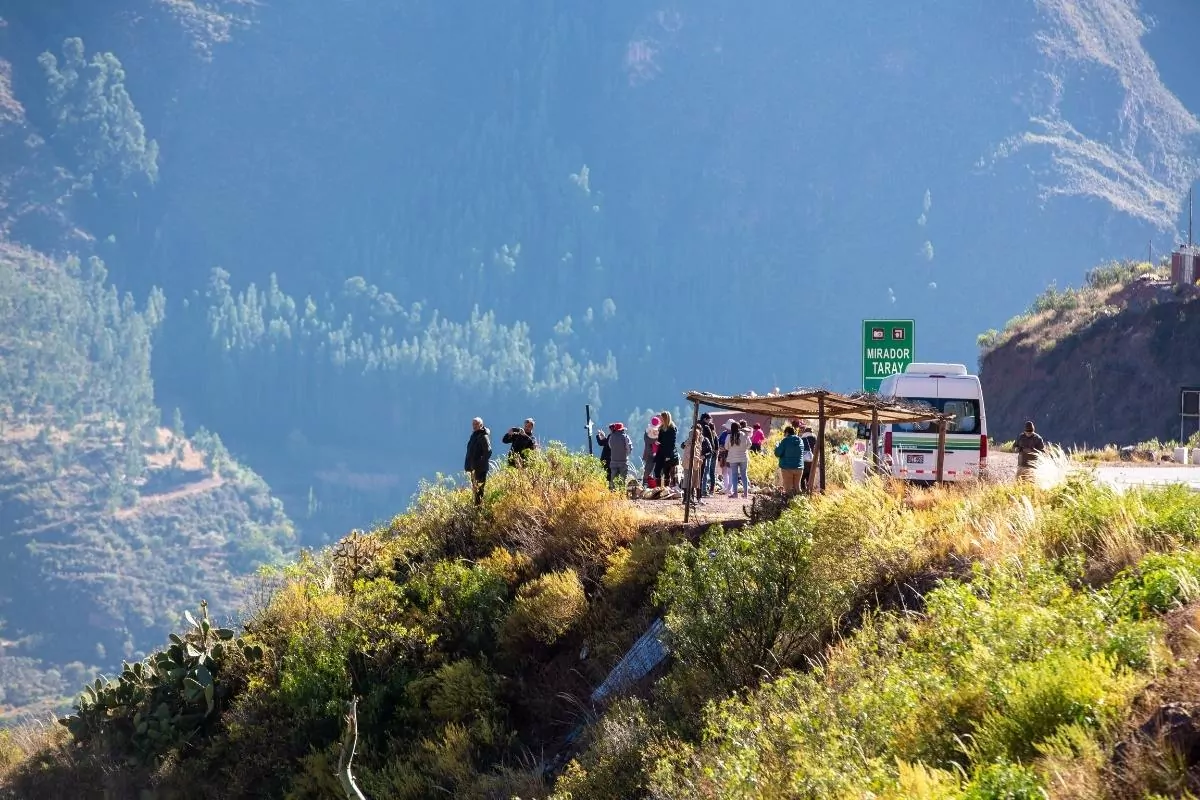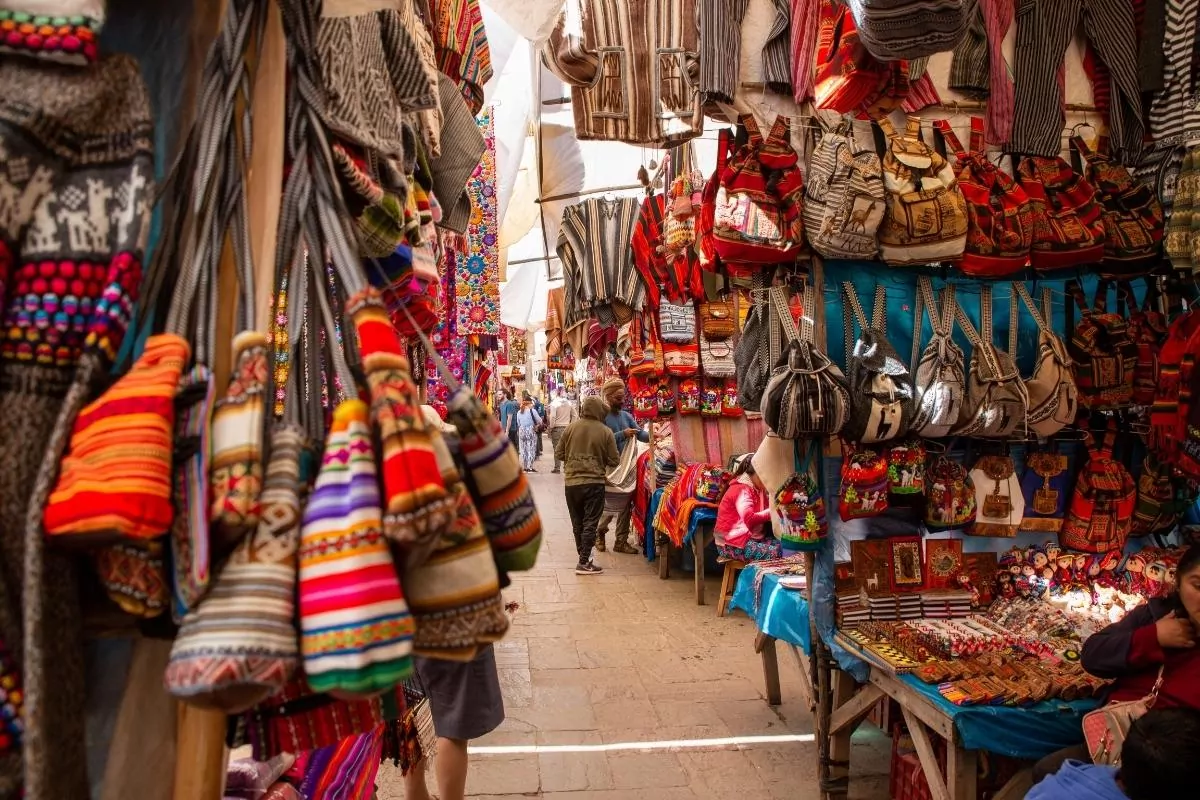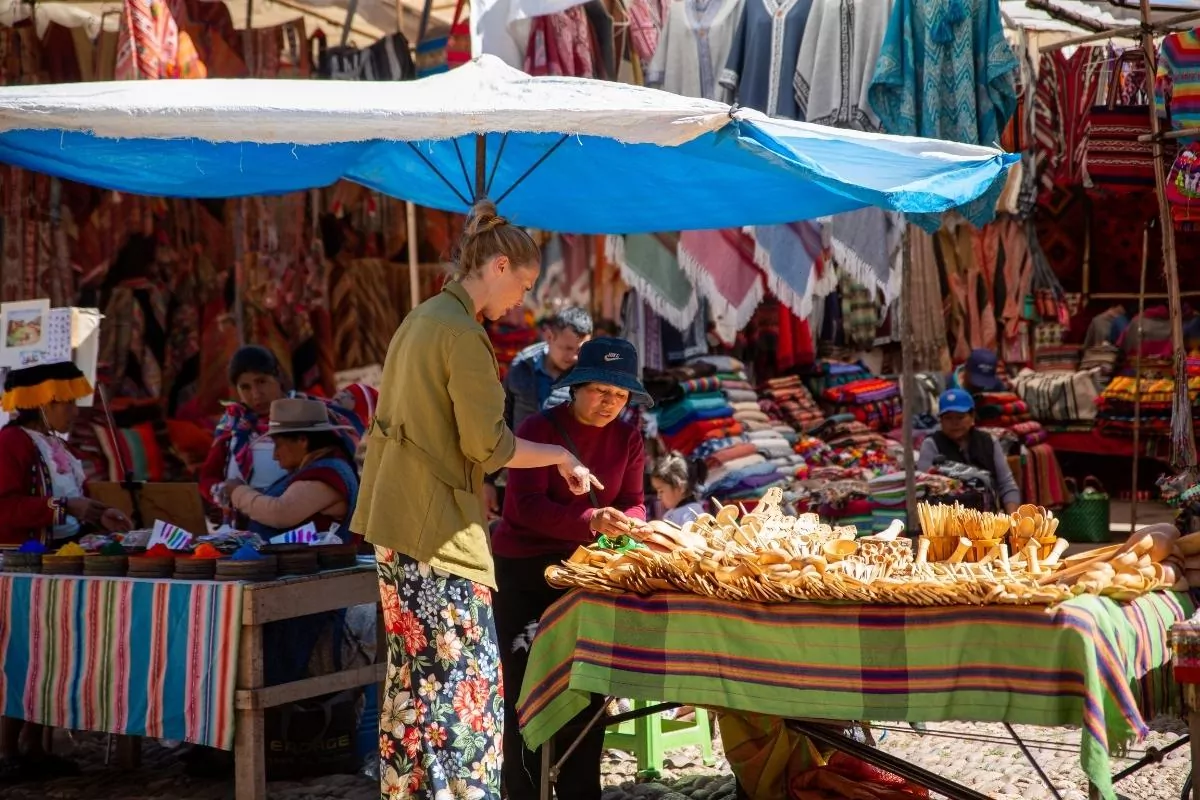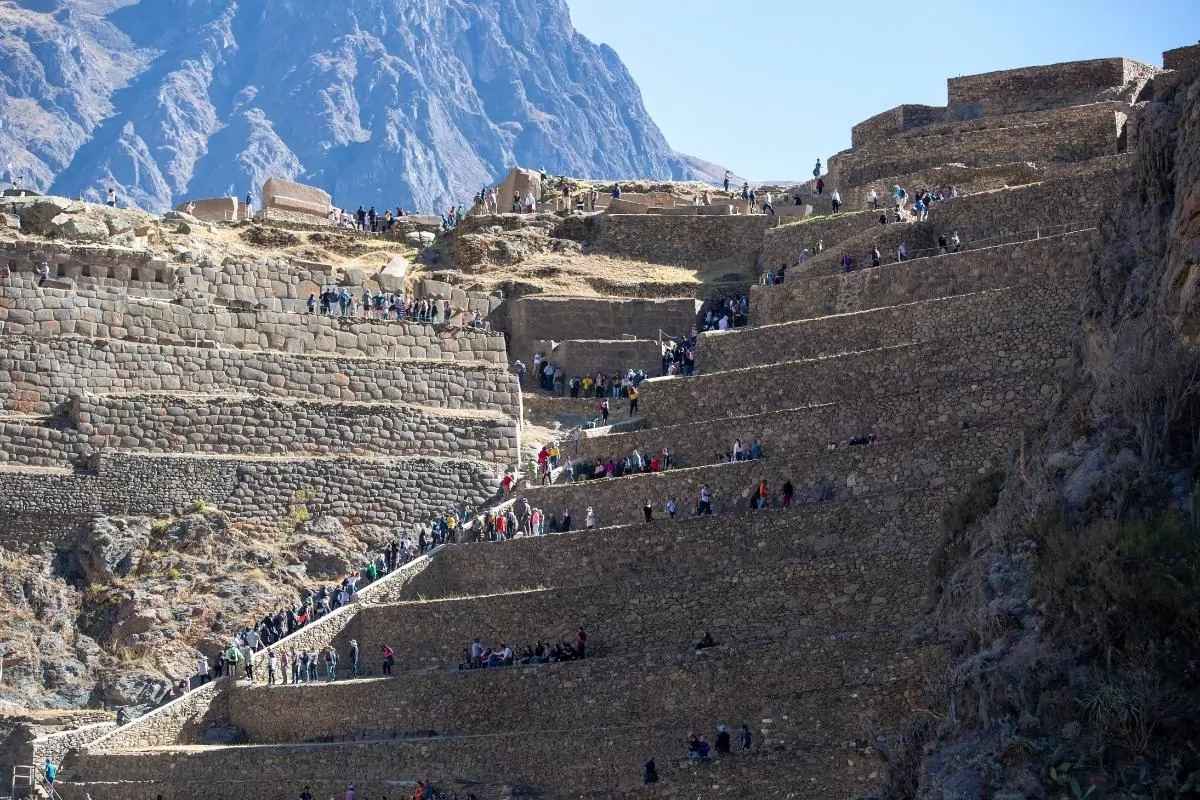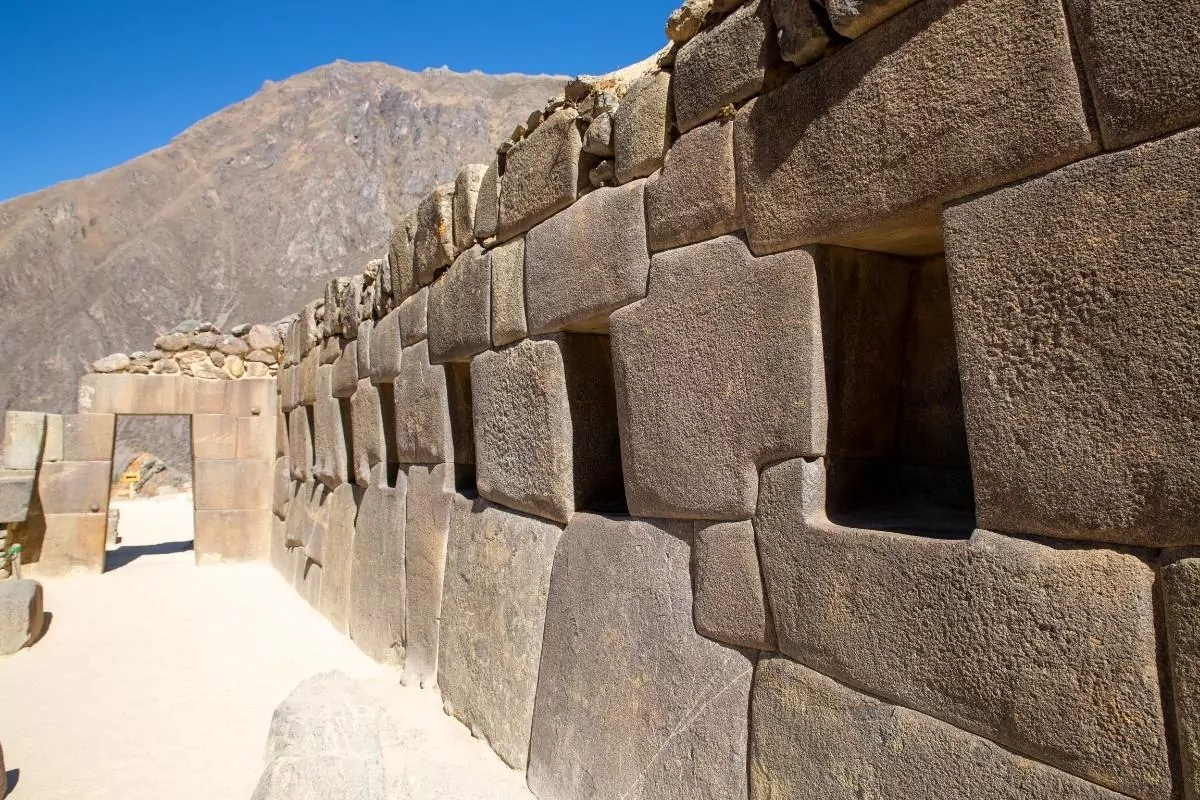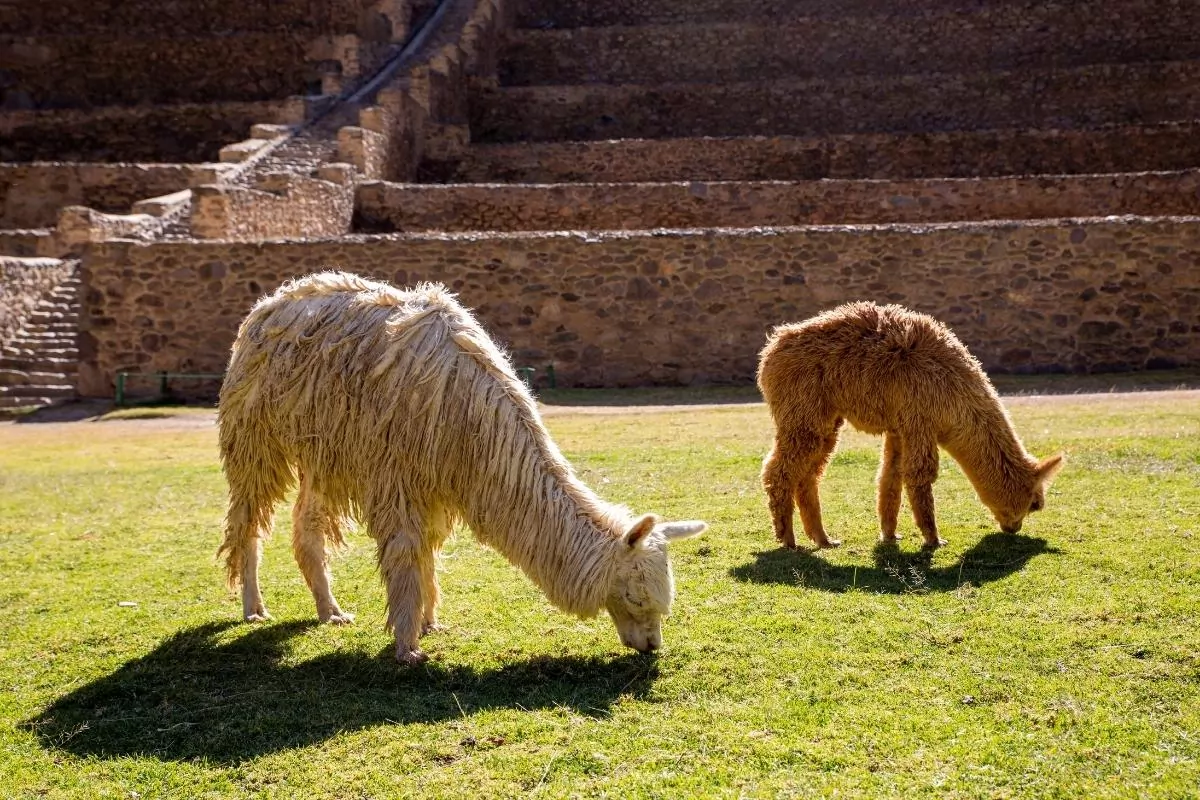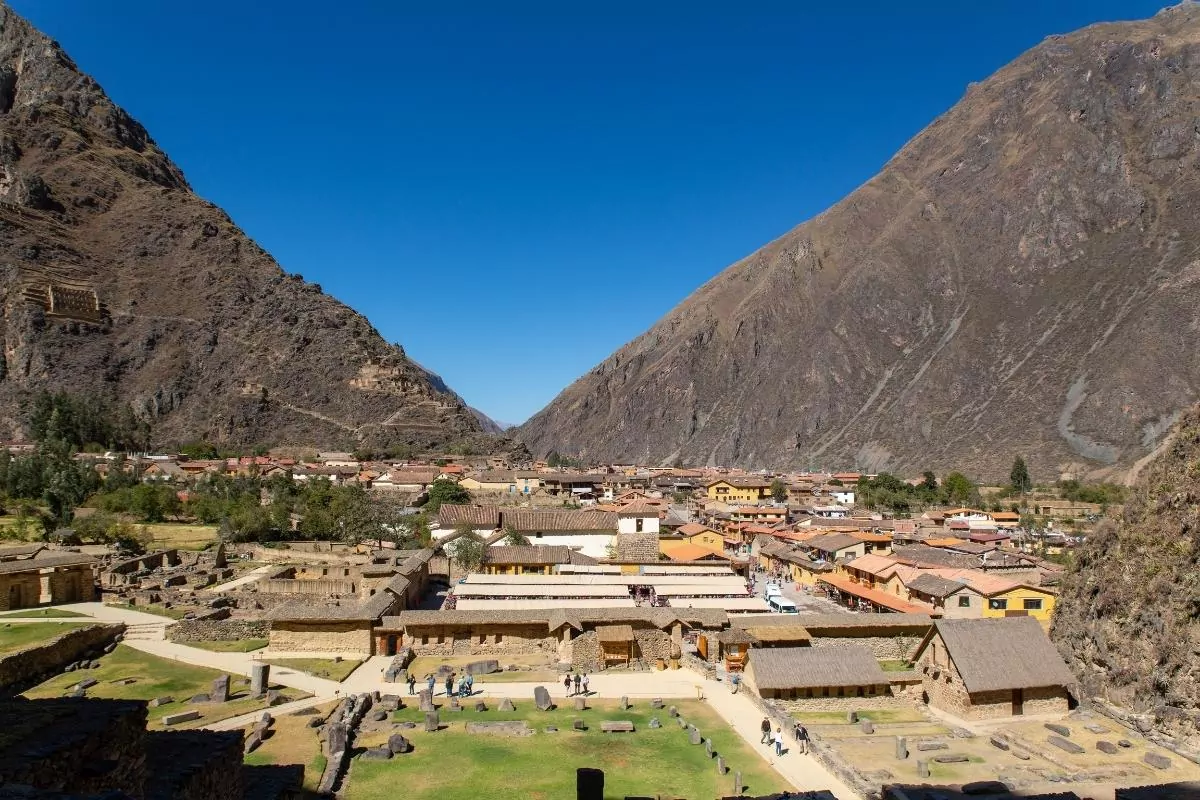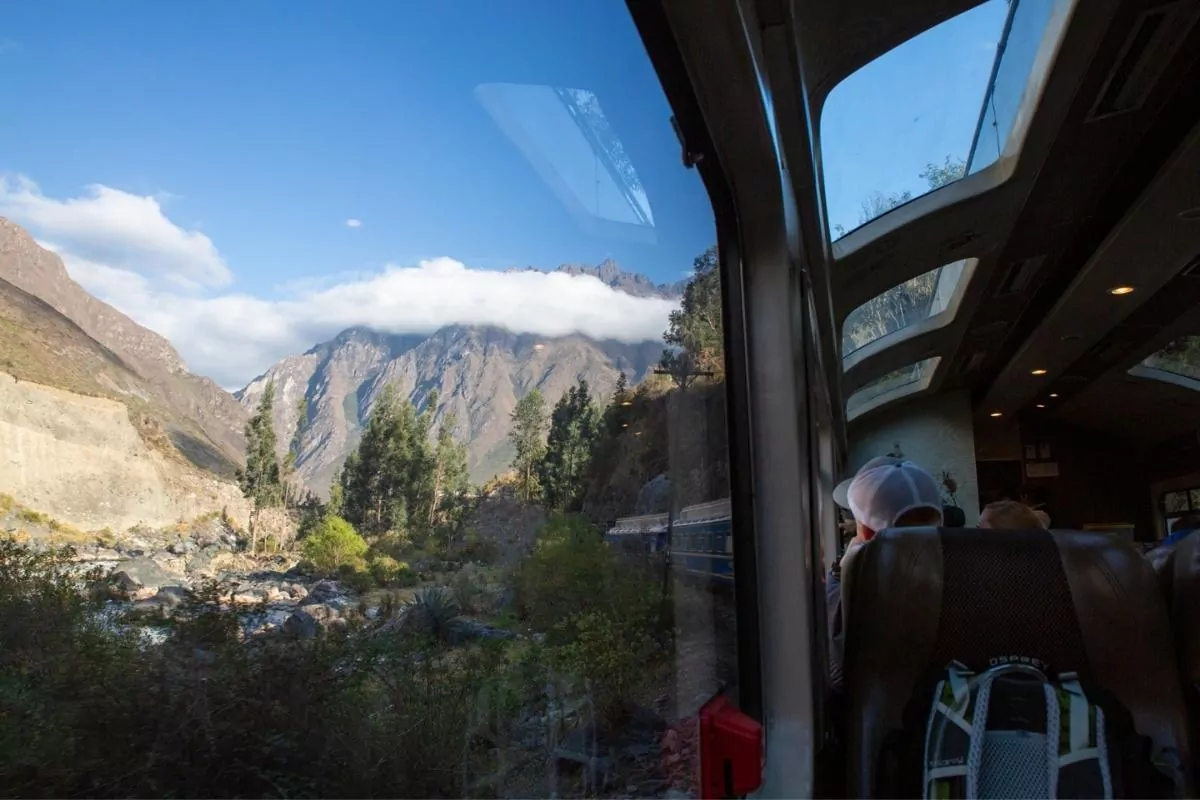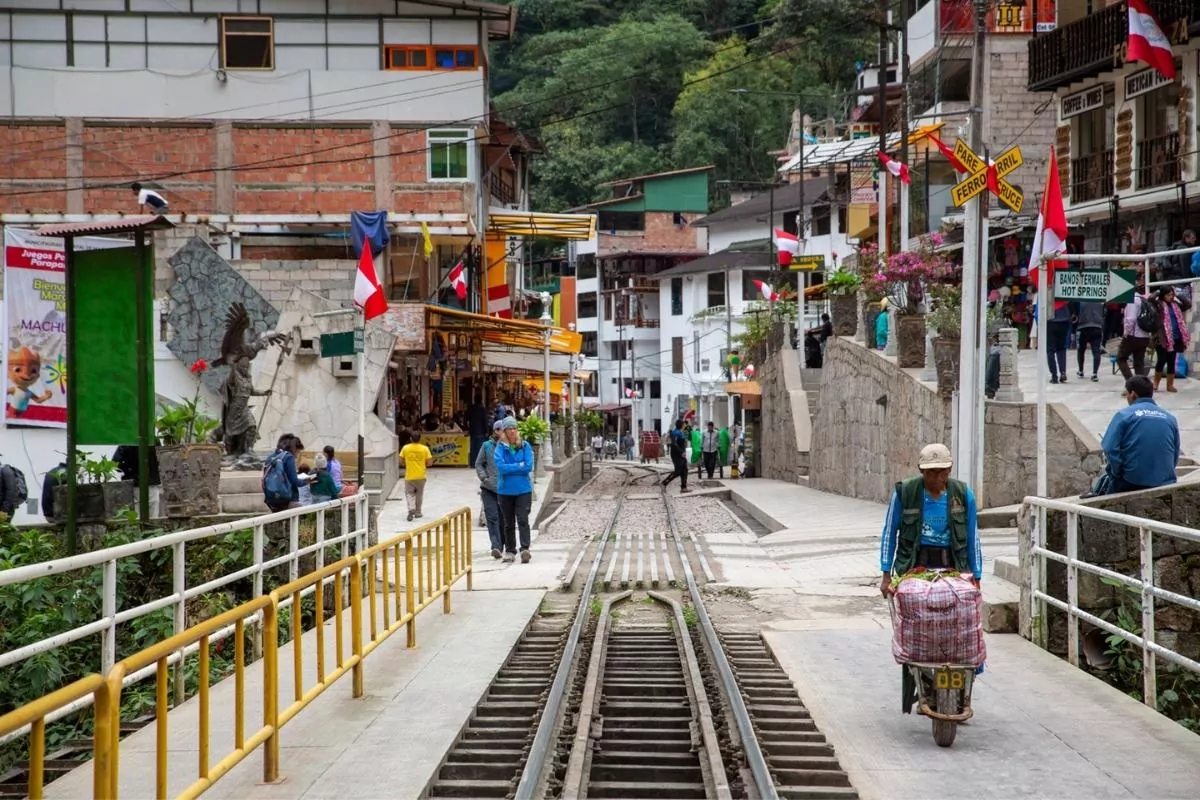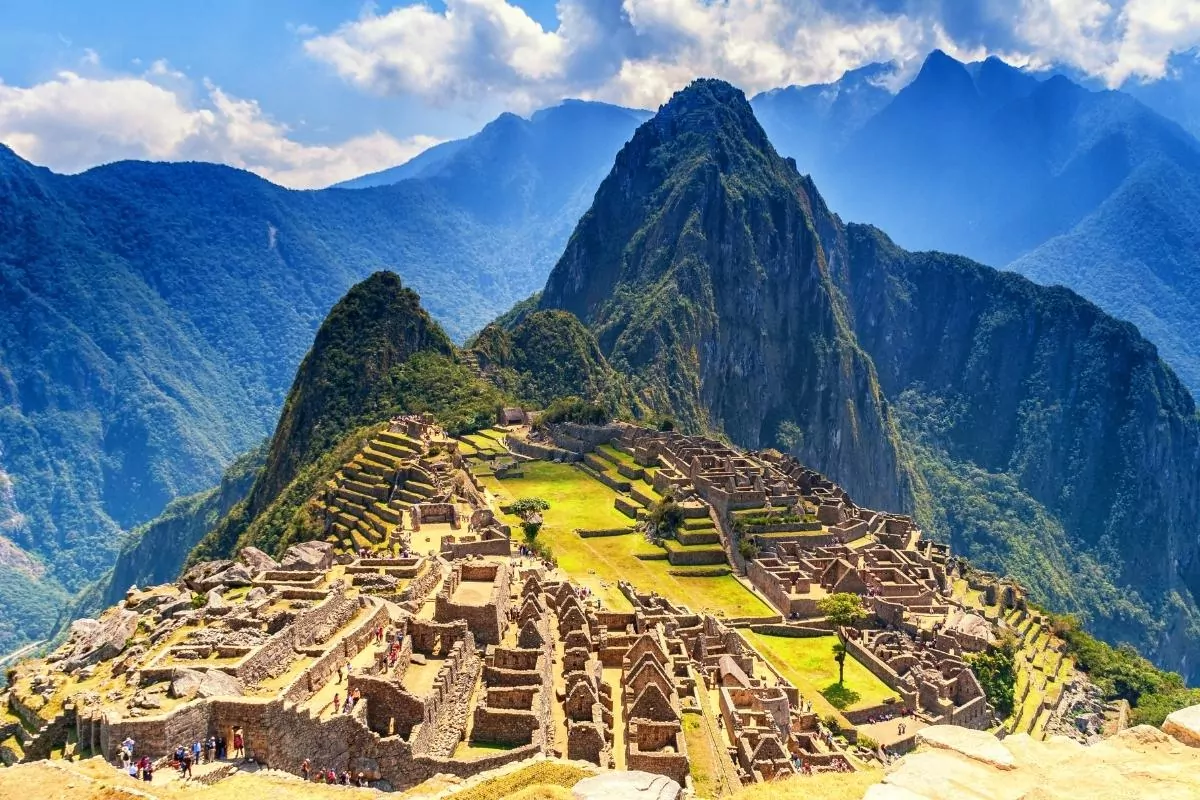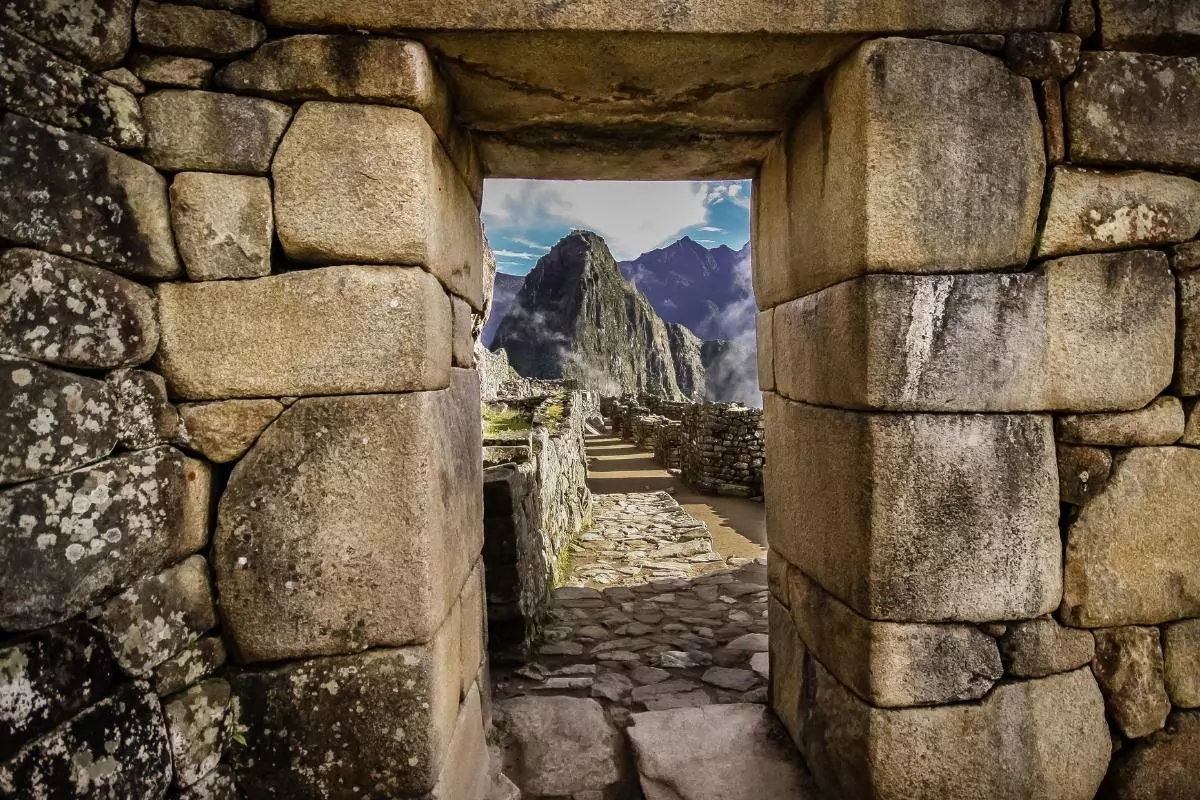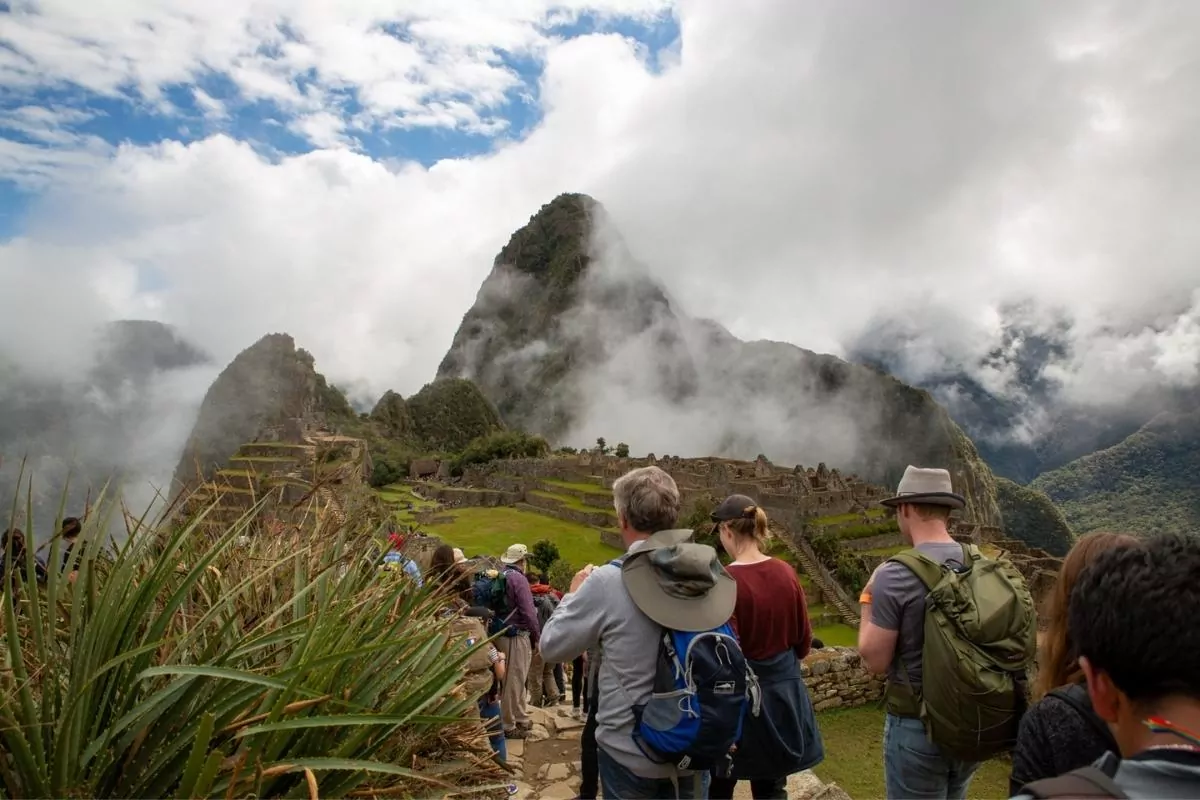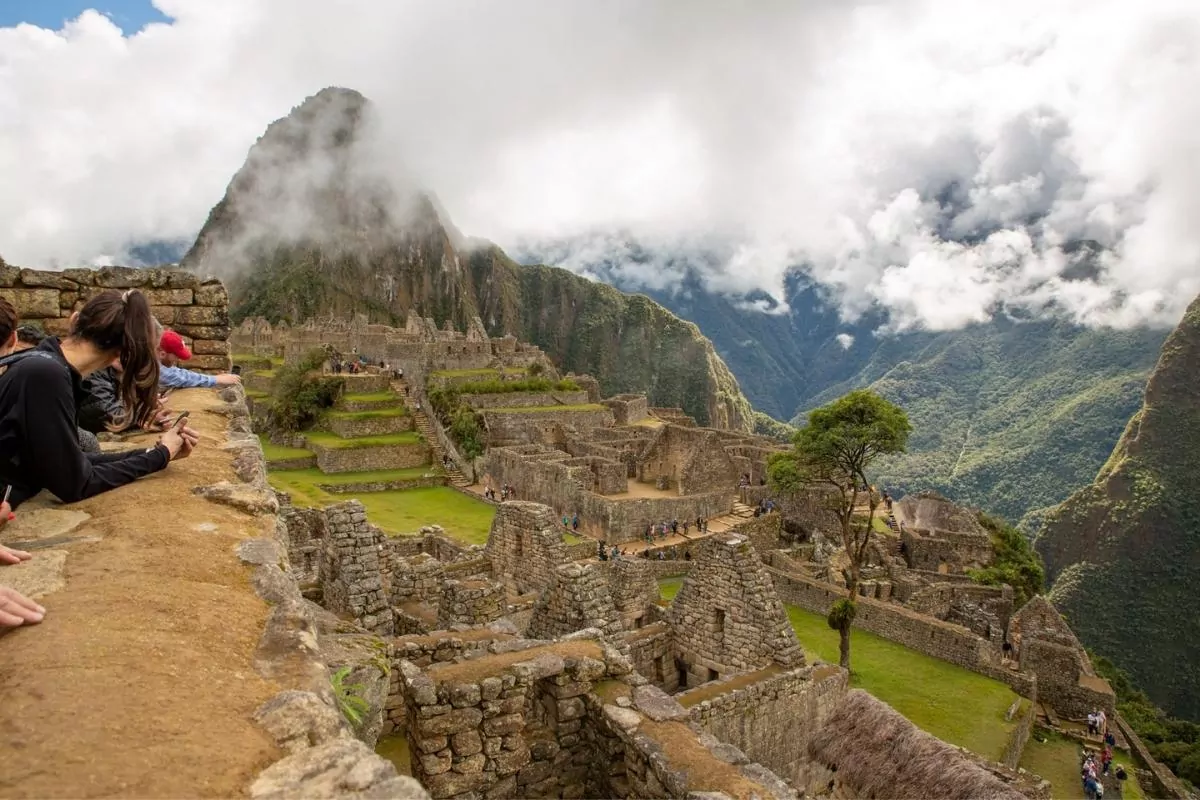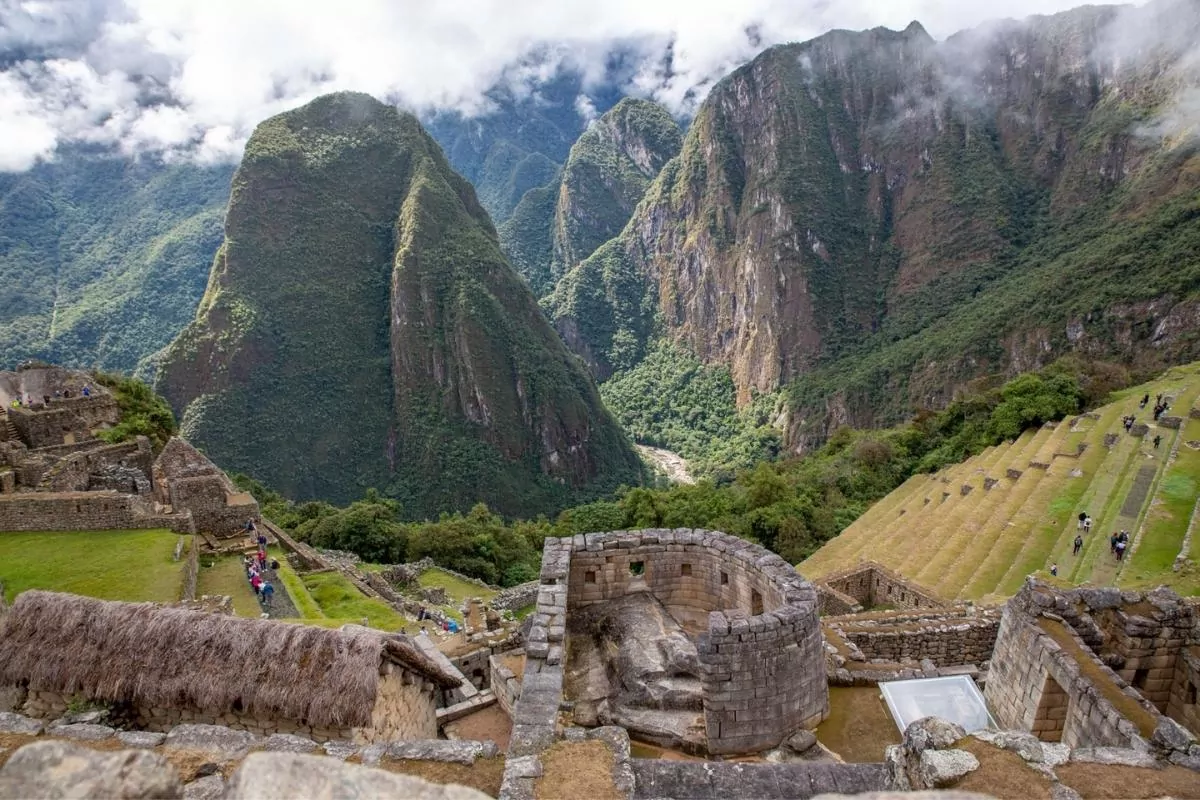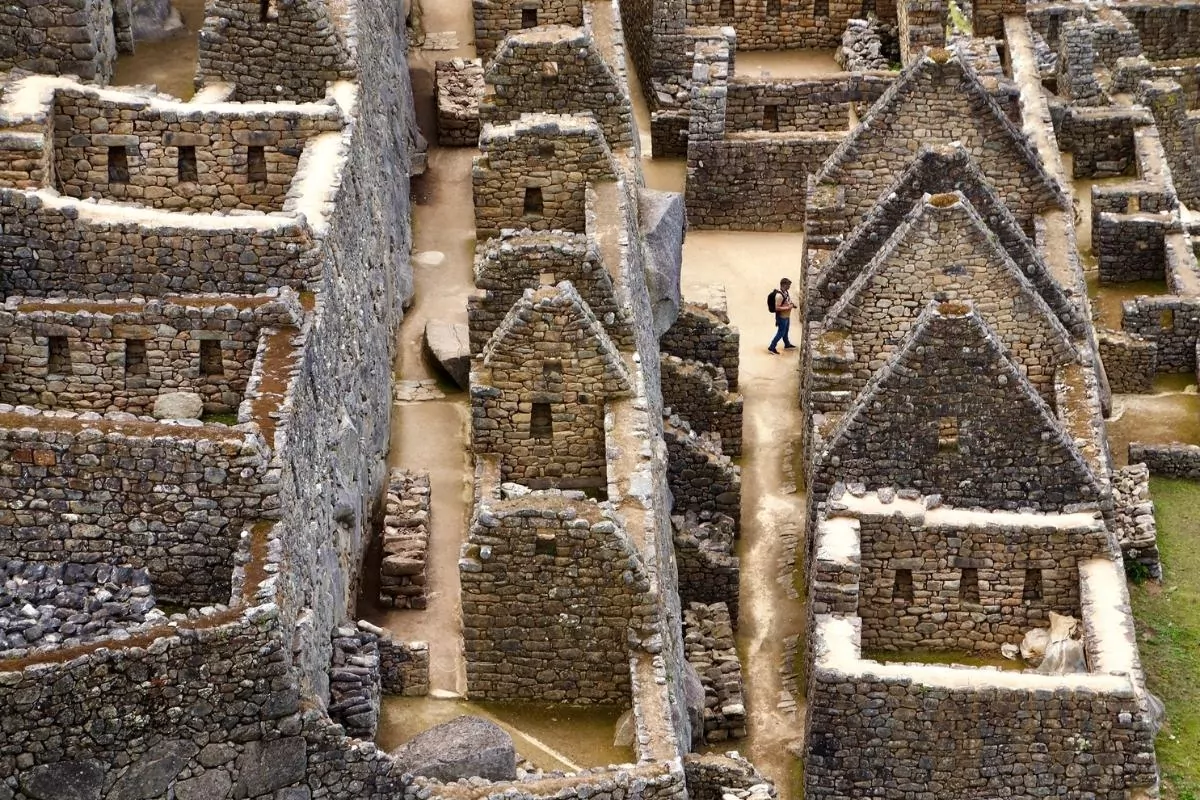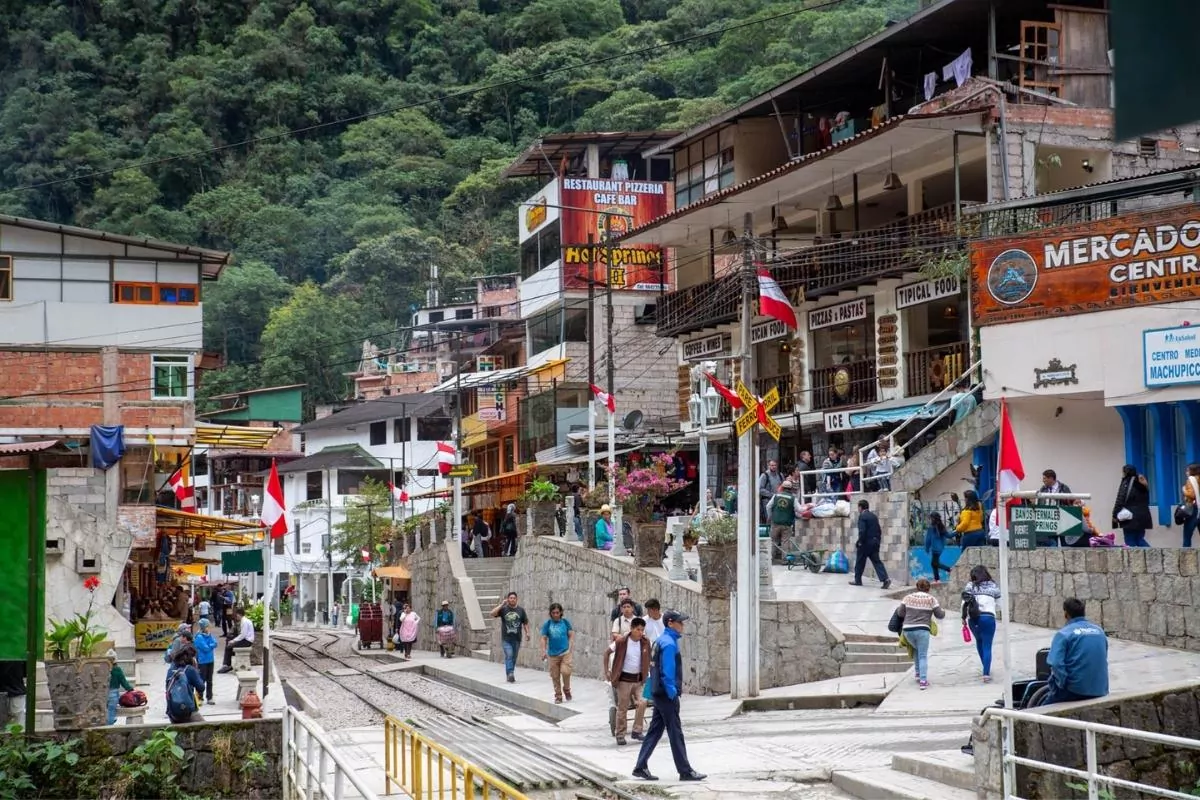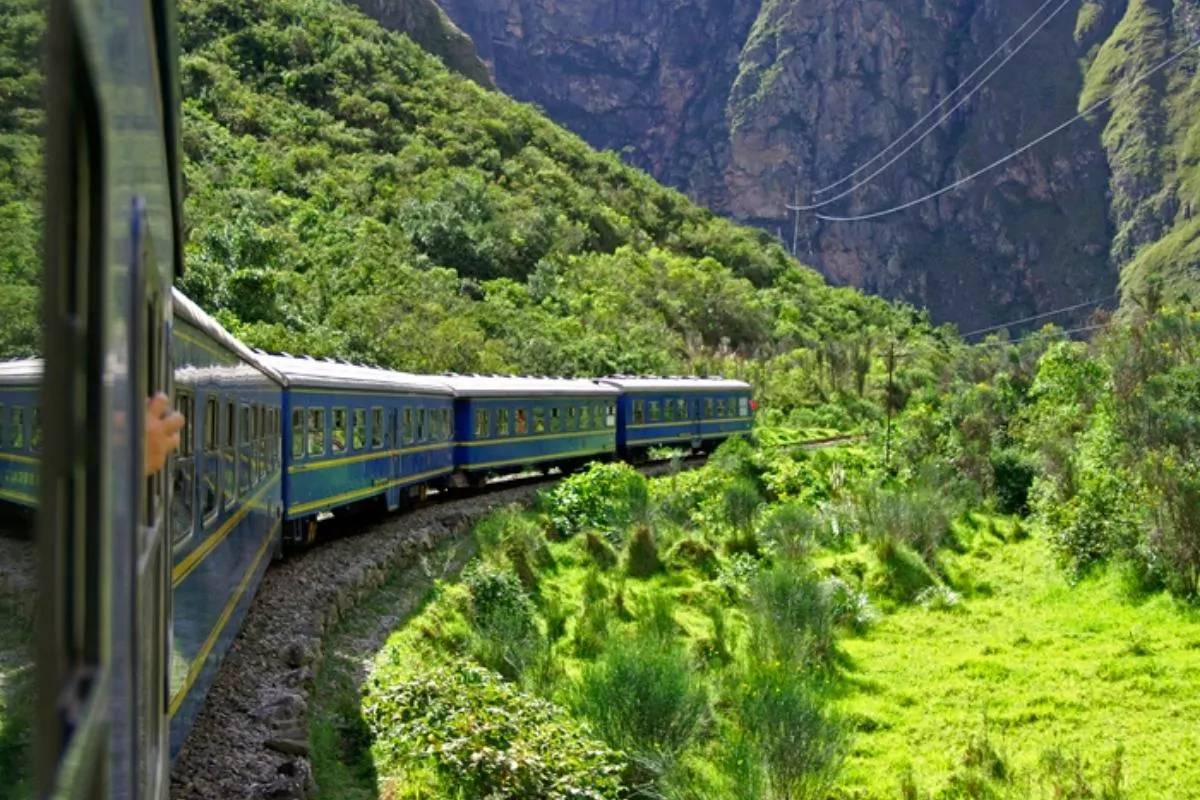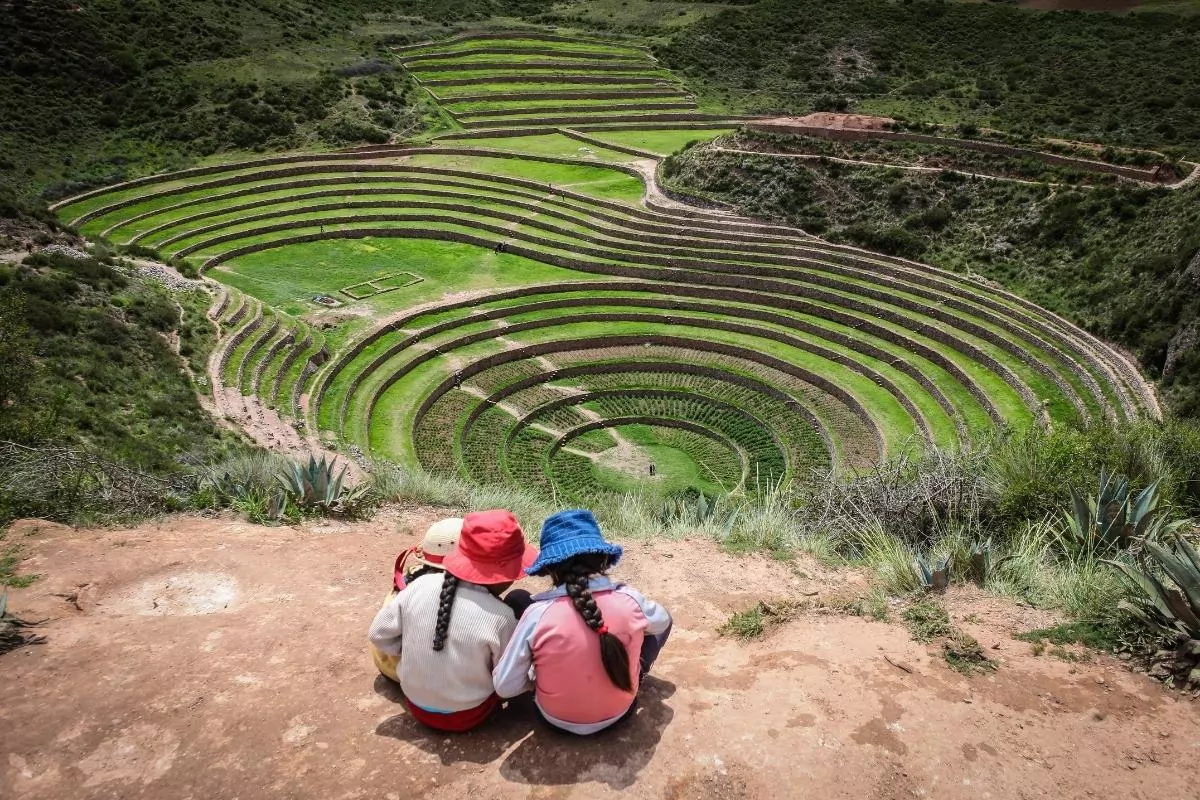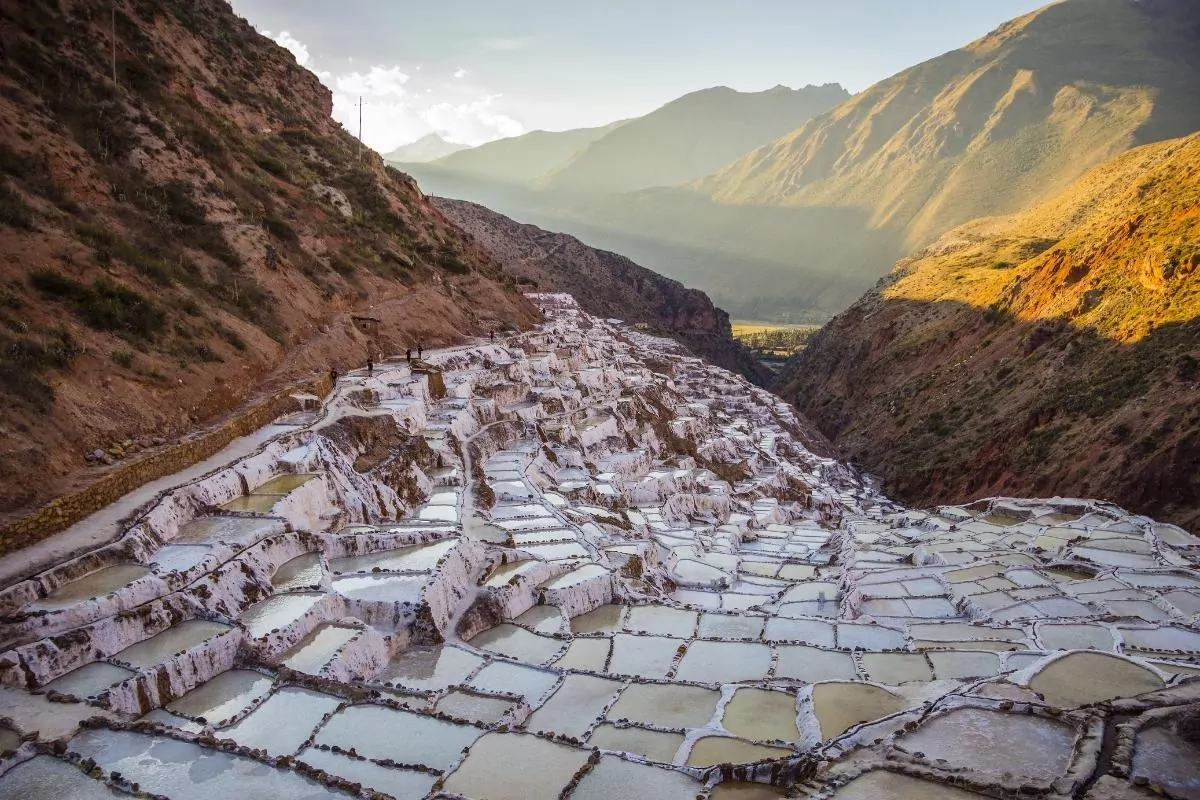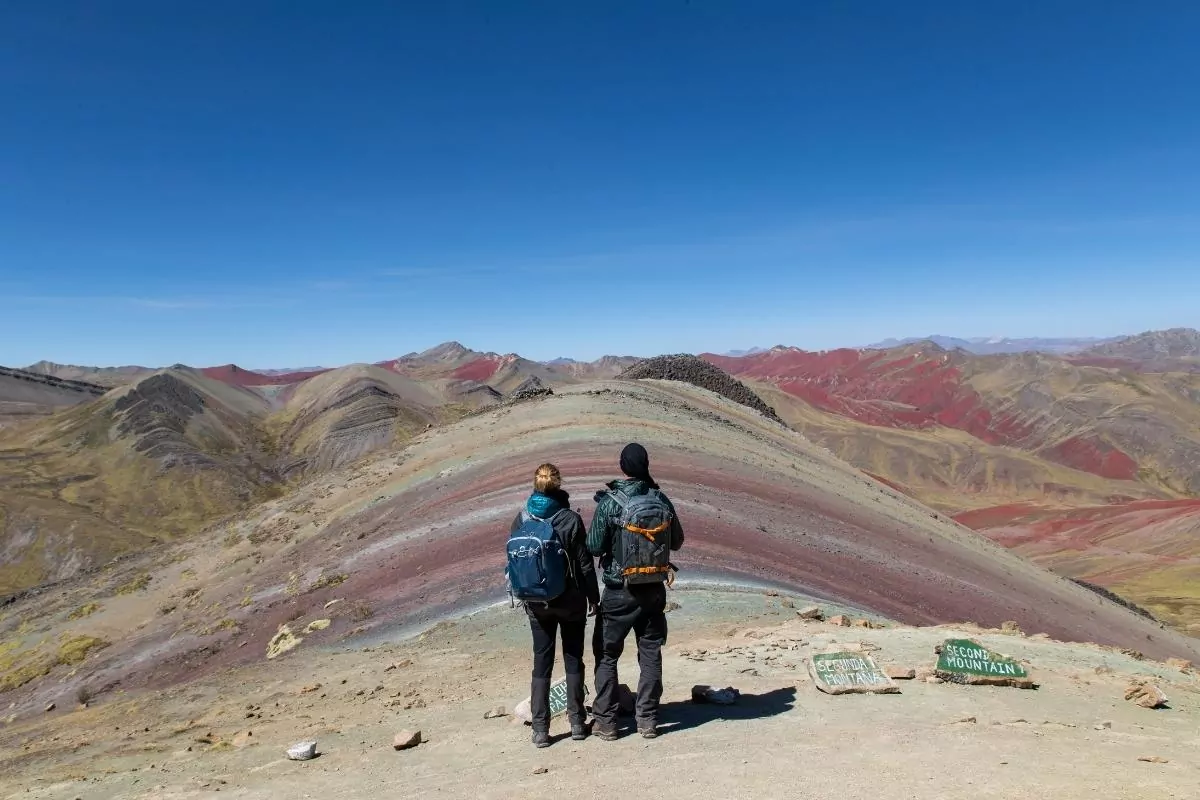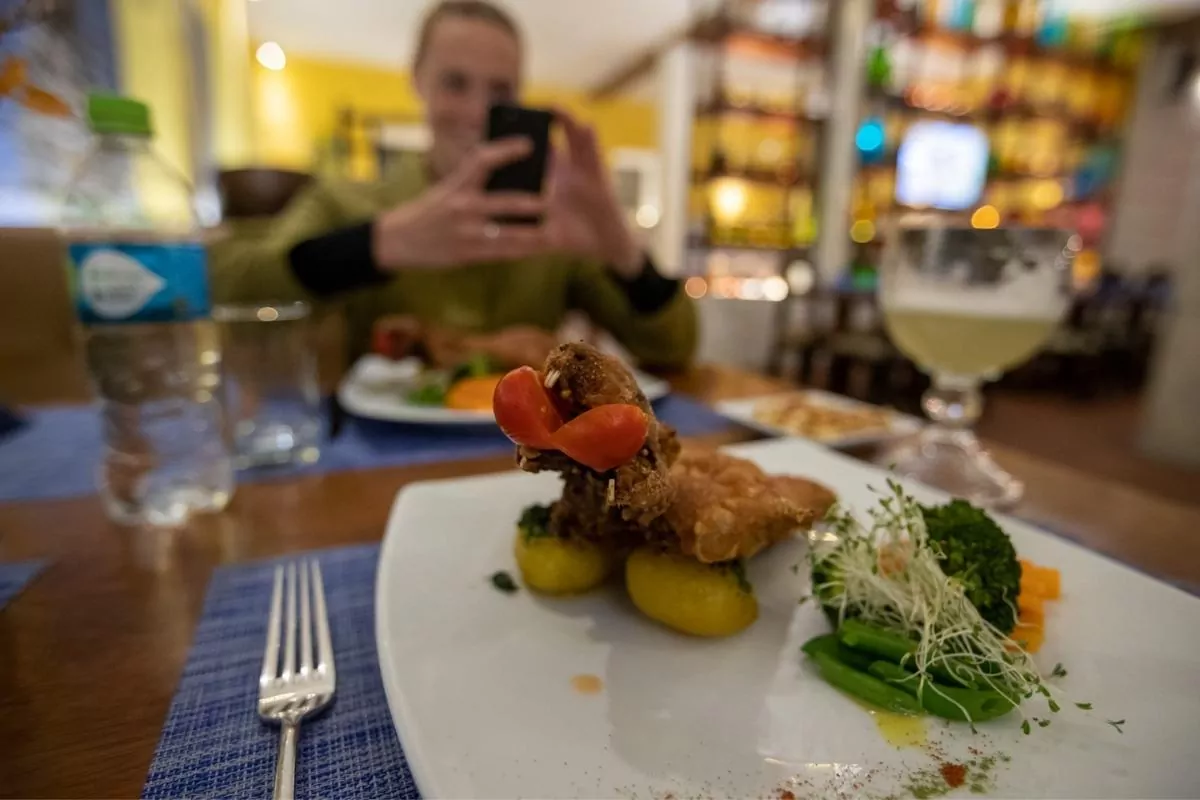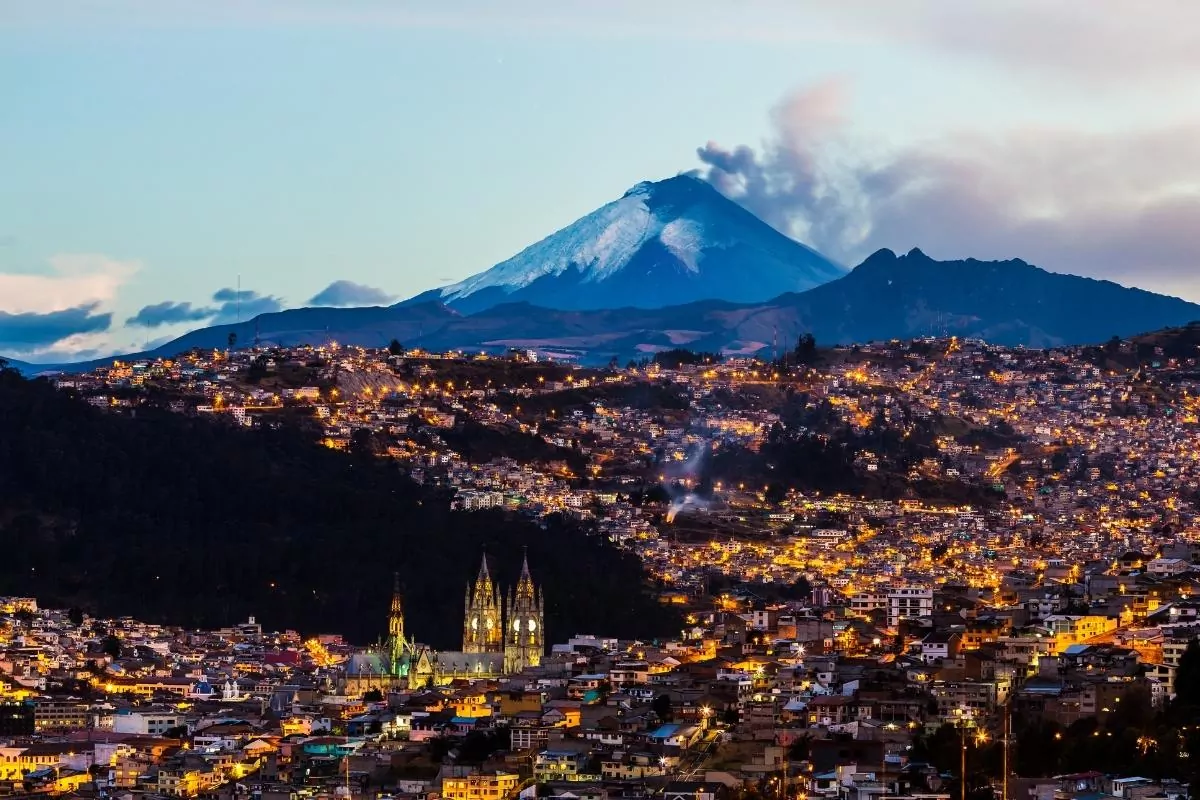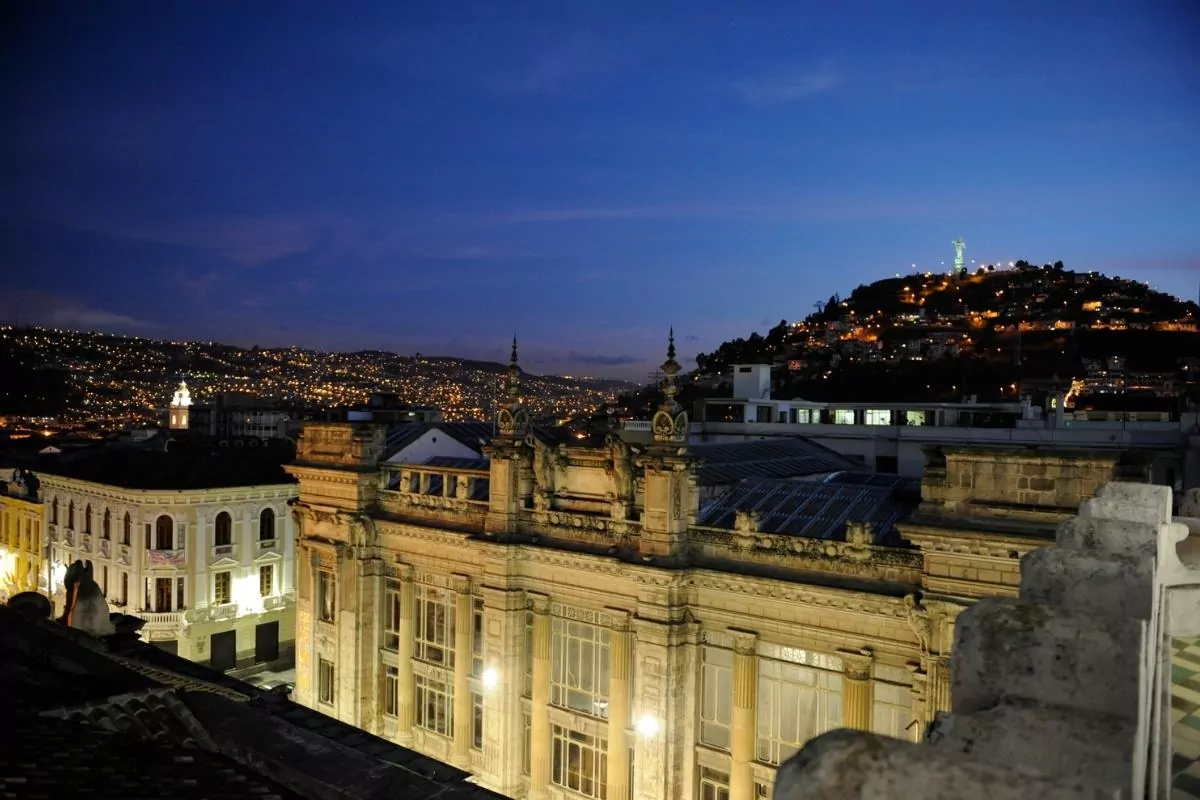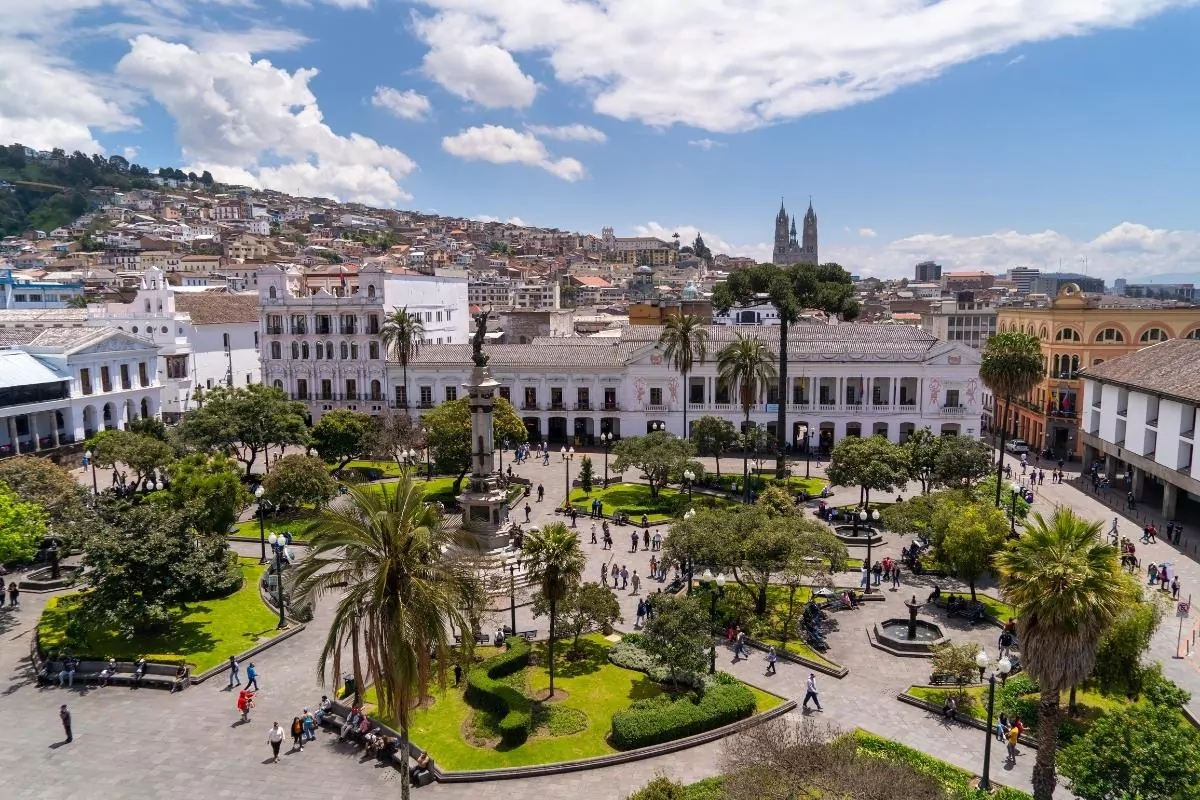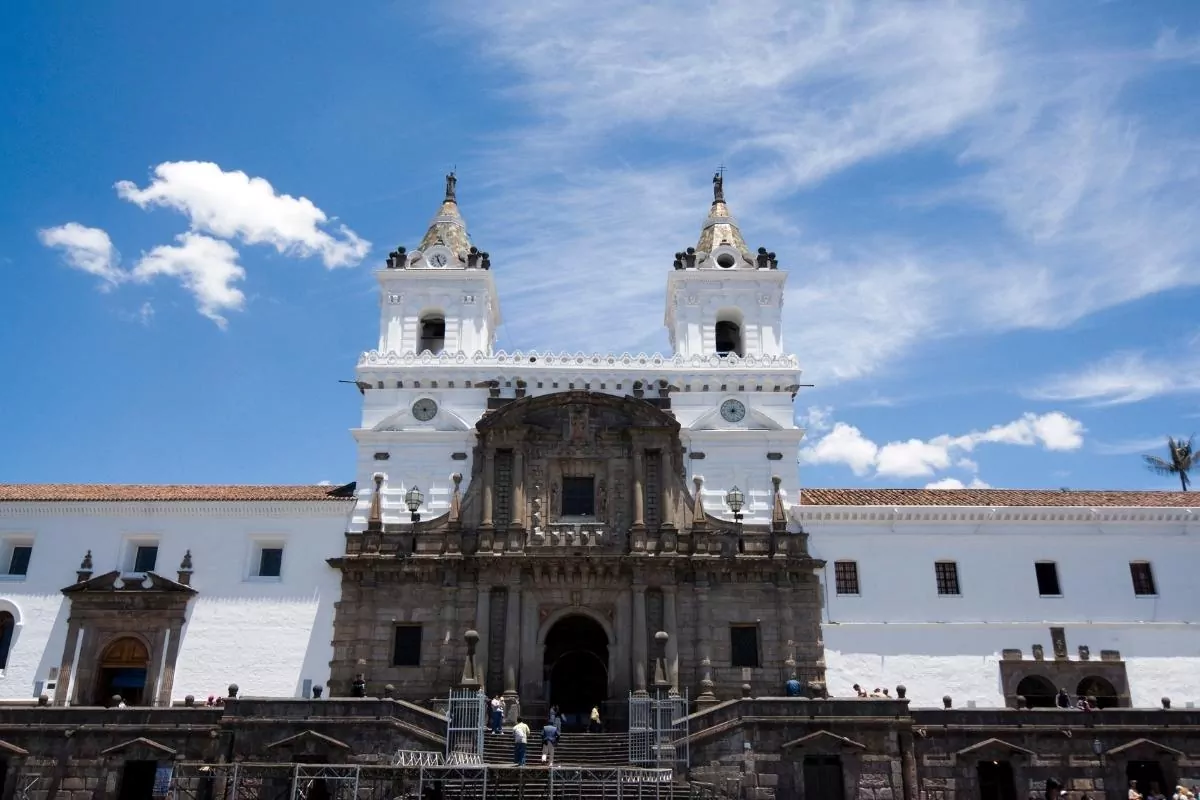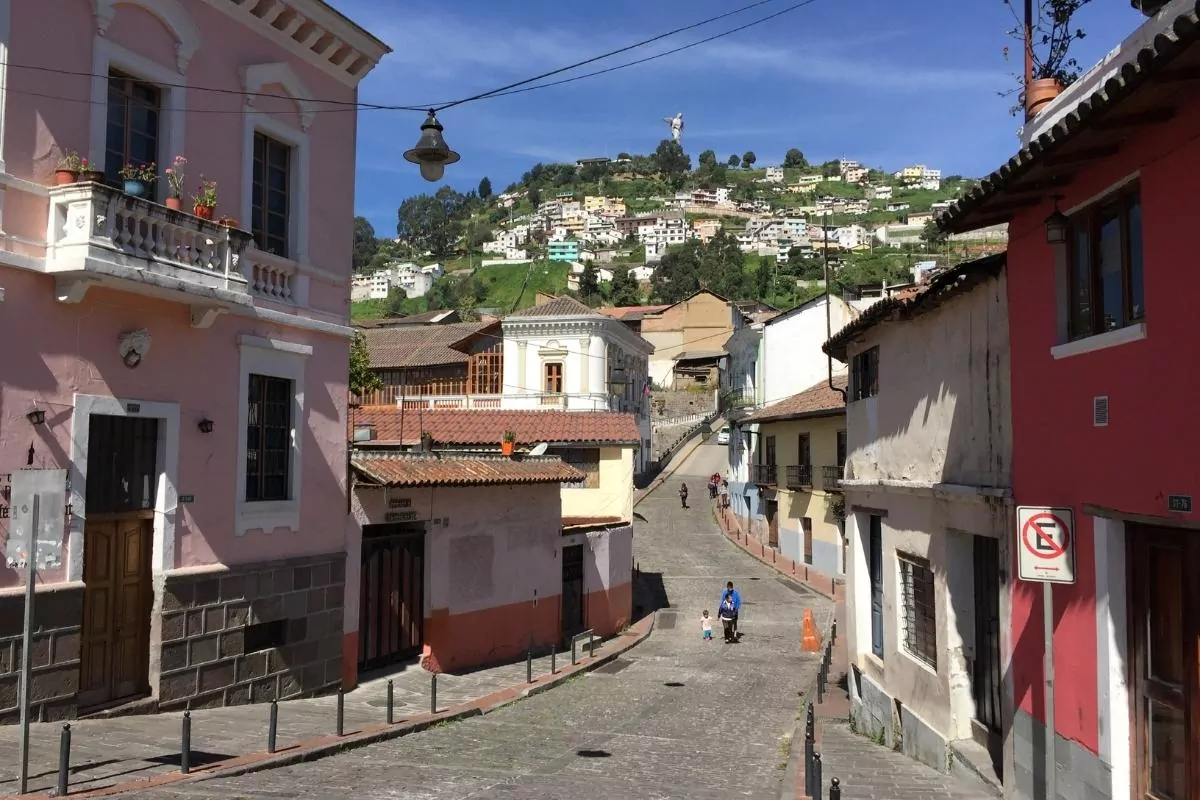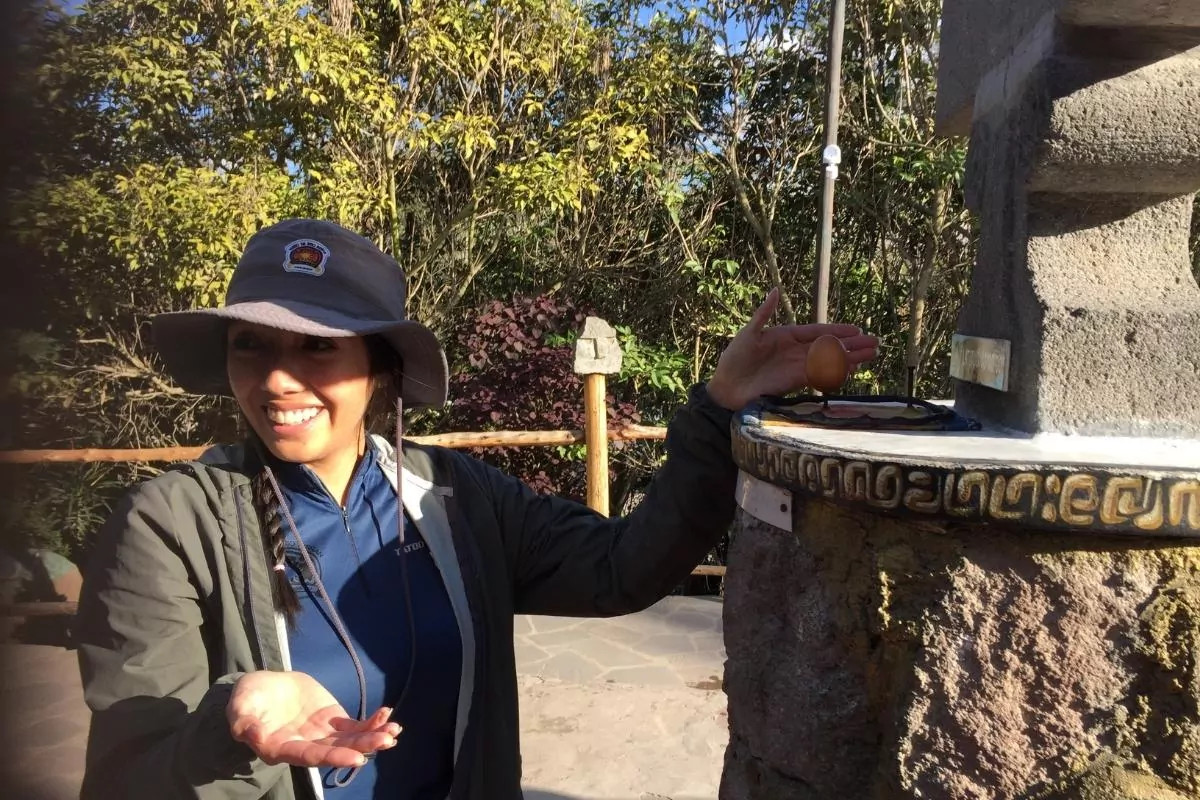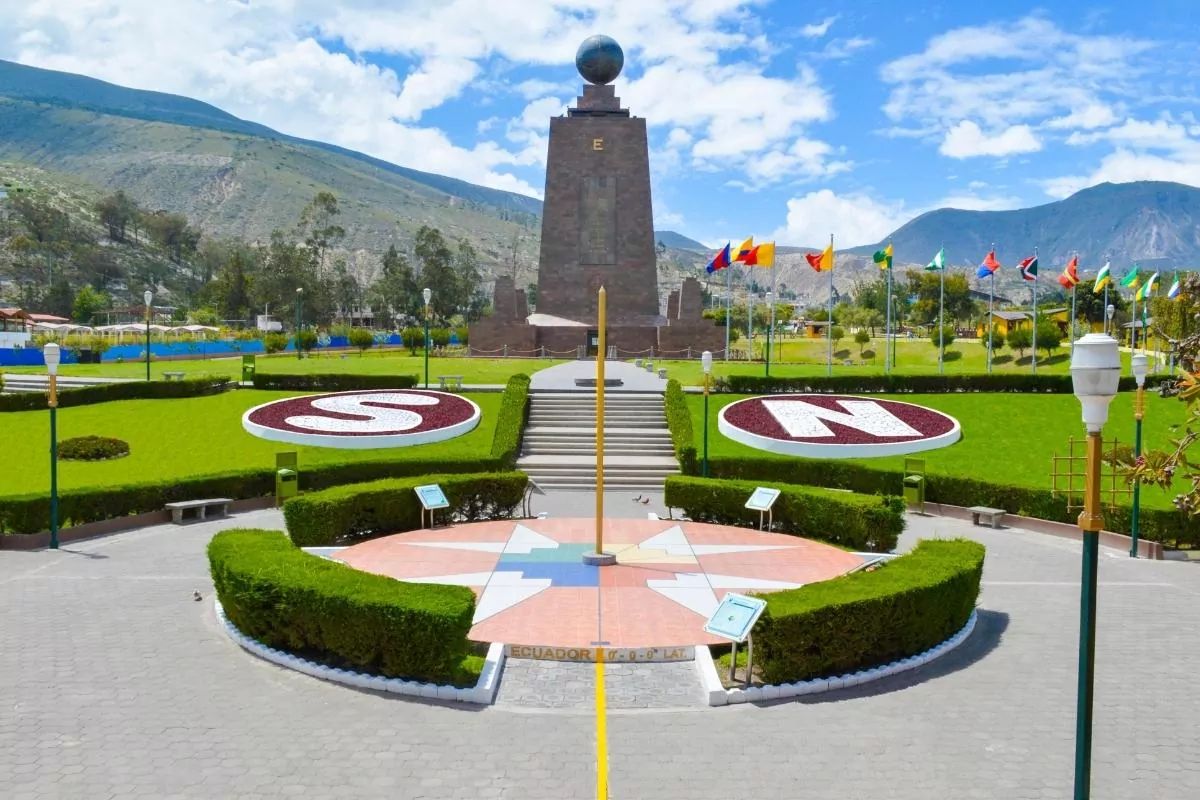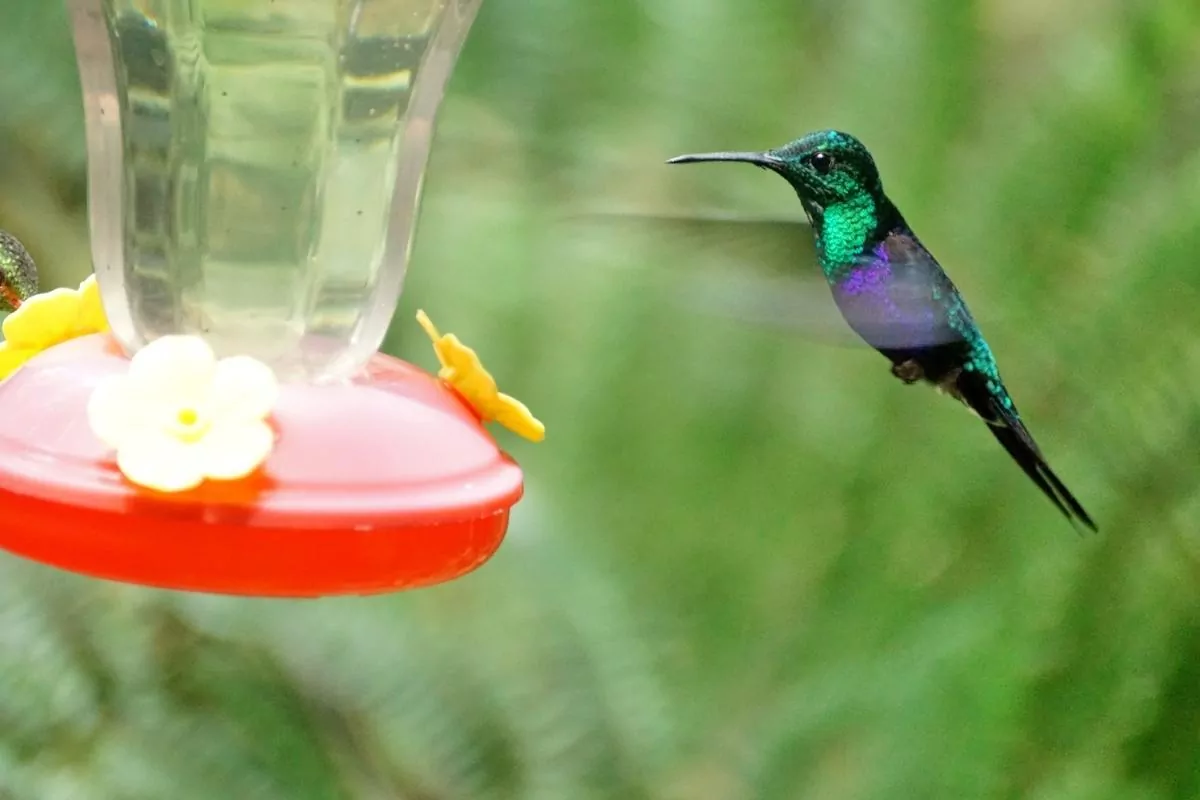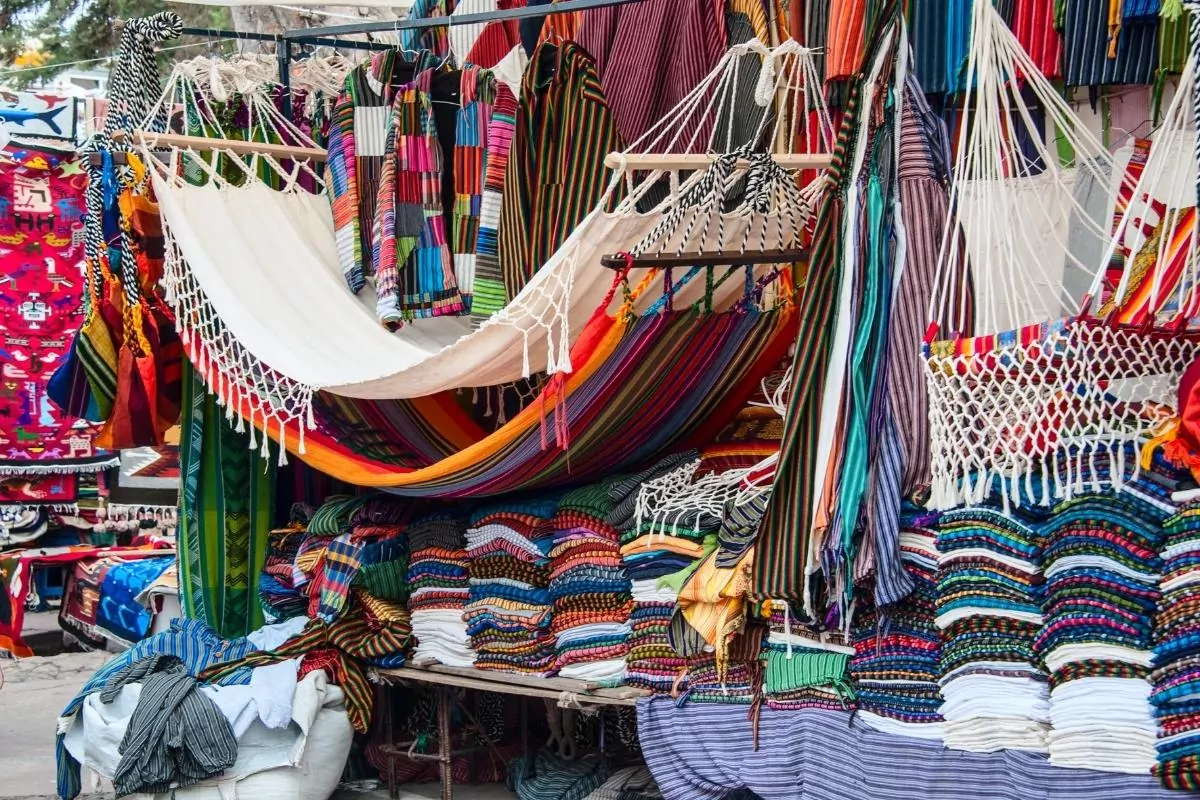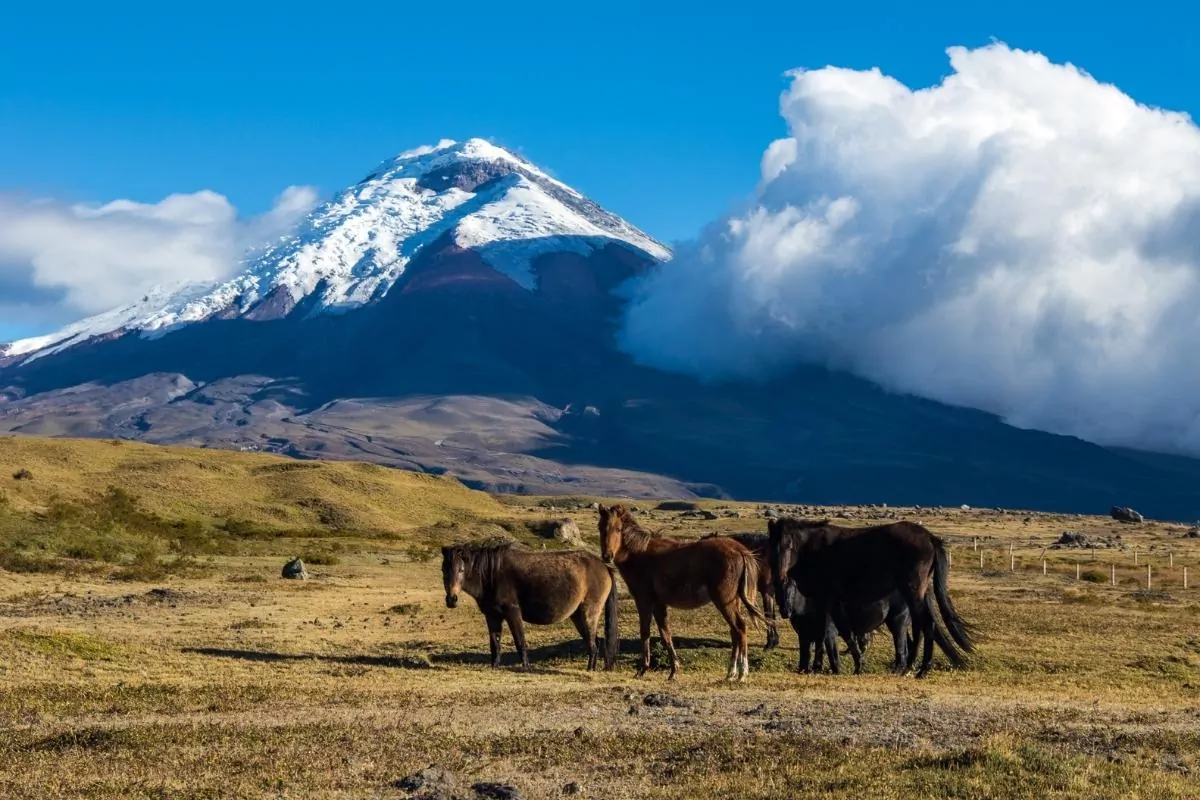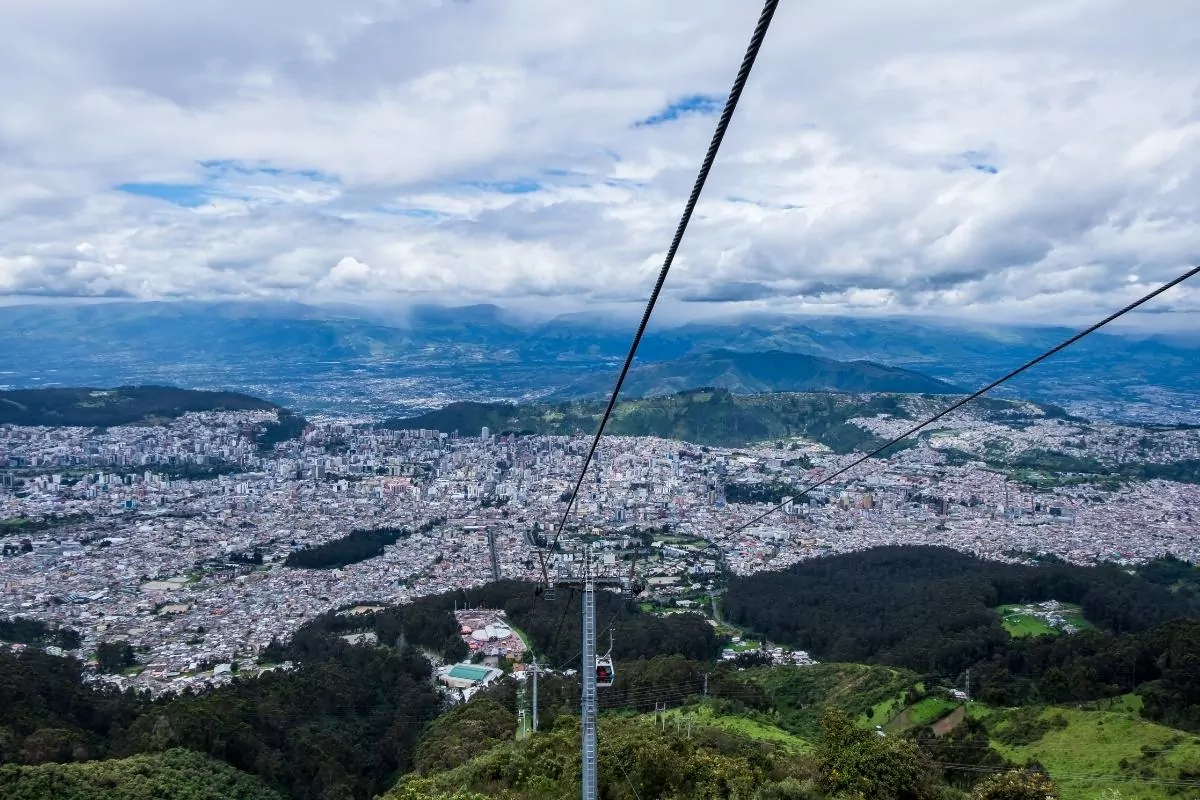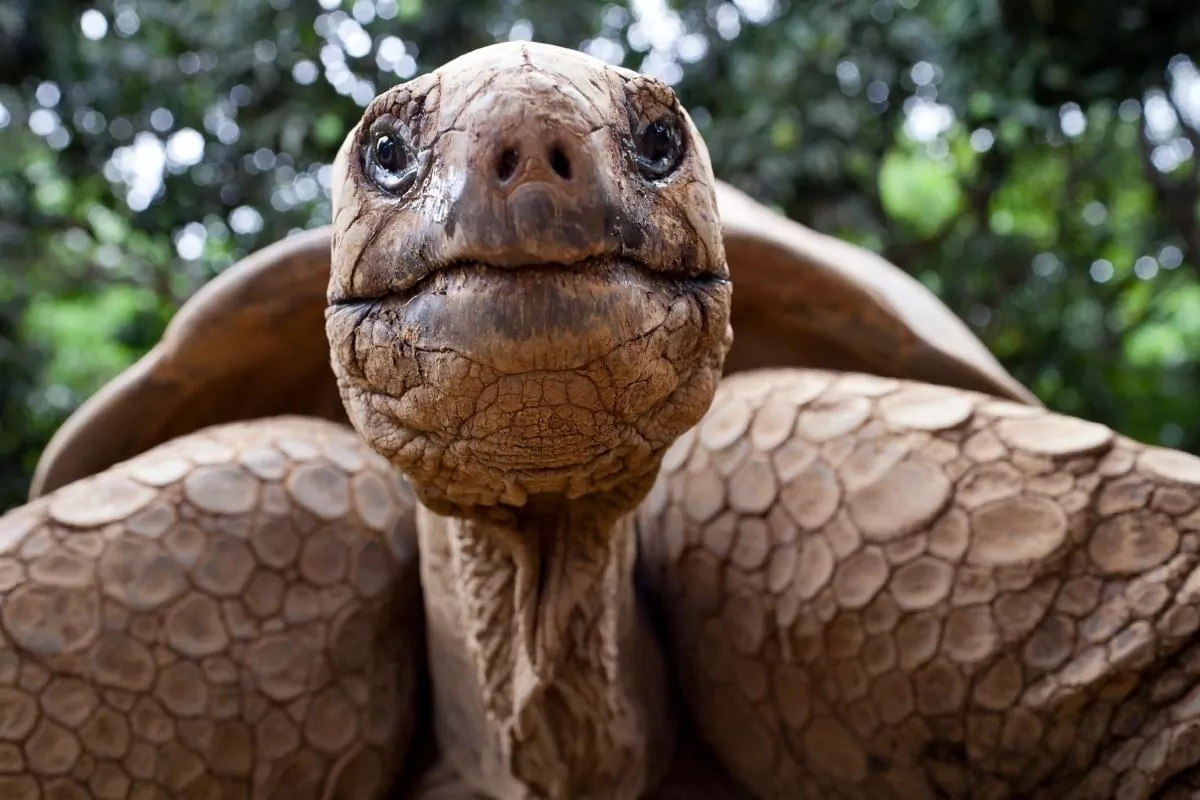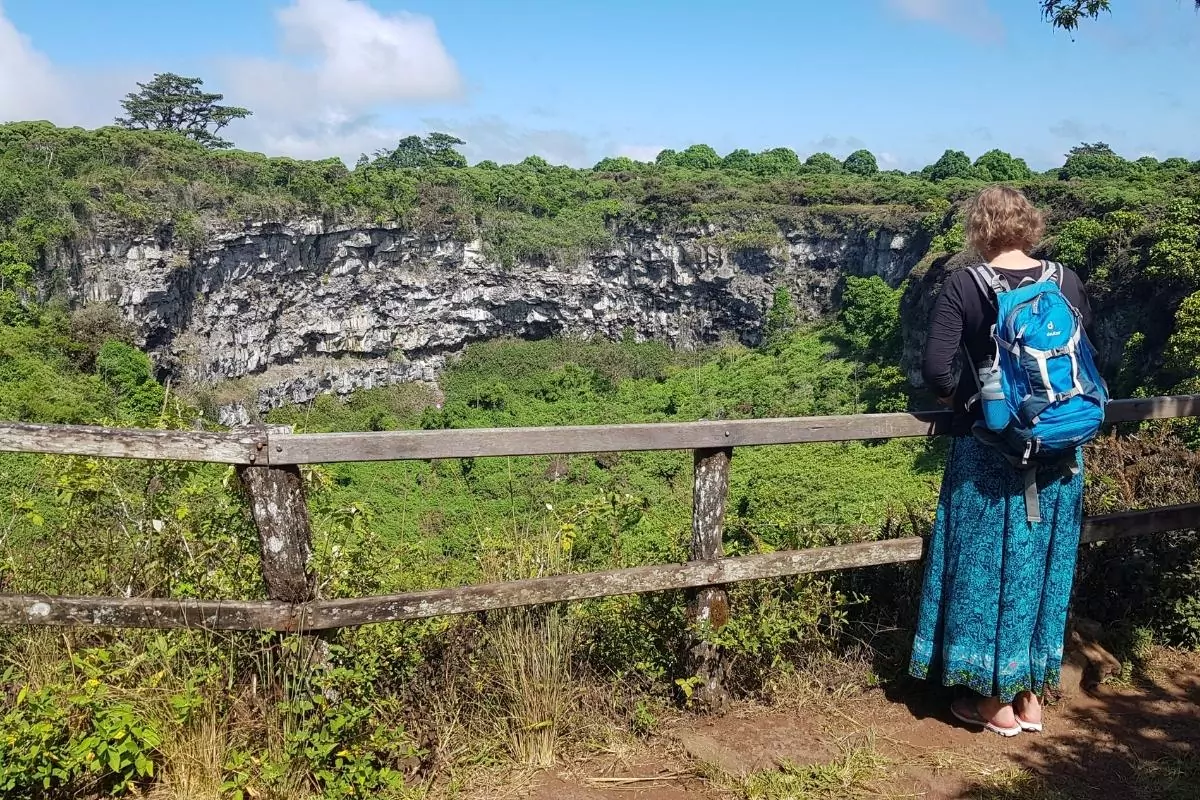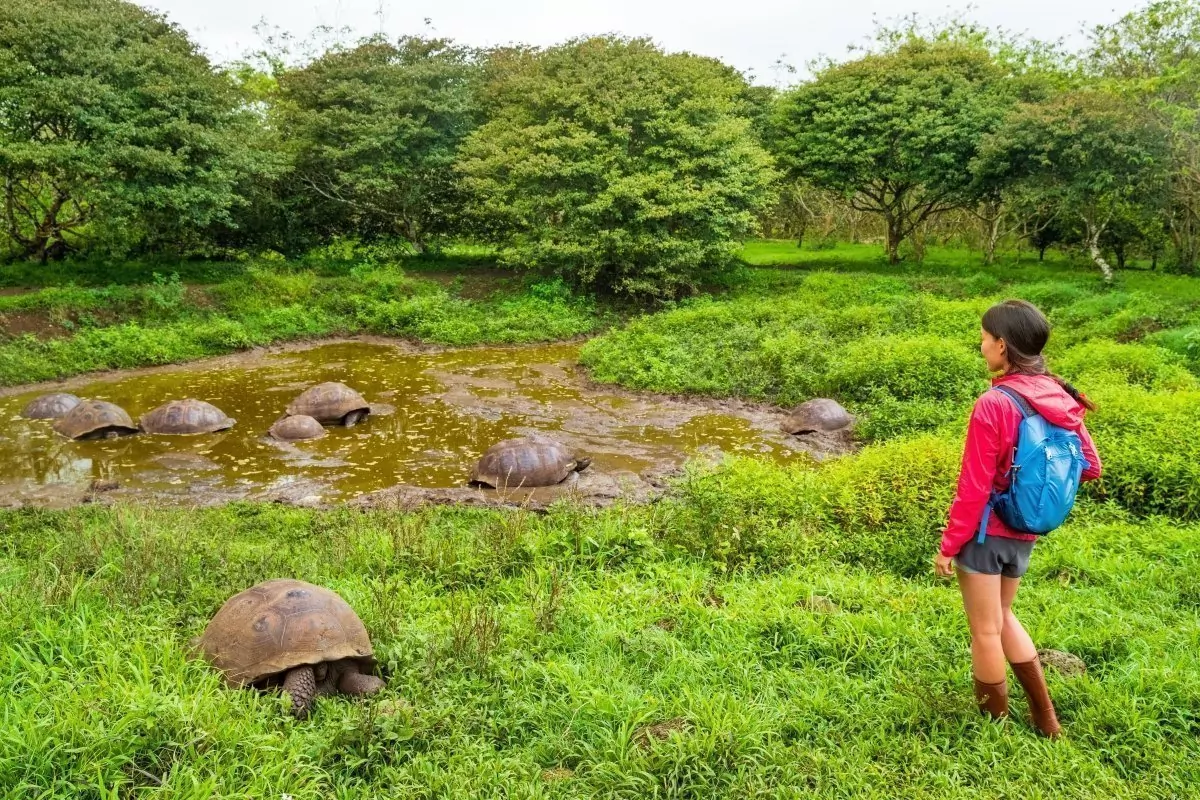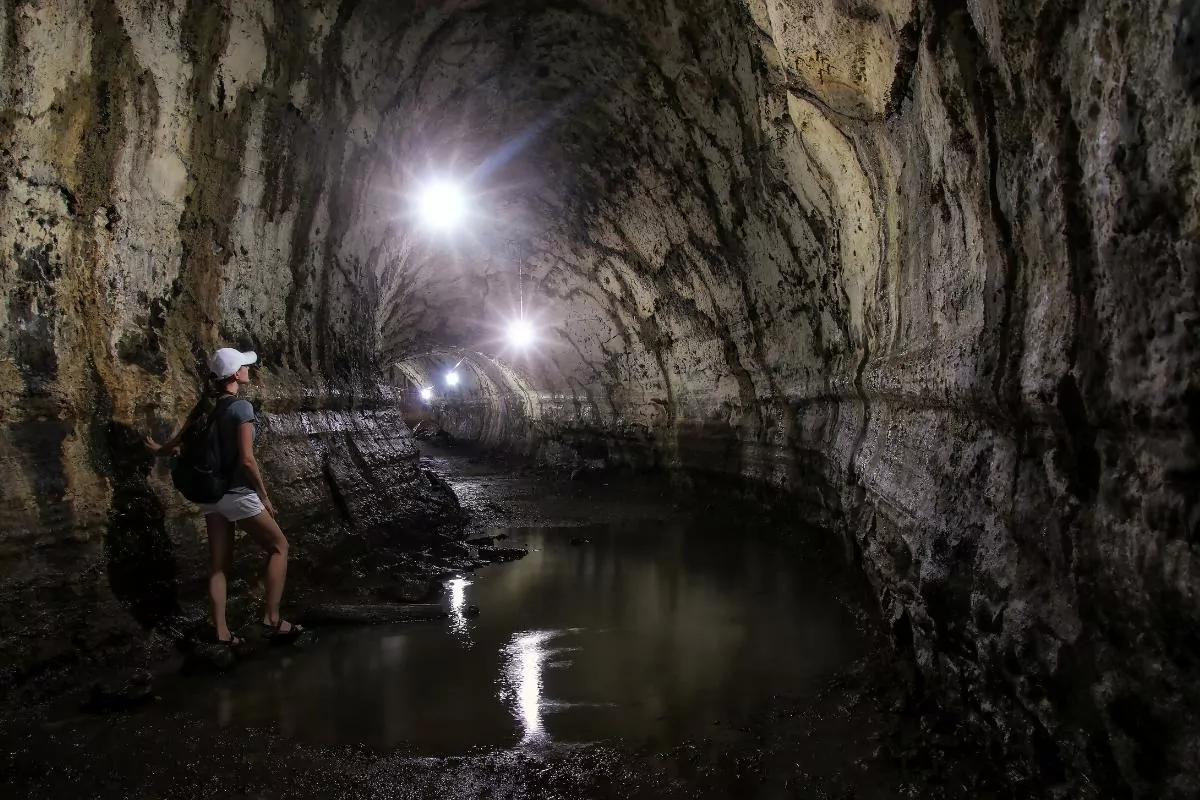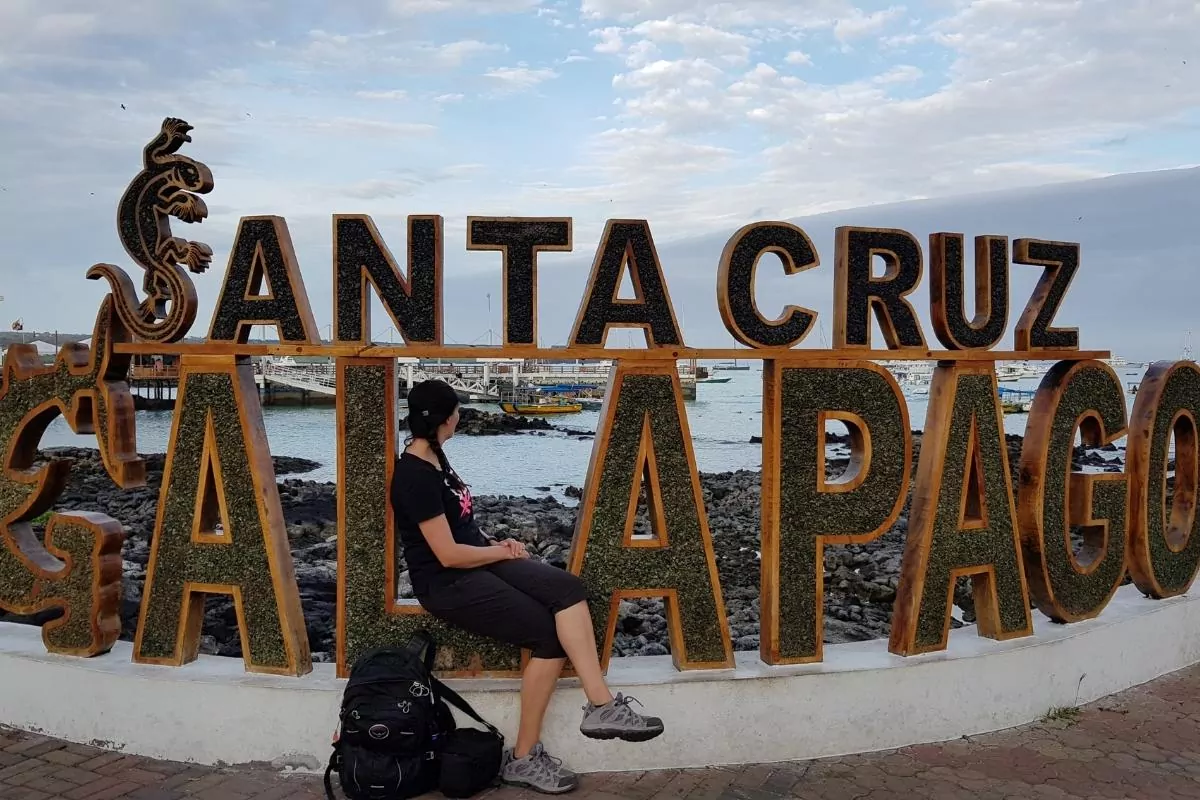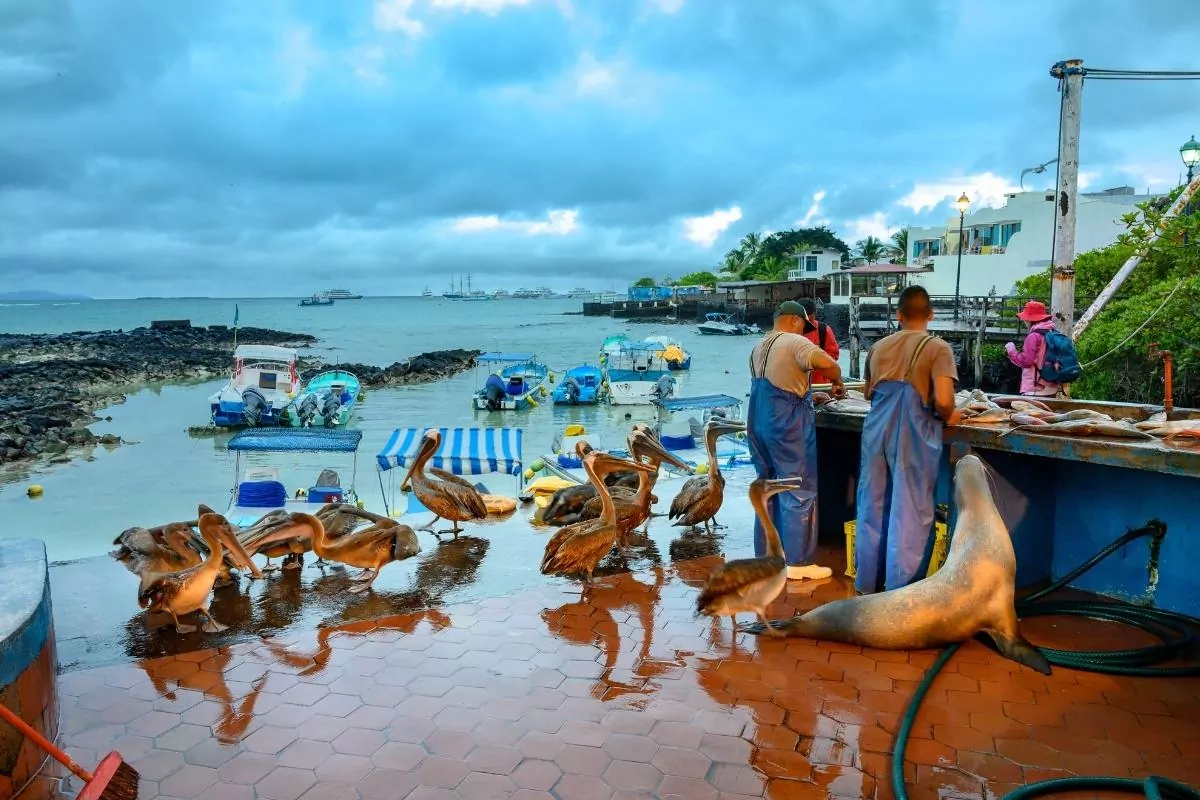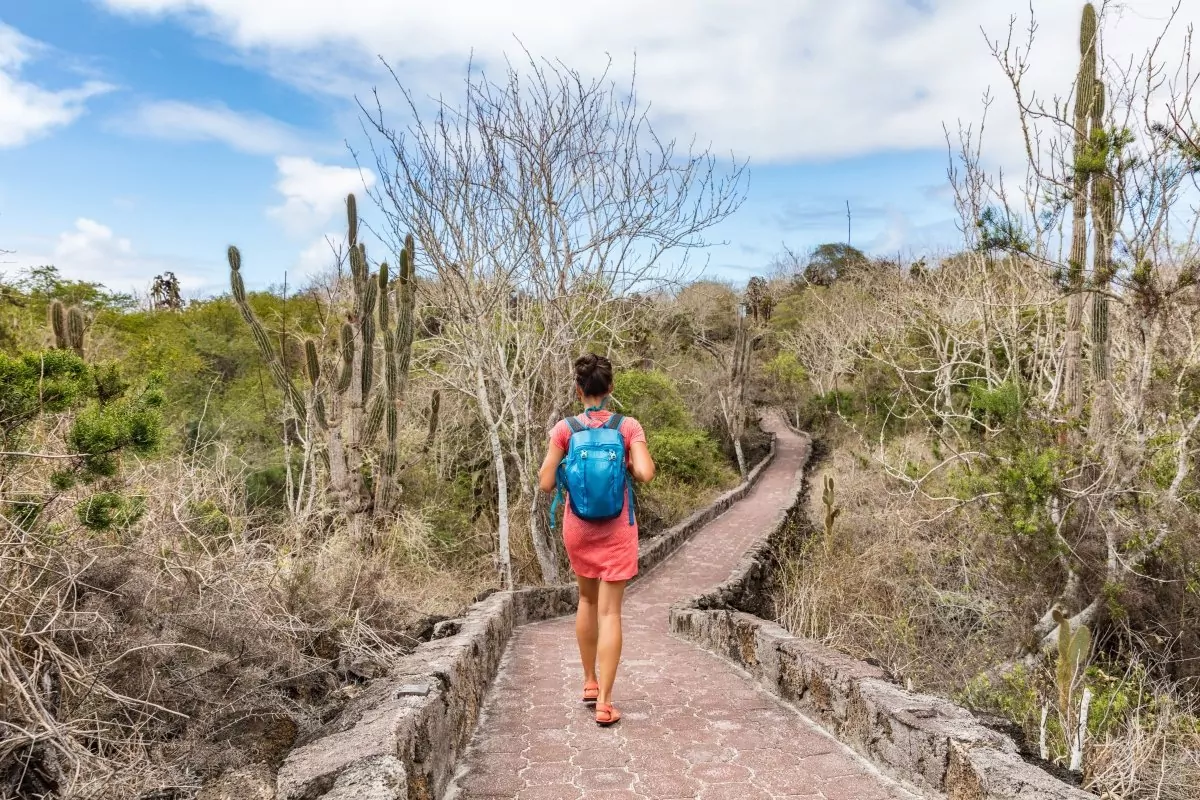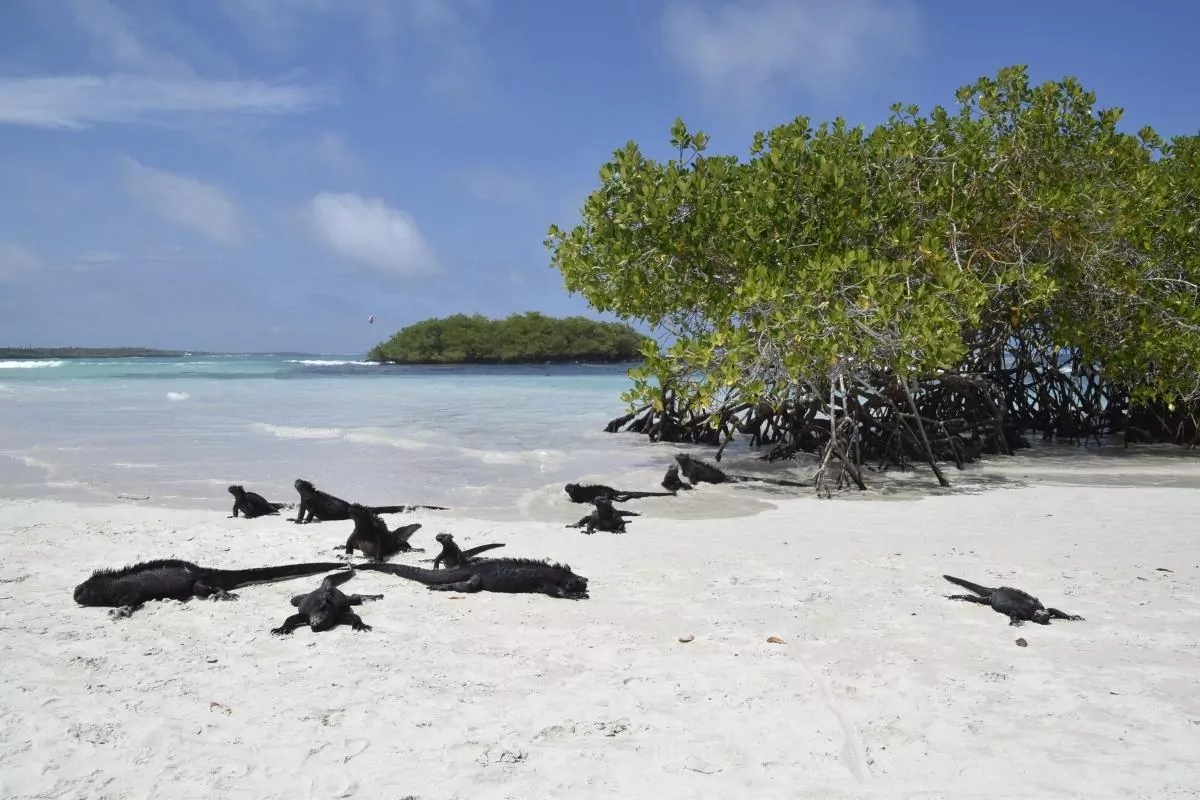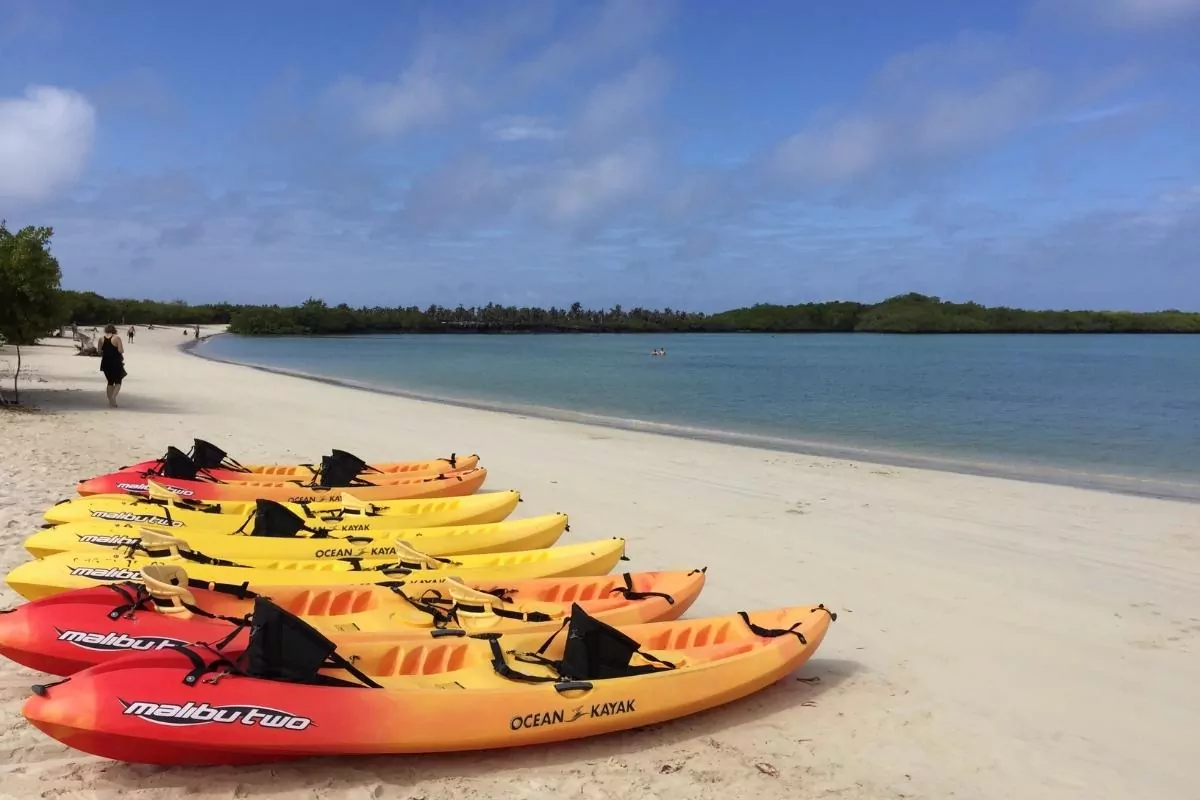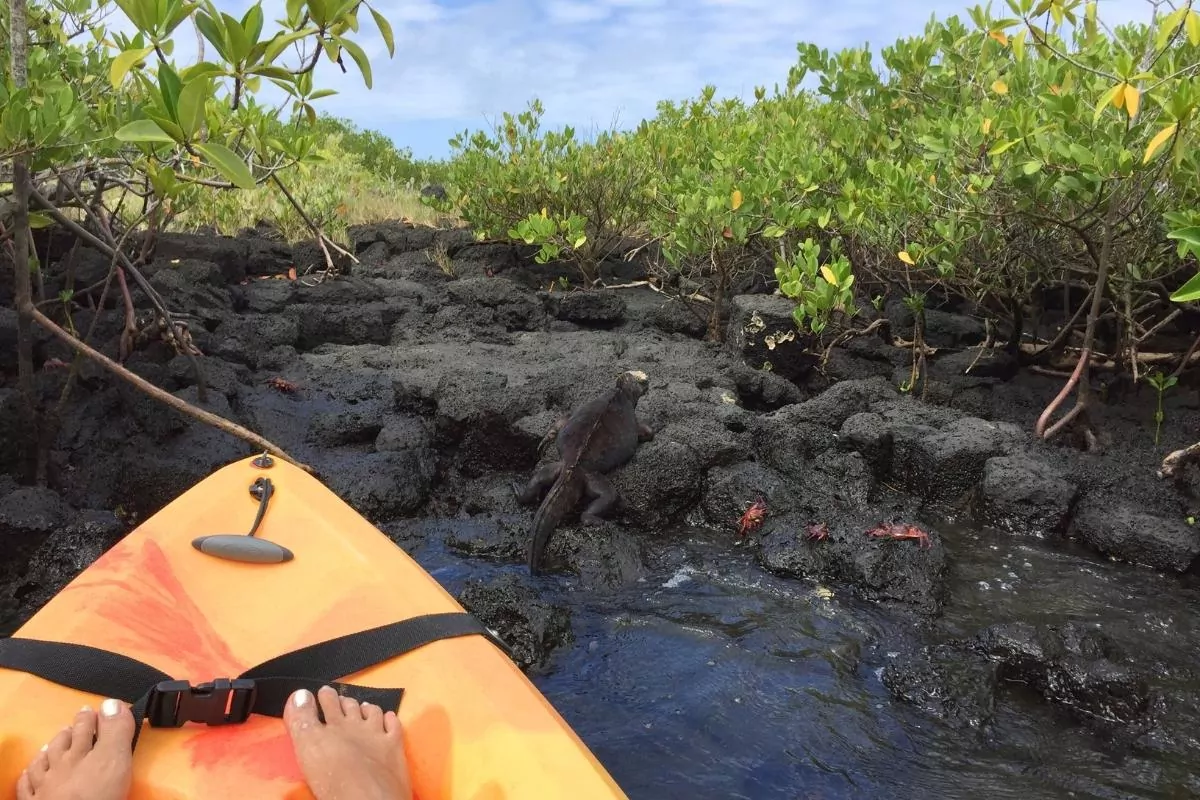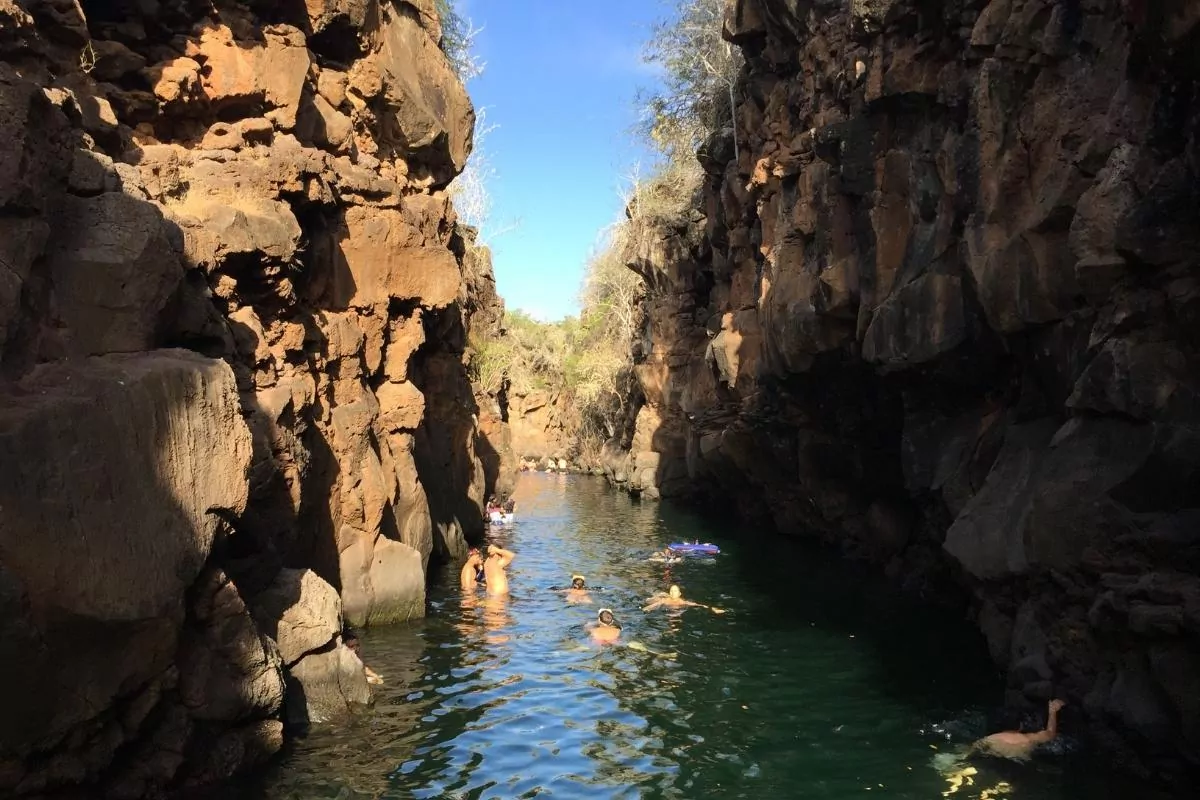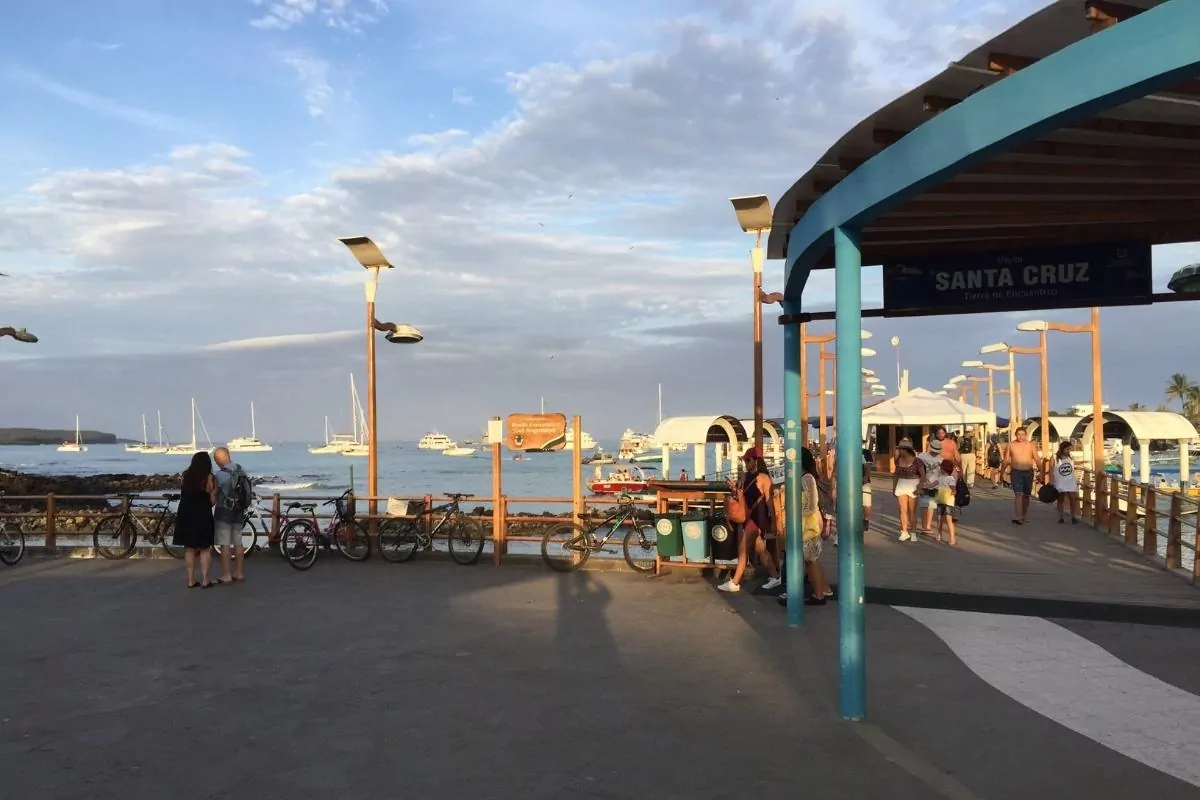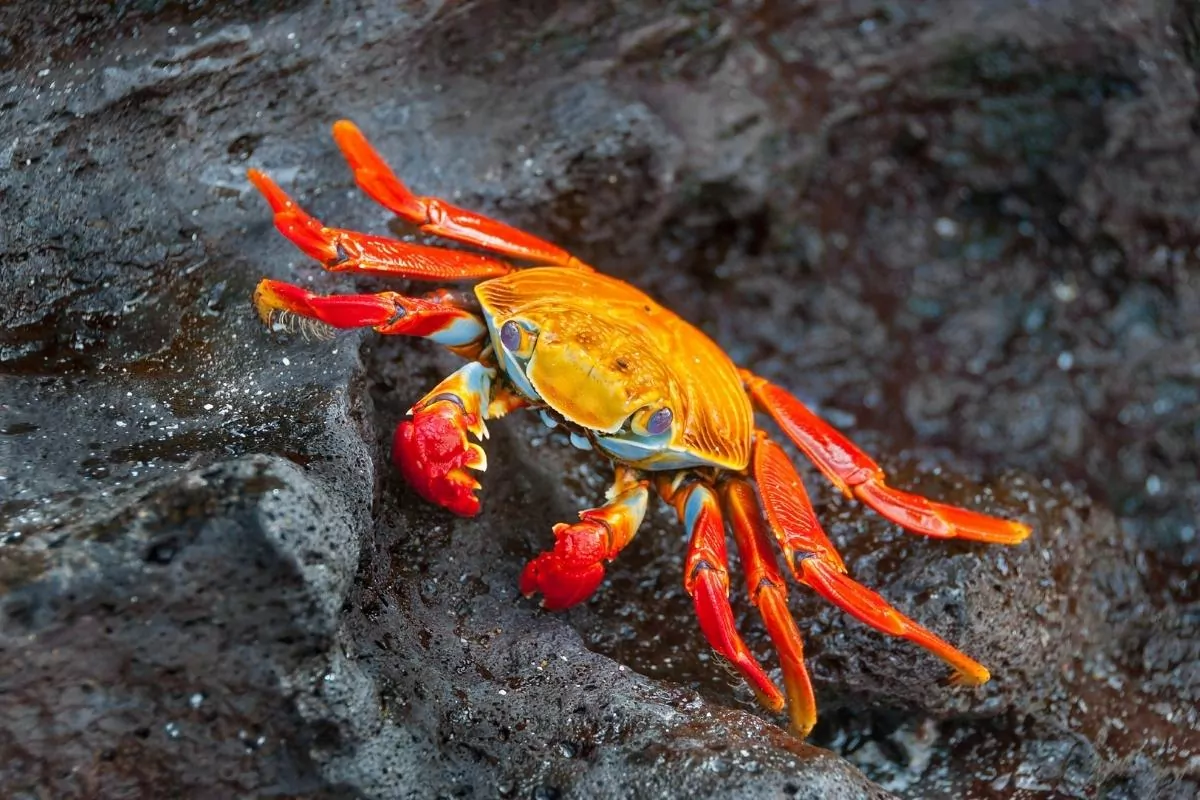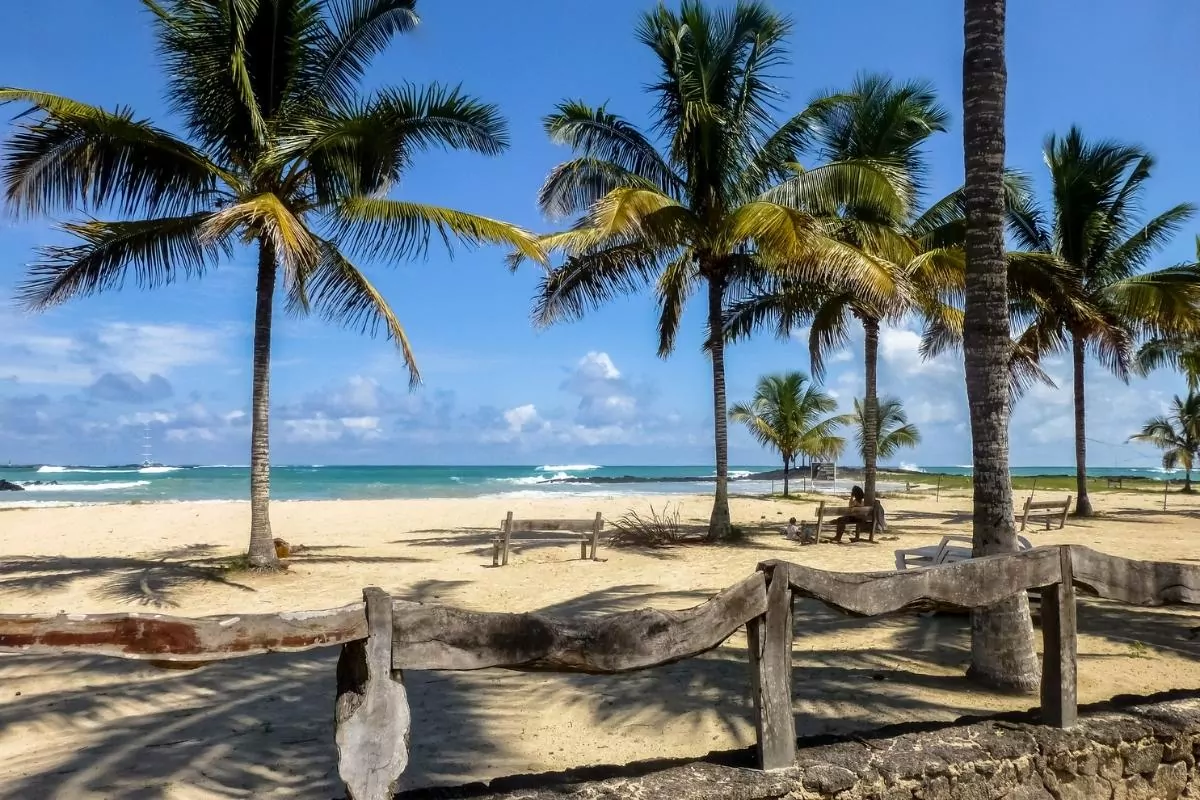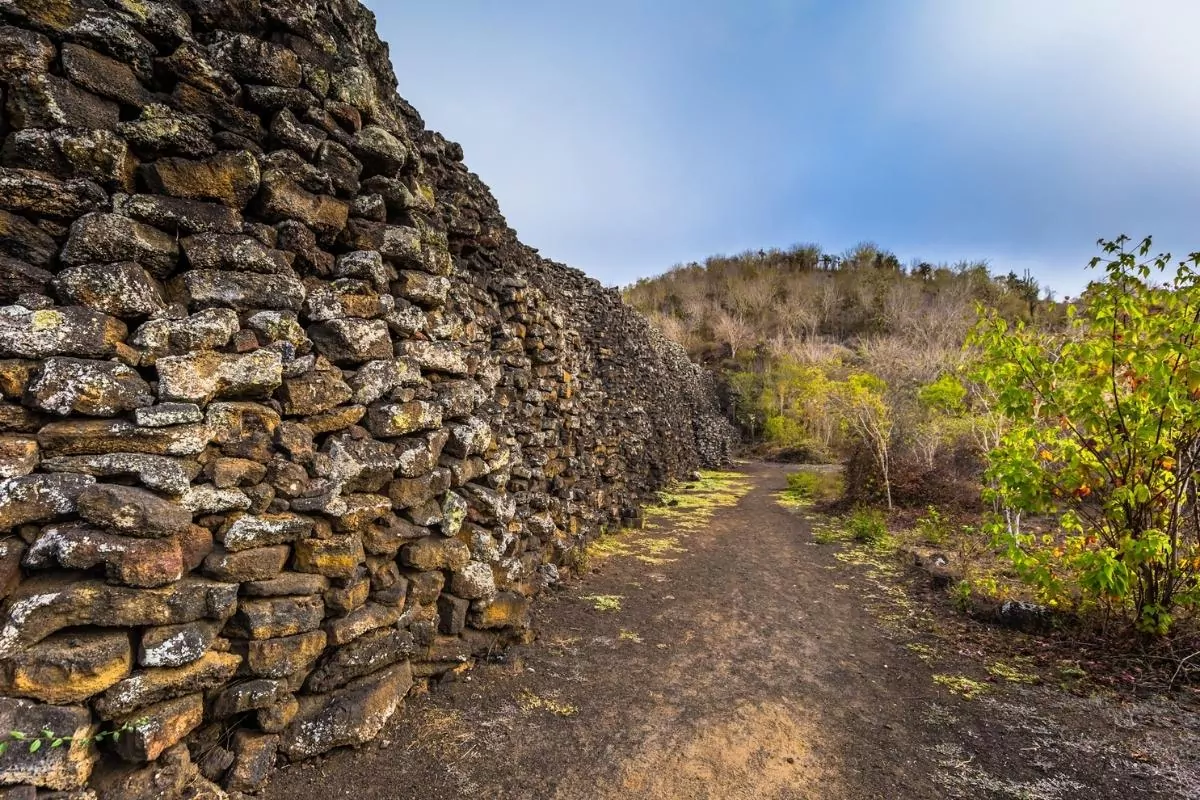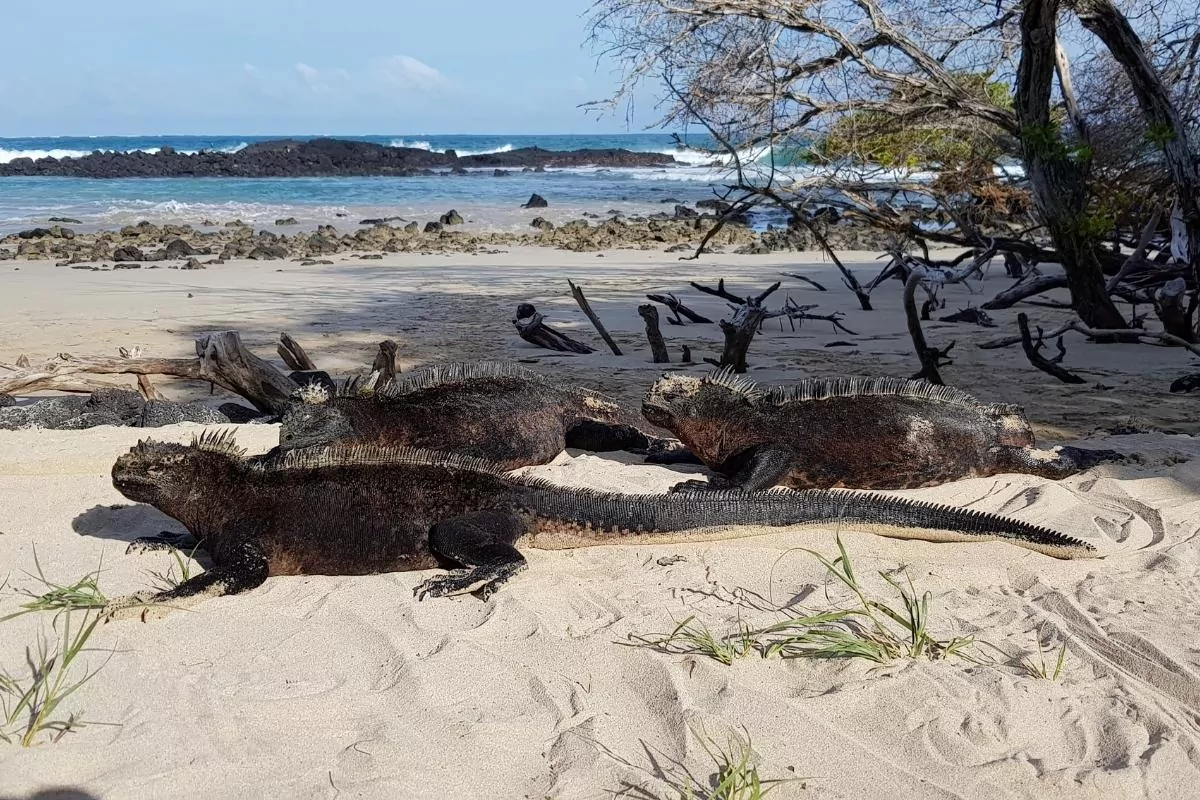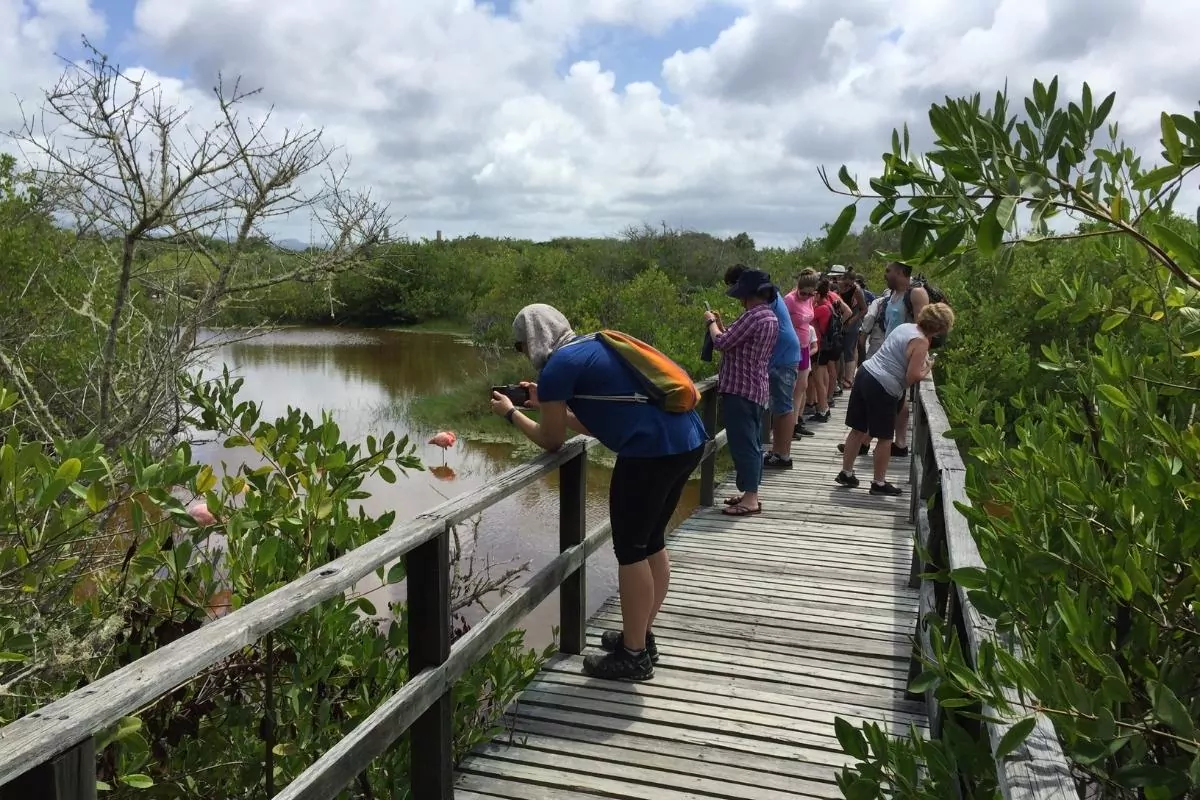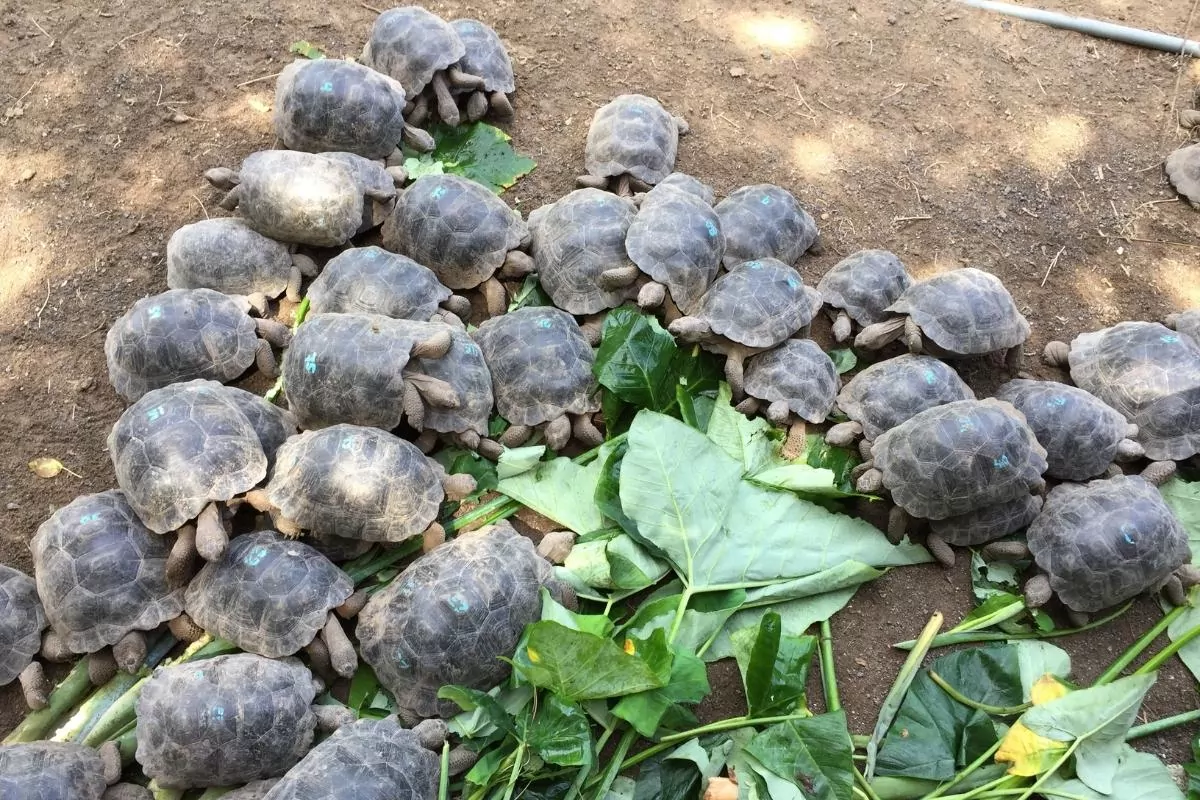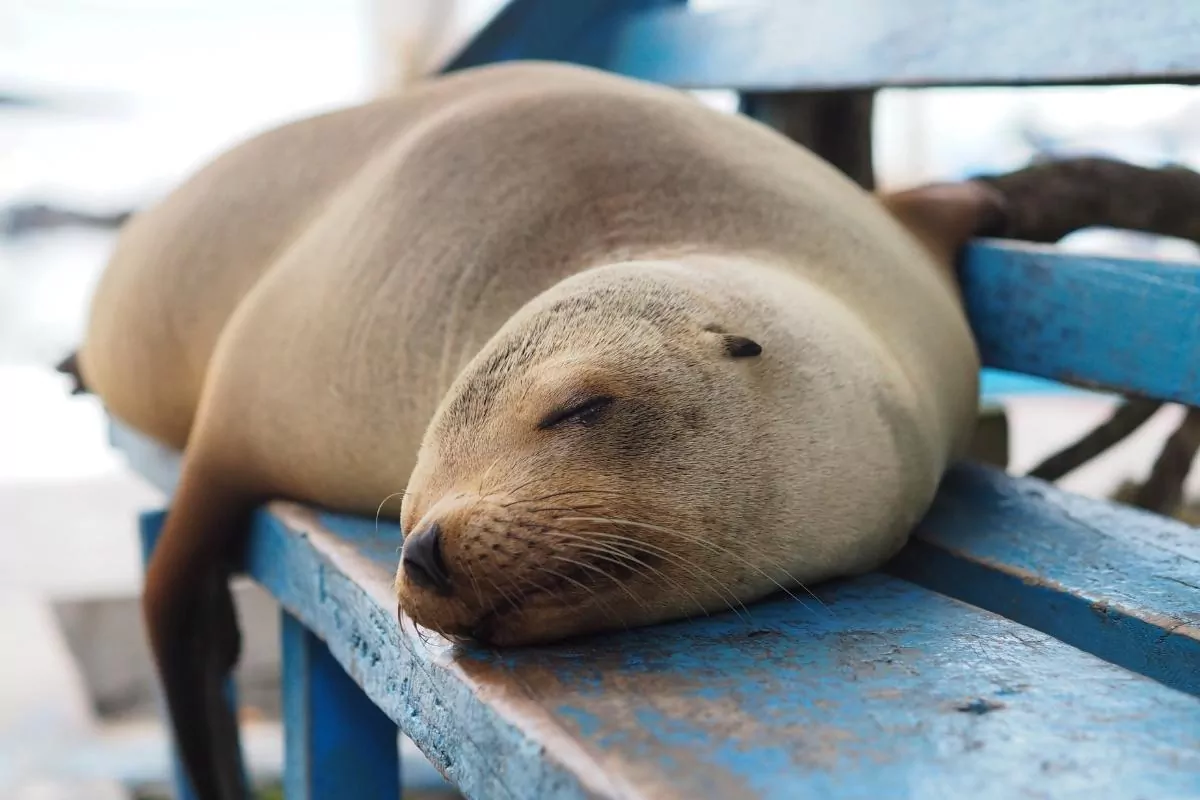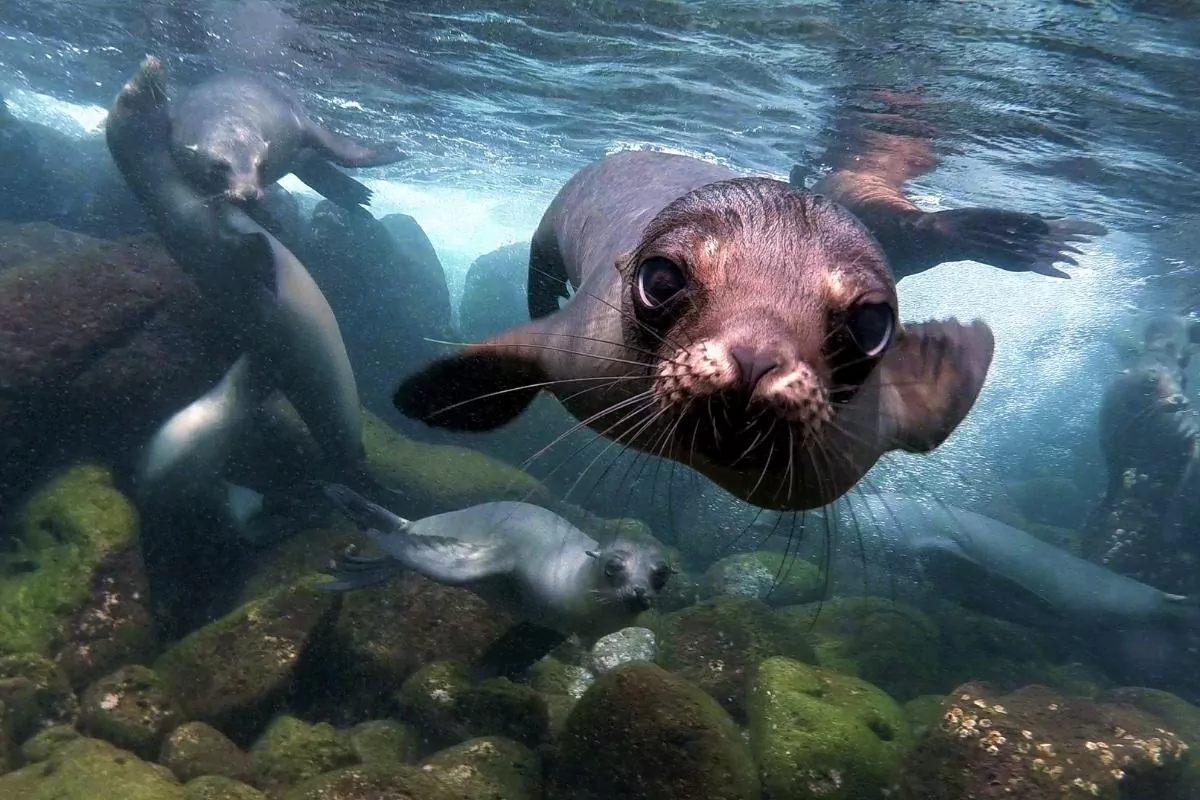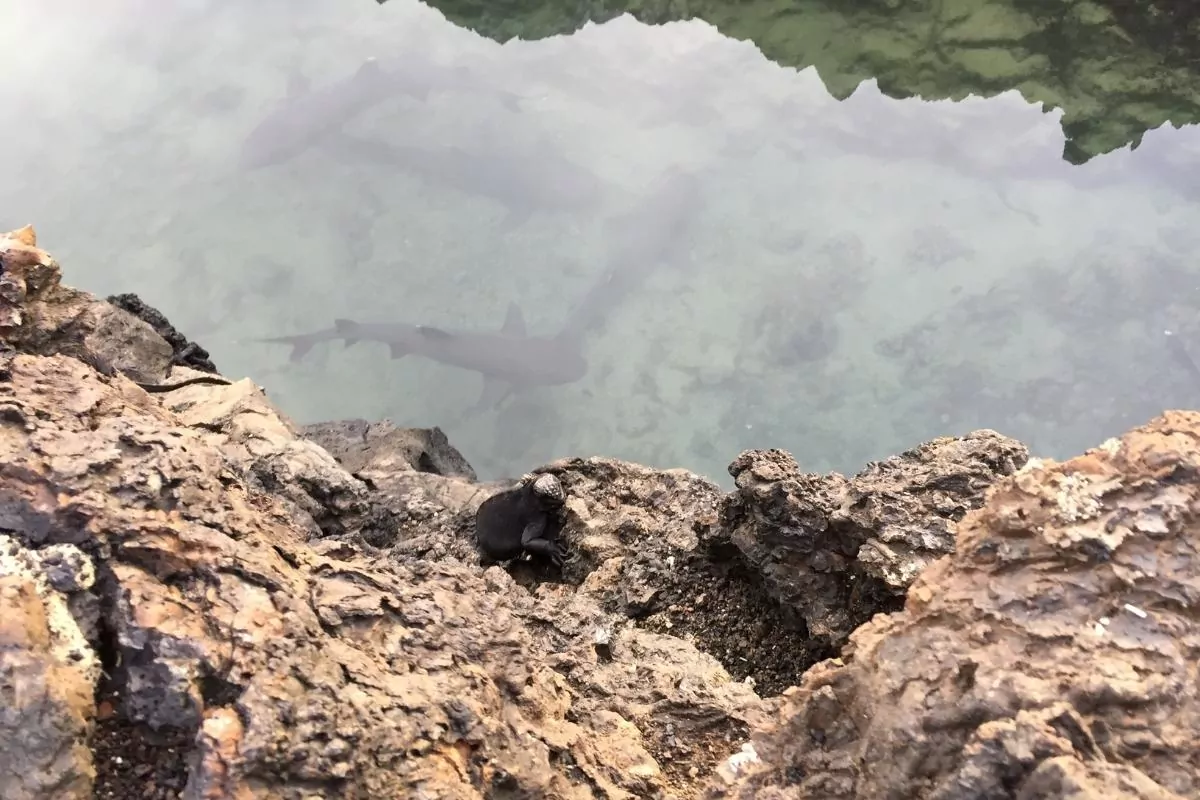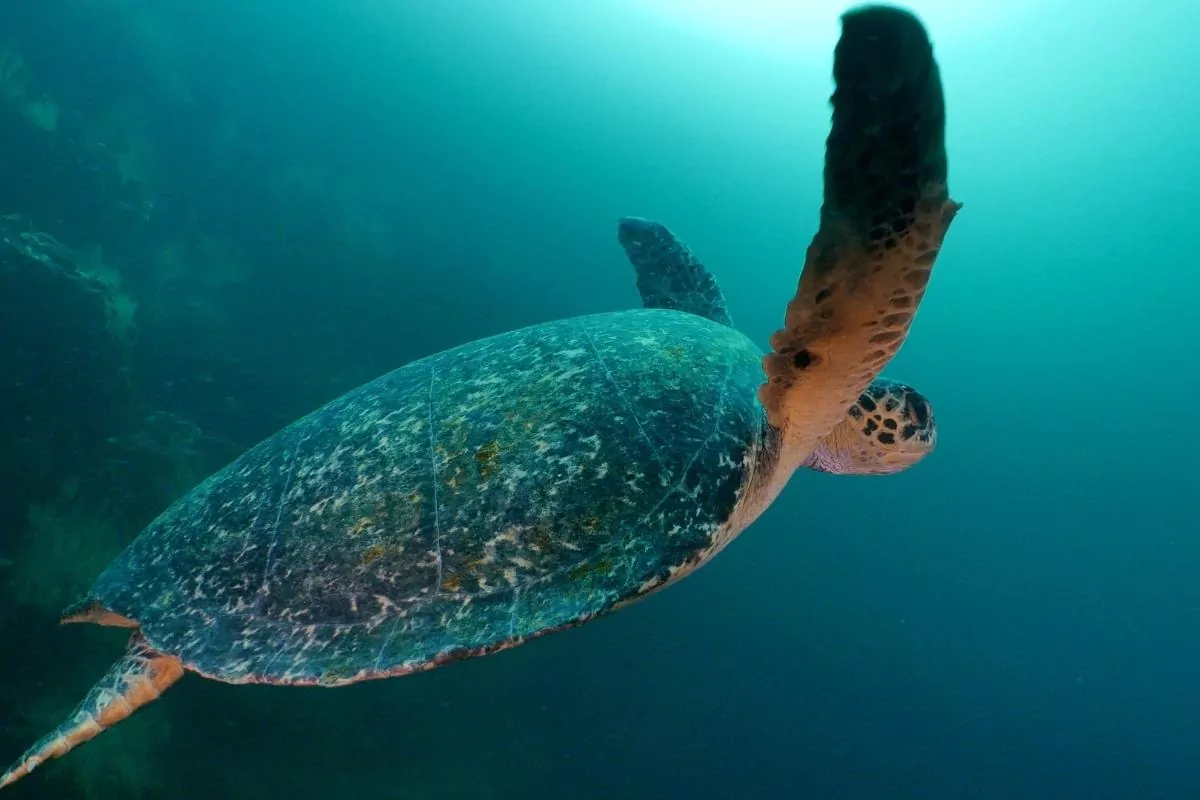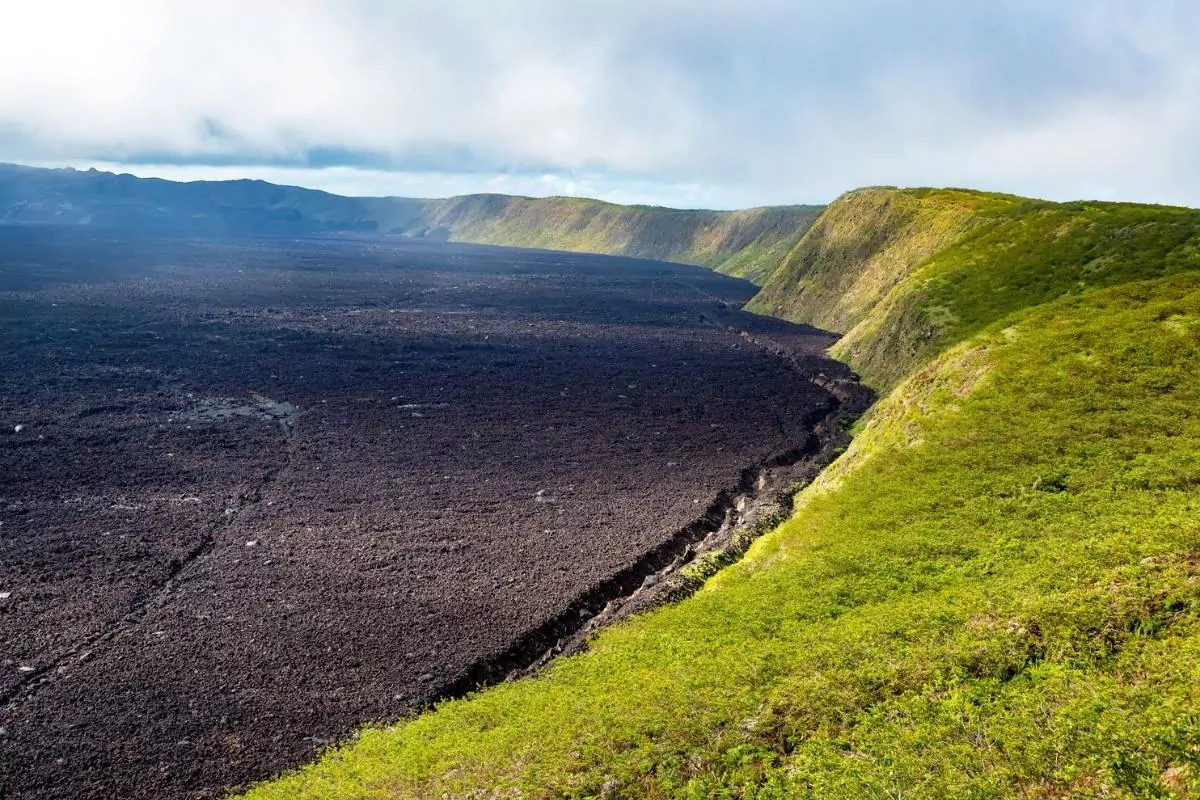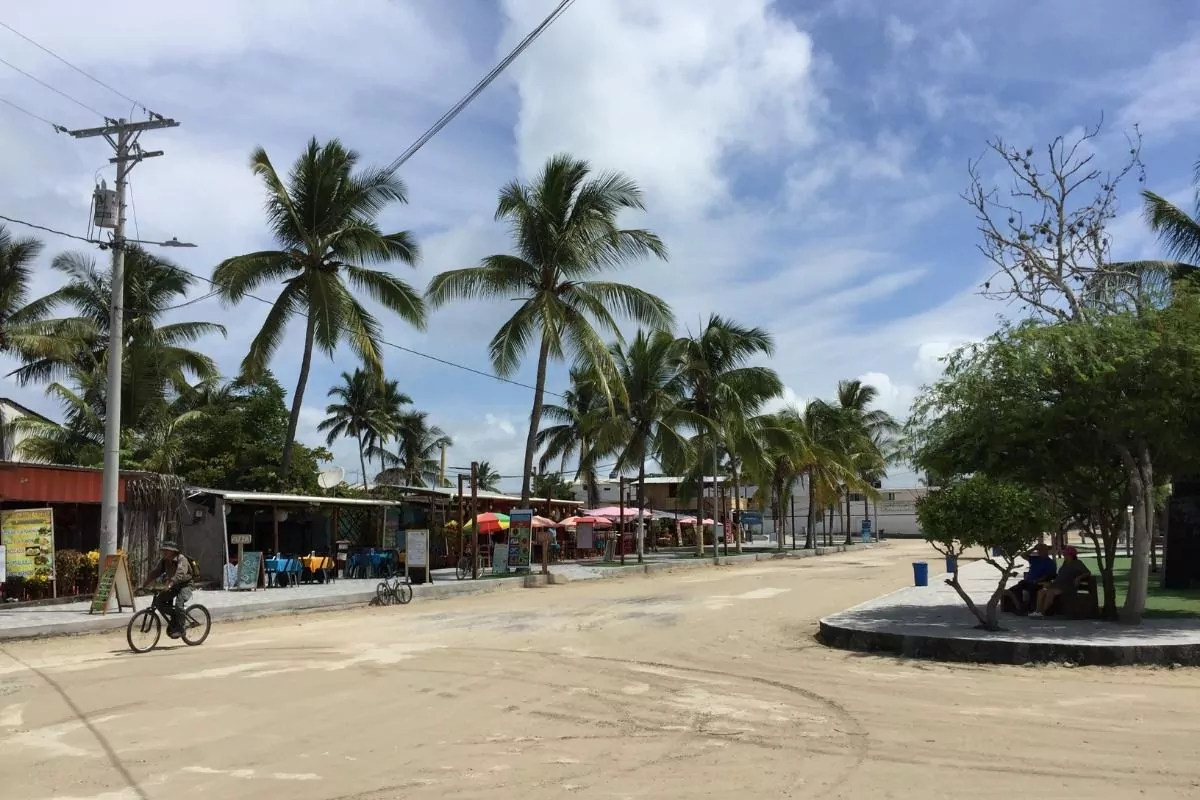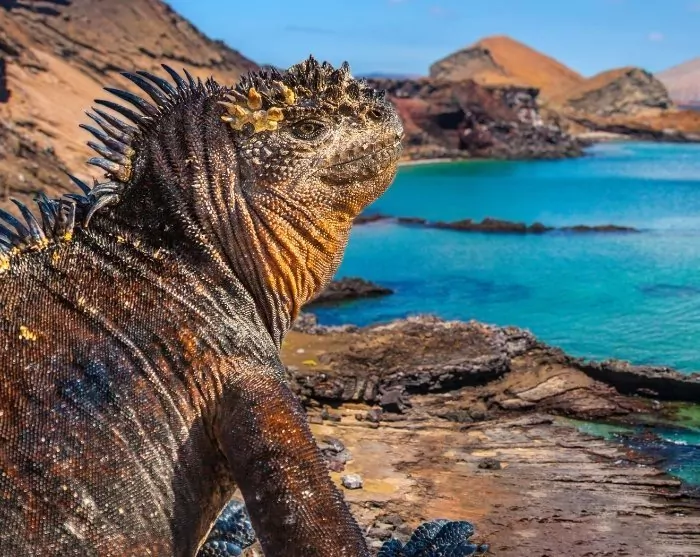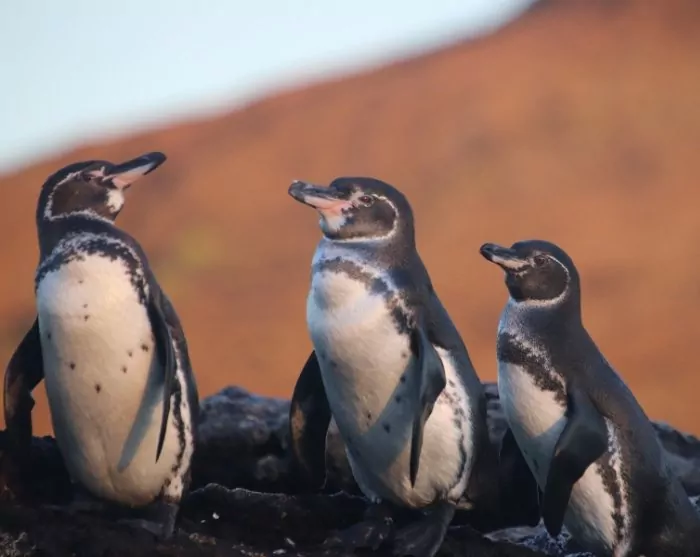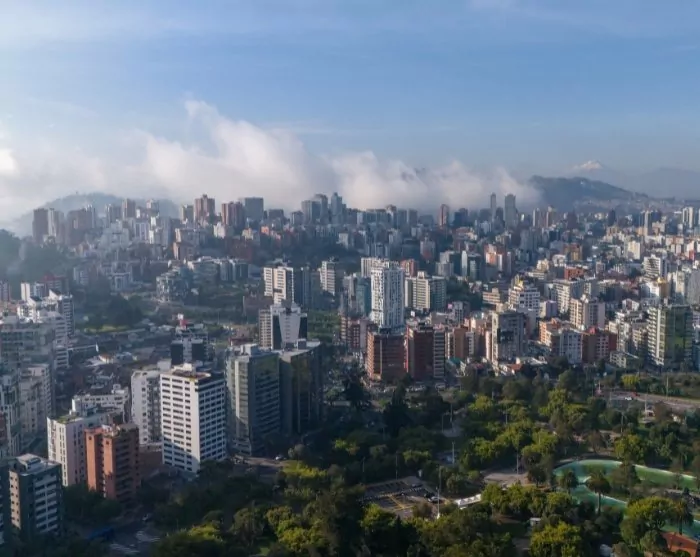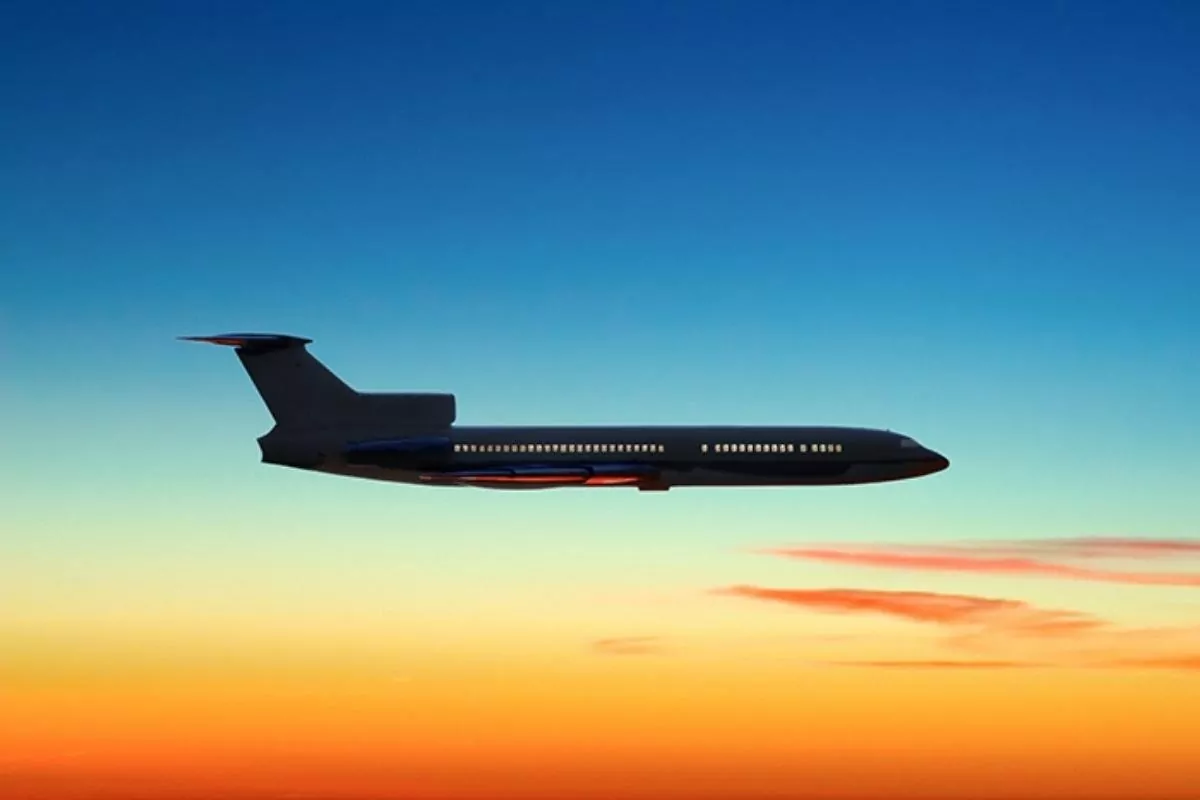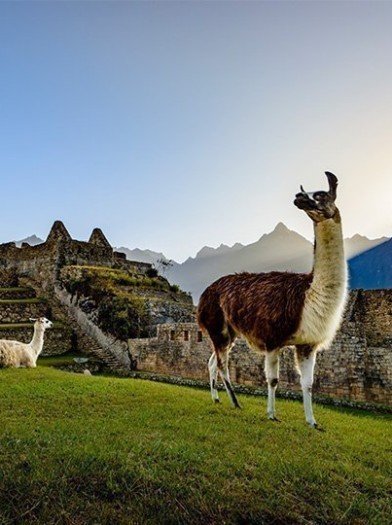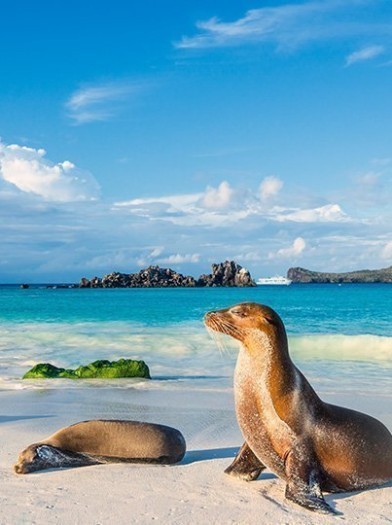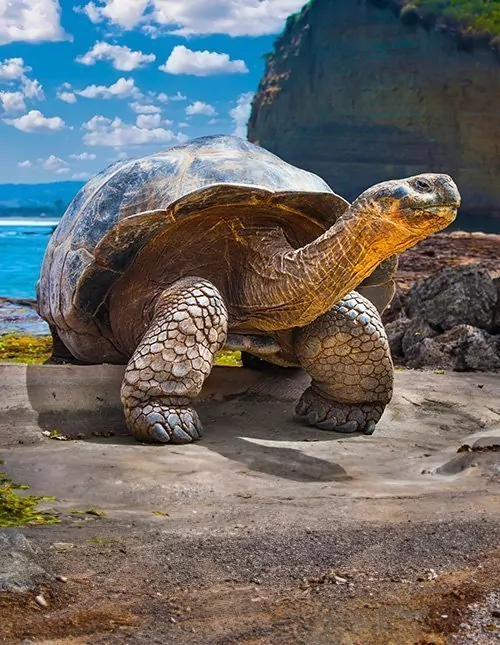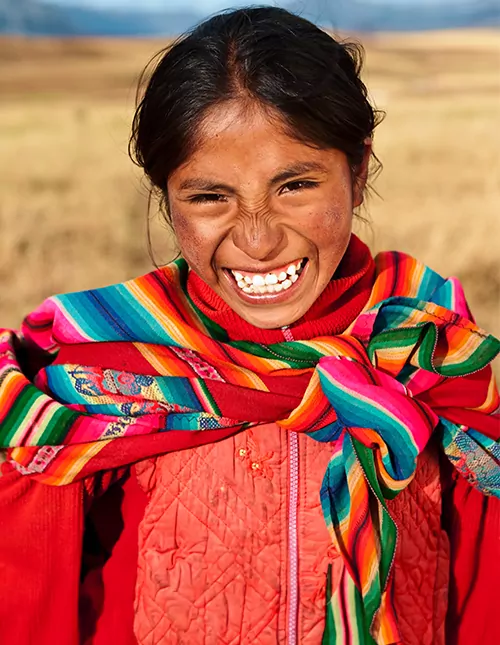
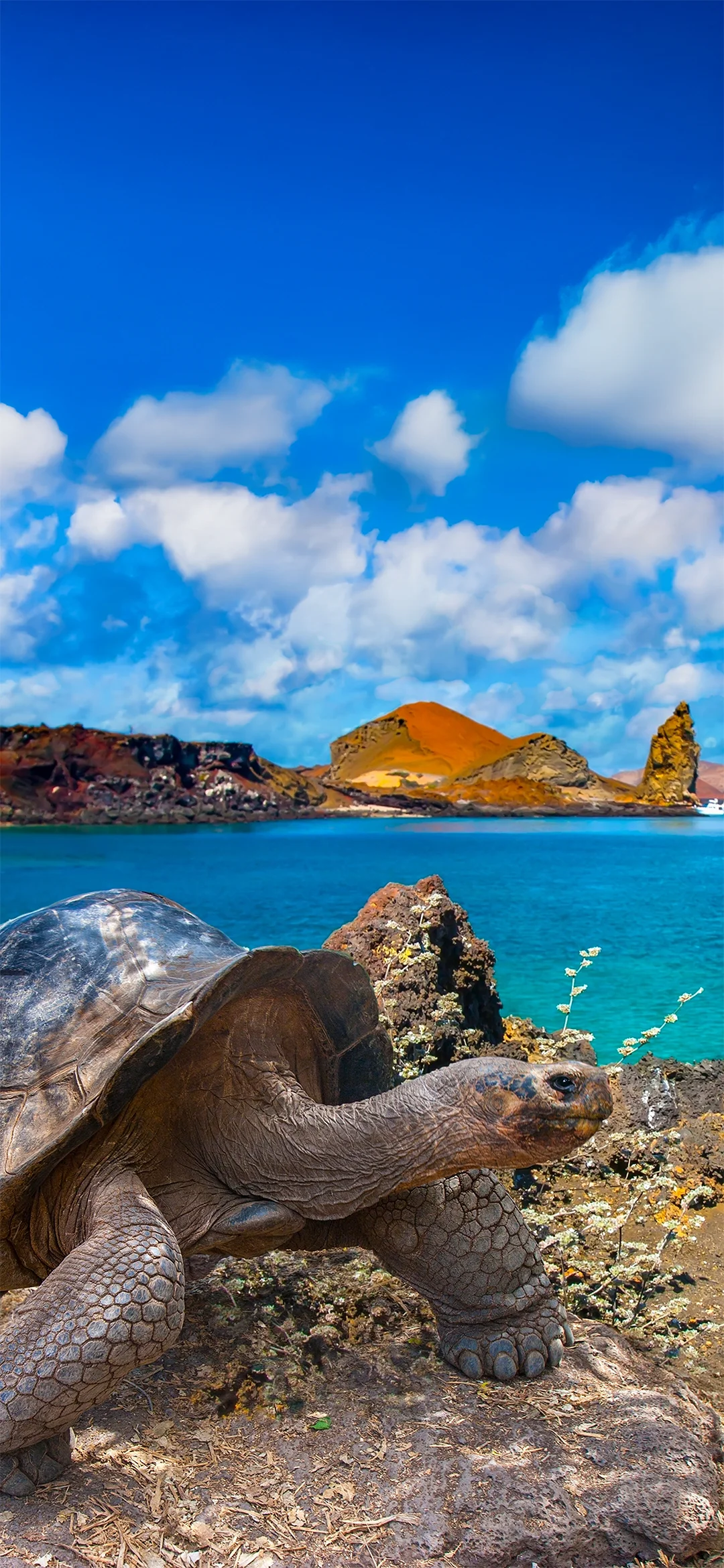
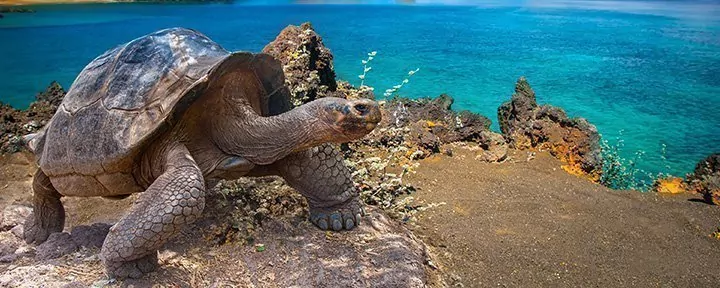

17 days
Peru & Ecuador with island hopping in Galapagos
Wonderful experiences await in Peru & Ecuador, with visits to the old Inca capital Cusco, the Inca ruins Machu Picchu, Ecuador’s capital Quito and the fairytale Galapagos Islands with their indescribable wildlife.
Confidence Guarantee - Read more here
What is included in the price?
This package includes the following
- Flights from chosen airport to Lima and home from Quito with connecting flights along the way
- Domestic flights in Peru: Lima – Cusco
- Flights from Peru to Ecuador: Cusco – Quito
- Domestic flights in Ecuador: Quito – Baltra (Galapagos) round trip
- Transfer to/from airports
- Train: Ollantaytambo – Aguas Calientes – Cusco
- Return crossing from Santa Cruz – Isabela
- 15 nights at good hotels, including breakfast
- 1 x lunch (day 10)
- Individual tour, where all excursions take place in small, international groups with local, English-speaking guides
- ATOL certificate included
- 24-hour manned emergency hotline throughout the tour
- Departure guarantee – the price is valid when at least 2 people travelling. Please ask for a price if you are travelling alone.
- Possibility of daily departure
Extensive excursion package:
- Guided tour of Cusco
- Excursion to the Sacred Valley
- Guided tour at Machu Picchu
- Guided tour of Quito including visit to the equator
- Galapagos – excursion on the island of Santa Cruz with a visit to lava tunnels, the Los Gemelos sinkholes, Hacienda Primicias, where the large Galapagos tortoises live in the wild, and the Charles Darwin Research Station
- Galapagos – excursion on the island of Isabela with a visit to the historic Wall of Tears, Muro de las Lágrimas, a wetland with fascinating bird life and the Arnaldo Tupiza Tortoise Breeding Center
- Entry to mentioned attractions (except for Galapagos, which is paid for on-site)
The tour in short
This tour combines two fantastic South American destinations: Peru and Ecuador. It will be an unforgettable journey that starts in the ancient capital of the Incas, Cusco, which is a treasure trove of architectural structures and ruins from both the Inca era and the Spanish colonial masters. You drive along winding mountain roads through the Andes to the Sacred Valley and finish with a visit to the most famous Inca ruin of them all: Machu Picchu.
From here, the tour heads to the Ecuadorian capital, Quito, which is also scenically located in the Andes, surrounded by mountain peaks and volcanoes. Here, you will, among other things, go on an exciting guided tour of the UNESCO-listed Old Town and see all the impressive buildings, squares and cathedrals of the colonial era. You will also experience the equator line, which runs through the country, just north of Quito.
The adventure ends in warm tropical surroundings with island hopping in the magical Galapagos Islands. You will visit two of the archipelago’s unique islands: Santa Cruz and Isabela. Spectacular nature awaits you here in the form of lush highlands, rugged volcanic landscapes and beautiful, pristine sandy beaches. And we guarantee that you’ll be overwhelmed by the abundant wildlife that is out here. Meet, for example, the giant Galapagos tortoises, the playful sea lions, the monster-like sea iguanas and many more.
Why choose this tour
- Combine two of South America’s most exciting destinations on the same tour: Peru & Ecuador
- Experience the magic of the Andes in the old Inca capital, Cusco, and visit the impressive Inca ruin, Machu Picchu
- Walk among gorgeous colonial buildings and experience the equator line, La Mitad del Mundo, in the Ecuadorian capital, Quito
- See tortoises, sea lions, sea iguanas and more on your final island hop in the unique Galapagos Islands
Our tours always include
- All international and domestic flights
- All accommodations
- All specified excursions and activities
- 24/7 telephone – We’re with you all the way
Detailed Itinerary
Day 1:
Departure from your chosen airport and arrival in the Peruvian capital, Lima
Today, you’ll be departing via your chosen airport and heading to Peru with connecting flight(s) on the way.
You’ll arrive in the capital Lima late in the afternoon, so for practical reasons, you’ll be accommodated in a comfortable airport hotel, as you’ll be flying on to Cusco, the ancient capital of the Incas, the very next morning.
The hotel is within walking distance of the airport terminal, so you can walk over to the hotel after picking up your luggage.
Day 2:
Flight from Lima to Cusco (3,399 metres) – guided tour of Cusco
This morning, you’ll be flying on to Cusco, which is scenically situated in a gorge in the Andes at an altitude of 3,399 metres. It’s a short flight of around an hour and 15 minutes, with a spectacular approach and landing with high mountains on both sides. You’ll be picked up at the airport and driven to your hotel, which is centrally located in the cosy city.
You’ll soon find yourself catching your breath in this city, and it’s not just because the streets are steep – the air is noticeably thinner here at such high altitude. Remember to take things slowly while your body acclimatises to the height. Drink plenty of water and perhaps enjoy a cup of coca tea, just like the locals do. This tea, made from coca leaves, is renowned for its positive effects on the body at high altitudes. In the Andes, the coca leaf has always held a central place in indigenous culture and is considered a sacred plant, used to combat hunger, cold, fatigue, and stomach aches. However, do bear in mind that coca leaves must never be taken home or onward on your travels.
In the afternoon, an exciting city tour awaits you in and around Cusco, where you can really experience why this city is historic and special – and has been on a UNESCO World Heritage Site since 1983 for that reason.
On the tour, you’ll visit the city’s lively central square, Plaza de Armas, which the Incas called Haucaypata or “place of the Warriors” and where many important events have taken place. Cusco Cathedral is also located here, built during the colonial era using stones from the Sacsayhuamán Inca complex on top of the former Inca palace, Viracocha. The cathedral is a fine blend of fine Inca stone masonry and Spanish Renaissance architecture.
You’ll also visit the Inca sun temple, Koricancha, the Q’enqo sanctuary, the Puka Pukara ruin, the Tambomachay baths and the important military complex Sacsayhuamán, which enjoys a beautiful location with a wonderful panoramic view over Cusco. The complex is a prime example of the Incas’ formidable architectural skills with its impressive double walls built of solid stones of up to 4 metres, which are cut to a perfect fit. Duration of the tour: approx. 5 hours
The tour then heads back to Cusco, where the evening is yours to do as you please.
Accommodation:
Possible upgrades:
Day 3:
Excursion to the Sacred Valley – Ollantaytambo (2,792 metres)
Today, you’ll be making your way to the Urubamba Valley, best known as the Sacred Valley of the Incas. You’ll need to pack a small rucksack with clothes for the next 3 days, as you’re only allowed to bring 8 kg of luggage with you on the train ride to/from Aguas Calientes when visiting Machu Picchu. The rest of your luggage can be stored safely at the hotel until you return.
From Cusco, you’ll travel by bus along winding mountain roads towards the small town of Pisac. Along the way, you’ll pass farmland, rushing rivers, and dramatic mountain peaks – some even capped with snow. There will be a stop at a textile workshop, where you’ll see a demonstration of their handicraft production. In Pisac, you’ll visit the fascinating archaeological site of the same name, as well as the town’s large market. Here you’ll have the chance to purchase everything from Peruvian wool sweaters and vibrant bags to charming dolls and jewellery.
After lunch (at your own expense), the tour continues to the charming town of Ollantaytambo, which is one of the only towns in Peru that still has its original Inca walls and street grid with old, long stone walls and narrow cobbled streets. The town is best known for its magnificent Inca fortress, which consists of steep terraces, temples and military installations. This is where the Incas managed to defeat the Spanish in 1536, albeit temporarily.
After the guided tour, you’ll leave the group (which will drive back to Cusco), check into your hotel in Ollantaytambo, and have the rest of the day to yourself.
If you’re lucky, and it’s a clear evening, you can look forward to a magical starry sky.
Day 4:
Ollantaytambo - Aguas Calientes (2,040 metres)
After breakfast, you’ll head down to the station and board the train to the small town of Aguas Calientes, which is located at the foot of the Inca complex, Machu Picchu. Enjoy the scenery as the train weaves its way through the valley along the Urubamba River with mountains on either side. The scenic trip takes about 1.5–2 hours.
At the station in Aguas Calientes, you’ll be fetched and accompanied to your hotel. You have the rest of the day to yourself in the small town. You might like to go to the town’s hot springs for a spot of pampering, and relax in the naturally heated pools. Remember to bring swimwear and a towel.
You can also purchase as an add-on an exciting 1-day Inca trek to Machu Picchu if you feel like embarking on even more adventures.
Accommodation:
Possible upgrades:
Optional tours:
Day 5:
The Inca city Machu Picchu (2,430 metres) – Cusco (3,399 metres)
You’ll be getting up early today, but what does that matter when you’re off to experience the legendary ruin complex Machu Picchu!
Machu Pichu sits on a steep, green ridge in the Urubamba Valley and is framed by the fairy-tale cloud forest, green mountains and snow-capped peaks further out on the horizon. American explorer Hiram Bingham is said to have been the first to discover Machu Picchu, on 24 July 1911. This is not entirely true, however, but it is thanks to him that the world became aware of the fairy-tale Inca city. The Spanish never discovered – or got to loot – Machu Picchu, so the complex has a special cultural significance and is considered sacred.
Machu Picchu was built in the mid-15th century during the heyday of the Inca Empire but was abandoned less than 100 years later, most likely due to a smallpox epidemic. Before it was abandoned, the city housed senior officials, priests, servants and virgins, who were chosen to devote their lives to the Sun God. It was a magnificent city with temples, homes, streets, fountains and aqueducts, through which water still flows down to the many agricultural terraces on both sides of the mountain.
You’ll be picked up from the hotel and, together with your guide, you’ll take a bus up the steep mountainside (approx. 30 mins) to the entrance. A 2-hour long guided tour starts here, when you’ll experience the impressive buildings and gain an interesting insight into the culture and history of the Incas.
As an add-on, you can also purchase a hike to the top of one of the surrounding Andes Mountains and experience fantastic panoramic views down over the Inca Empire. Choose from three different mountains: The Huchuy Picchu Mountain, the lowest and easiest to climb; the Huayna Picchu Mountain, which is steep and more challenging; and, finally, the Machu Picchu Mountain, which is regarded as the most demanding hike of the three.
You’ll then take the bus back to Aguas Calientes, where you can have lunch and relax before returning to Cusco by train. Your guide will let you know the precise time after the Machu Picchu tour.
On your arrival in Cusco, you will be driven to your hotel.
Transport time from Aguas Calientes back to Cusco (train + bus) Approx. 3.5 hours.
Accommodation:
Possible upgrades:
Day 6:
Cusco on your own (3,399 metres)
There are no activities planned for today, so you can enjoy a leisurely morning at the hotel and then explore the winding streets of Cusco, which are always buzzing with life, on your own. You’ll encounter other travellers, locals on their way to or from work, women dressed in traditional costume selling some of their beautiful, colourful crafts, and children trudging through the streets with cute lambs or llamas, who will be more than happy to pose for a picture for a shilling.
If you’d like to experience even more of the magical Andes Mountains, we recommend purchasing an excursion to the magnificent Rainbow Mountain. This mountain is just one of the many beautiful, rainbow-coloured mountains just outside of Cusco, whose colours are due to the mountains’ combination of colourful minerals. It is a truly unique experience to see a mountain in so many wonderful colours.
We also offer an excursion to the Inca ruins at Moray and the salt mines in Maras, or how about trying your hand at a small cookery class where you gain an exciting insight into Peruvian cuisine?
Enjoy your last evening in the city at one of the cosy restaurants, where you can taste some of the country’s specialities such as “lomo saltado”, which is a dish made with alpaca meat and vegetables, or, if you are brave, “cuy”, a dish made from grilled guinea pig. And you definitely have to try a “Pisco sour”, which is the country’s national drink.
Day 7:
Flight from Cusco to Quito, Ecuador’s capital (2,850 metres)
It’s time to bid farewell to Peru and begin the second part of your exciting tour, which takes you north to Ecuador’s capital, Quito.
You’ll be picked up from your hotel in Cusco and driven to the airport. From there, you will fly to Quito with connecting flights along the way.
Quito is beautifully nestled in the Andes at an altitude of 2,850 metres, and on a clear day, you can glimpse the stunning cone-shaped Cotopaxi volcano, topped with snow, in the distance. Quito is one of the world’s highest capitals, but since you’re coming from Cusco, you’re already accustomed to being at such elevations. Nonetheless, keep drinking plenty of water and taking it easy.
Upon arrival in Quito, you’ll be met by an English-speaking guide and driven to your hotel, which is located in Quito’s delightful old town. The drive takes about an hour, though as with any major city, traffic may affect this timing. En route, the guide will provide an overview of your tour in Ecuador and give you a welcome letter with a QR code granting access to all the practical tour information, including start times for your prebooked excursions and transfers, as well as your domestic flight tickets to the Galapagos.
Once you’ve arrived at the hotel, you have the remainder of the day at your leisure. You can take a brief walk around the old town and dine at one of the cosy restaurants.
Day 8:
Guided tour of Quito including a visit to the equator (2,850 metres)
After breakfast, you’ll be going on a guided tour of Quito Old Town, which is a UNESCO World Heritage Site due to its beautiful, well-preserved historic buildings, squares and, not least, colonial cathedrals.
You’ll visit Plaza de la Independencia, which is surrounded by important buildings such as the Presidential Palace, the Government Building, the Archbishop’s Palace and the Metropolitan Cathedral of Quito.
You will also visit Quito’s oldest church, the Iglesia San Francisco, and the most famous church, La Compañía, the inside of which is decorated with the purest gold leaf.
From here, you will drive up to El Panecillo hill, where the impressive 45-metre-high aluminium statue, Virgen del Panecillo, stands with Quito Old Town as a beautiful backdrop. There is a fabulous view of the city from up here.
From the old town, you’ll be driven to the north of Quito to La Mitad del Mundo, which translates as the middle of the world. The equator is located here, and it’s a must when you visit Quito to try standing with one foot in the northern hemisphere and one in the southern hemisphere. You’ll visit the magnificent 30-metre-high equator monument and the small nearby museum Intiñan, where you’ll be able to try fun experiments where the earth’s gravity and magnetic forces are tested. Both places claim to be where the true equator lies, and due to inaccurate measurement methods in the olden days, the location of the beautiful, big equator monument may well be a little off…
On the tour, you’ll also pass the characteristic 115-metre-high basilica, the Basílica del Voto Nacional, which is built in neo-Gothic style and is the largest of its kind in the Americas.
You have the rest of the day to yourself.
Day 9:
Quito on your own (2,850 metres)
There are no activities planned for today, and you can choose to purchase extra excursions from home or explore the city on your own.
If it’s a cloudless day and your body is coping with the altitude, you might like to head up to the Cruz Loma viewpoint located on the Pichincha volcano. A 2.5-km cable car ride, known as TelefériQo, takes you up to an altitude of almost 4,100 metres, giving you a unique panoramic view of Quito and the surrounding mountains and volcanoes.
If you would like to see more of Ecuador’s impressive volcanoes, we recommend purchasing an excursion to Cotopaxi National Park, where you can get right up close to the beautiful 5,897-metre-high snow-capped cone volcano Cotopaxi and the rugged Andean landscape that surrounds it.
If you wish to experience Ecuador’s indigenous culture and craft traditions, you can embark on a day excursion to the Imbabura province north of Quito, known for its beautiful landscape with idyllic lakes, majestic volcanoes, and the celebrated Otavalo market where you can purchase colourful blankets, scarves, and ponchos.
Just a couple of hours from Quito lies the Mindo Valley, which is known for its beautiful nature and cloud forest with its profusion of birds – 500+ registered species.
Day 10:
Flight from Quito to Galapagos – excursion on the island Santa Cruz
The Galapagos Islands are nothing short of magical! A tour to the Galapagos Islands is like visiting a whole different world. You’ll discover flora and fauna here not found elsewhere in the world. The islands are located approx. 1,000 km from the mainland, and it takes around 2.5 hours to fly there from Quito.
You’ll be picked up from the hotel and driven to the airport, where you will be required to pay for a Transit Control Card (cash) before you can check in. Upon your arrival at Baltra Airport, you will be required to pay for entry to Galapagos (cash). Your guide will be waiting for you outside the airport, and you will take the bus together down to the Itabaca Channel, where a boat will take you across to the main island, Santa Cruz.
The first stop is Los Gemelos, also known as the twin craters, which are two enormous sinkholes right next to one another. Around the holes, you will experience a profusion of birds in the lush forest of sunflower trees (scalesia). After a short walk around the holes, you head to the Hacienda Primicias ranch, where your first amazing animal experience awaits. This is where the world’s largest tortoise, the Galapagos Tortoise, lives in the wild. Getting right up close to the huge animals, which can weigh up to 250 kg and live to an age of 100+, is a wonderful experience. Your lunch (included) is enjoyed in the exotic surroundings of the ranch.
The Galapagos Islands are all created by volcanic activity, and in several places you can experience lava tunnels, which are a kind of volcanic cave created by solidified lava. Your guide will take you into one of these special lava tunnels and tell you much more about the creation of the islands.
The last stop of the day is the Charles Darwin Research Station, which was established in 1964 for the purpose of research and education. Here, you will be given an introduction to the unique flora and fauna of the Galapagos Islands as well as an exciting insight into the many important projects that scientists, biologists and volunteer helpers are involved with to preserve the fragile nature of the islands.
You have the evening to yourself to explore the pleasant port, Puerto Ayora, which buzzes with life and shops, nice cafés and restaurants.
Days 11-12:
Puerto Ayora on your own
You have the next 2 days to yourself in Puerto Ayora. We recommend that you purchase a boat trip to one of the nearby uninhabited Galapagos islands, all of which offer amazing scenery and diverse wildlife.
There are also many activities you can do yourself. If you’re up early, then head to the small fish market on Avenida Charles Darwin, which attracts hungry, curious sea lions and pelicans hoping for a small snack.
We also highly recommend packing your backpack, lacing your walking boots and spending the day at the beautiful beach, Tortuga Bay. A tarmacked path leads out to the beach, which starts in the south-western part of Puerto Ayora – a walk of around 45 minutes each way. At Tortuga Bay, you can sunbathe, surf or just observe all the sea iguanas and pelicans that live there. The current can be very strong, so if you want to swim in calm water, you should continue to the end of the beach (around 2.5 km), where the picturesque Playa Mansa beach is located in a small lagoon surrounded by mangrove forest.
You can rent a kayak here and paddle off to explore the quiet lagoon, where you might see sea urchins and turtles coming up to the surface for air before diving back down in search of food. There are no facilities out here, so be sure to bring plenty of water, food and sunscreen for the excursion.
Another excursion option from Puerto Ayora is Las Grietas, which is a “water hole” in a rock fracture where you can swim and snorkel. From Puerto Ayora, you take a taxi boat (roughly 2 USD) to Angermeyer Point, which is around 700 metres from Las Grietas along a small bumpy path, so remember to wear good walking shoes.
If you haven’t been down to the pier in Puerto Ayora yet, stroll down there and see all the reef sharks, rays and sea lions in the shallow water.
Day 13:
Boat to Isabela Island – excursion on Isabela
It’s time to say farewell to Puerto Ayora, as your journey continues to the neighbouring island of Isabela. Isabela is the largest island in the Galapagos archipelago, spanning 4,640 km². However, it’s home to no more than a couple of thousand residents, and you’ll be welcomed by a truly laid-back island vibe. Isabela also hosts the highest point in the Galapagos, the Wolf Volcano, at 1,707 metres.
The boat ride to Isabela takes about 2 hours, and upon arrival, you need to pay a port fee of approximately 10 USD (in cash). You’ll be picked up at the pier and taken for a short drive to your hotel in the main town of Puerto Villamil.
In the afternoon, you’ll embark on an excursion to some of Isabela’s highlights. The tour starts with a visit to the Arnaldo Tupiza Tortoise Breeding Centre, located just outside the town. Here, volunteers work to increase the population of giant tortoises on the island, and you’ll witness hundreds of tortoises of all sizes. Afterwards, your guide will accompany you to an intriguing wetland area where you might spot birds such as stilts, moorhens, and white-cheeked pintails, as well as the captivating flamingos.
Next, a hike awaits to the historic wall, Muro de las Lágrimas (the Wall of Tears). Standing at 25 metres high, the wall serves as a poignant reminder of Isabela’s history. It was constructed between 1945 and 1959 by prisoners from the island’s former penal colony. The hike covers about 7 km across level terrain, so remember to bring comfortable walking shoes, water, and a hat to protect yourself from the sun.
If you prefer not to participate in the hike, inform your guide at the start of the tour, and you’ll be driven back to the hotel after visiting the tortoise breeding centre and wetlands.
You have the evening at your leisure to explore the quaint harbour town of Puerto Villamil, with its sandy main street where you might encounter lazy sea lions lounging on the benches by the water.
Day 14:
Puerto Villamil on your own
You’ll spend the day on your own in Puerto Villamil, where there are many fabulous beaches where you can relax and swim.
A popular walk on the island heads out to the enormous shield volcano, Sierra Negra. The volcano is 1,124 metres high and has a crater with a diameter of more than 9.5 km.
It is also possible to snorkel around Isabela. A great snorkelling experience is to be had at Las Tintoreras, which are some small islands off the coast of Puerto Villamil. Here, fissures in the rocks have made the area beneath the surface a favourite hangout for reef sharks, sea lions, penguins and sea turtles.
Accommodation:
Day 15:
Flight from Galapagos to Quito (2,850 metres)
It’s time to bid farewell to the magical Galapagos Islands. Early this morning, you’ll take a boat from Isabela back to Santa Cruz. Upon arrival in Santa Cruz, you’ll be picked up and driven across the island to the Itabaca Channel and sail over to the airport island, Baltra. Here, a bus awaits to take you the short distance to the airport. The flight back to Quito often takes a bit longer (around 2.5-4 hours), as there is usually a short stopover in the city of Guayaquil.
Upon arrival in Quito, you will be met at the airport and driven to your hotel, located in one of Quito’s charming suburbs close to the airport. The evening is yours to enjoy at your leisure.
Day 16:
Departure day
Your tour is coming to an end. Depending on your flight time, you may have some free time before being picked up and driven to the airport.
Enjoy the hotel’s facilities and relax in the lush garden, where you can unwind on a sun lounger by the pool, reflecting on the many wonderful experiences from your tour.
Day 17:
Arrival back home
You will arrive at your chosen airport carrying unforgettable memories from your tour around Peru & Ecuador.
|
|
When would you like to travel?
Departure dates
All prices shown are per person
Please note that the price of a single room only applies when for at least two people. Please contact us if you’re travelling alone.
Special offers for groups of 3 or more. Request a quote today for more info.
Special offers for groups of 3 or more. Request a quote today for more info.
REVIEWS
Travellers' tales
BEFORE YOU TRAVEL
Good to know
Latin America

Emily Roper
Emily loves to travel and is extremely passionate about helping others achieve their travel dreams.
Opening hours
Monday-Thursday 9-15Friday 9-13
JOIN THE ADVENTURE
Related tours
WHY TRAVEL WITH TOURCOMPASS?
Why choose us
We know your time is precious. That's why we strive to provide personalised, attentive service to ensure your comfort and safety throughout your tour. From the moment you book to the moment you return home, we’re here to handle every detail with the utmost care.
We offer a diverse array of destinations, each promising its own unique story, shaped by its local cultures, fascinating wildlife, and natural beauty.
We design every tour based on the extensive research and first-hand experiences of our travel specialists and experts. Each tour is crafted to showcase the best each country has to offer.
With us, you can rest assured; your journey is in safe hands. We are ATOL certified and a proud member of ABTA, maintaining rigorous standards of quality and service to ensure your complete peace of mind.
